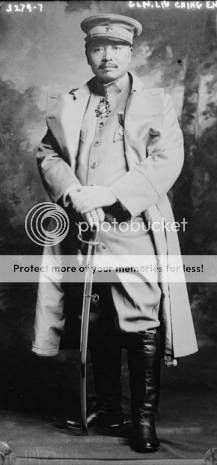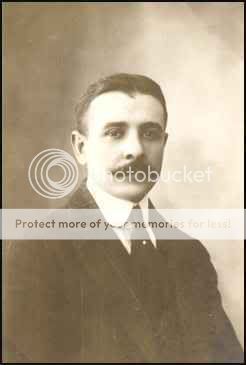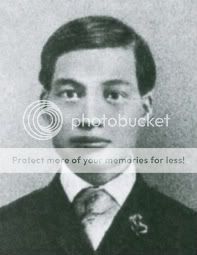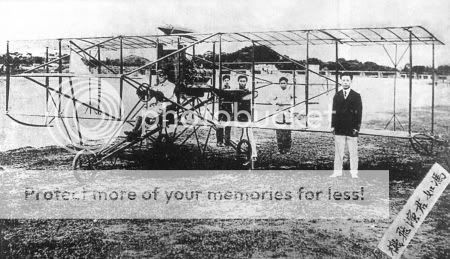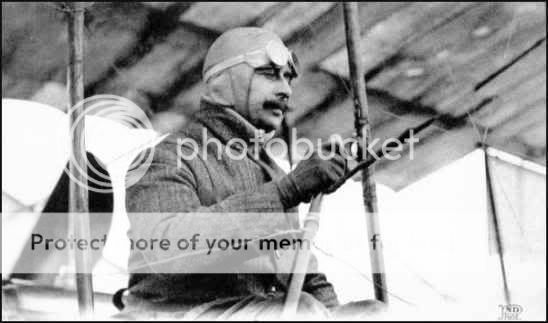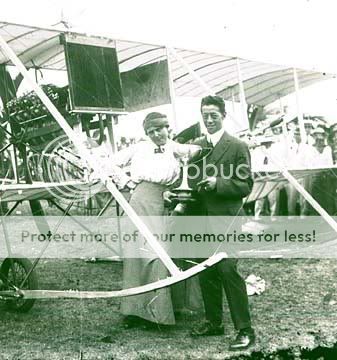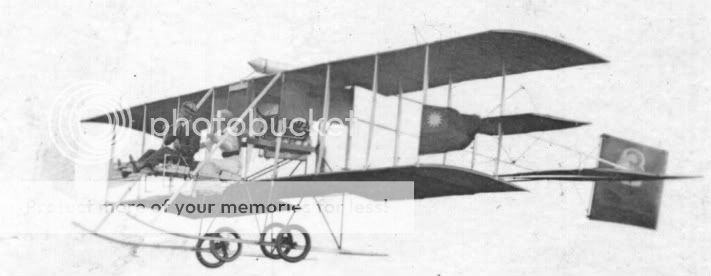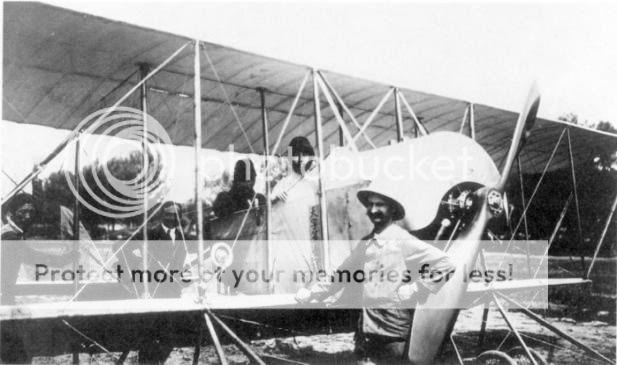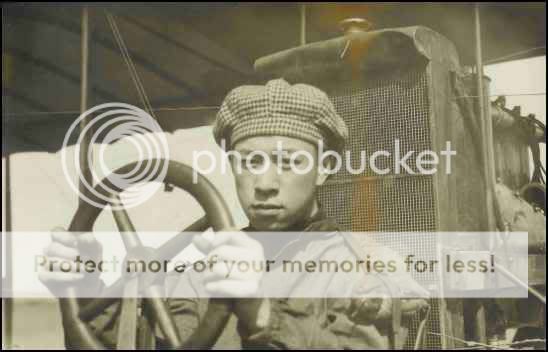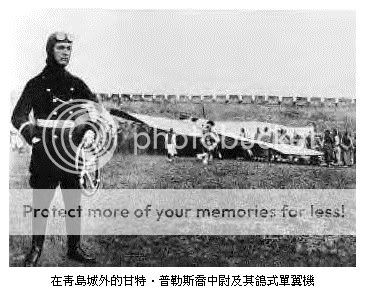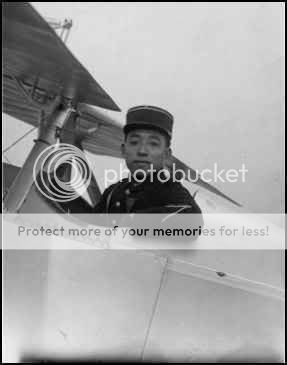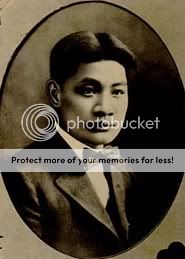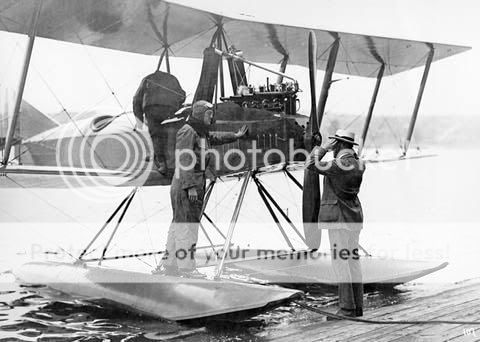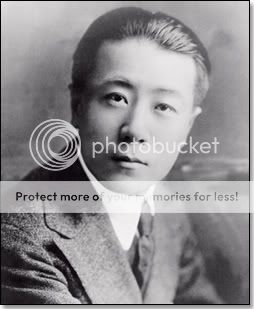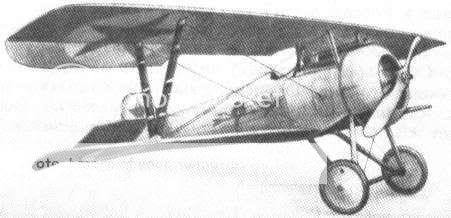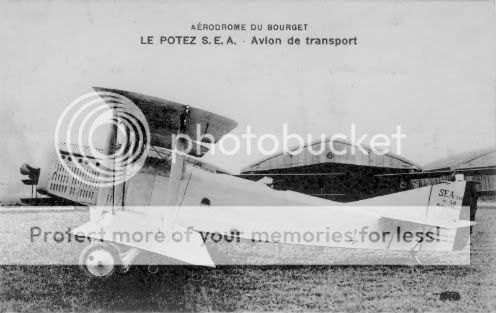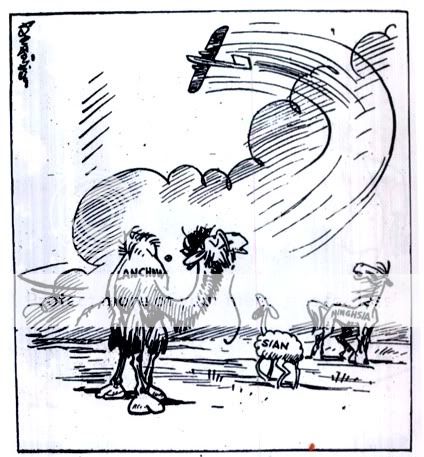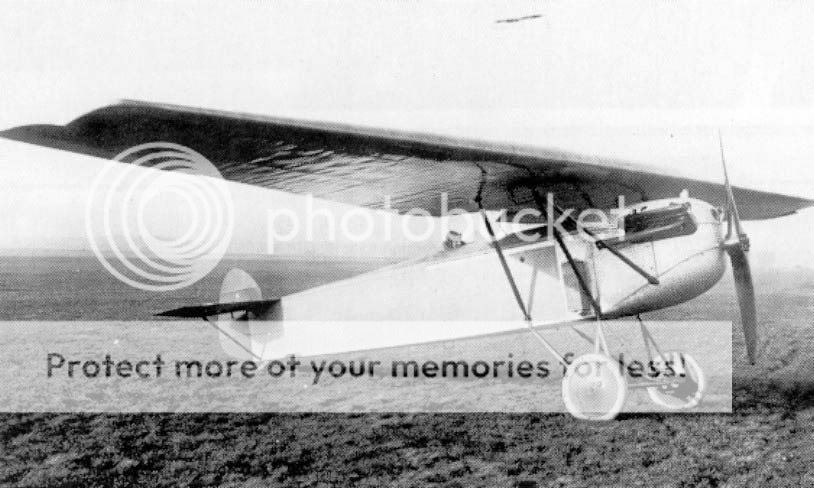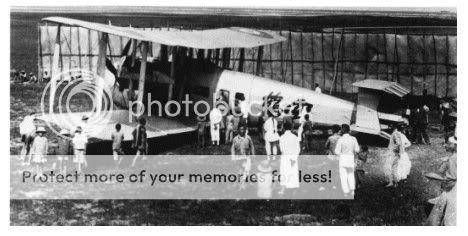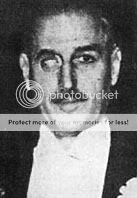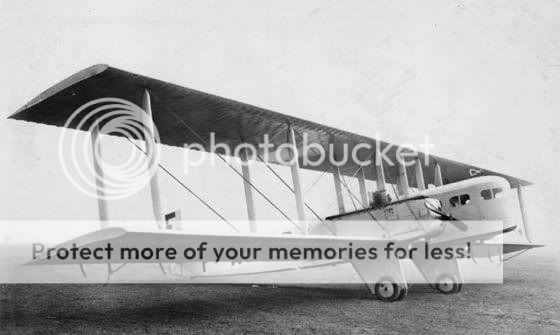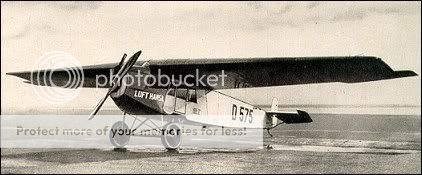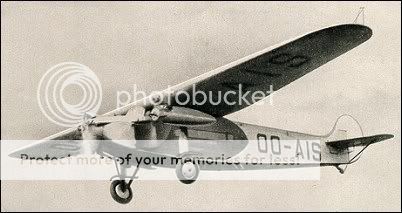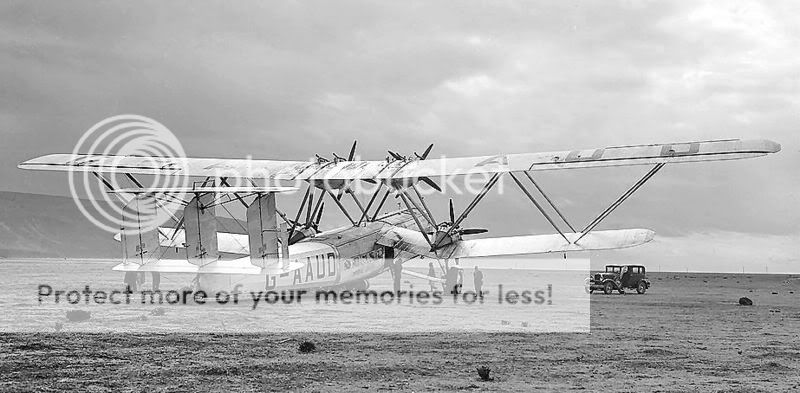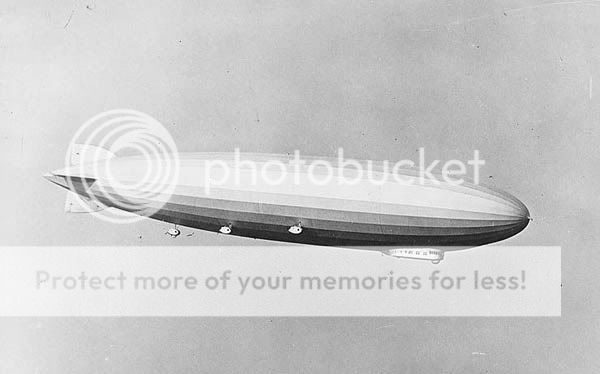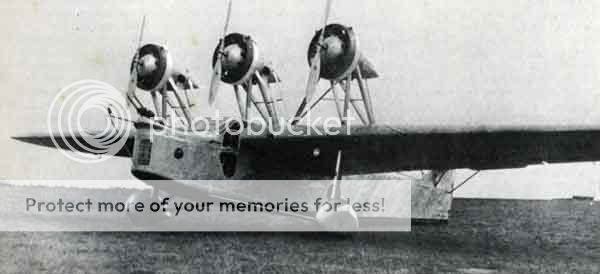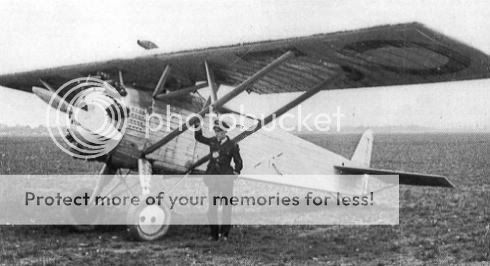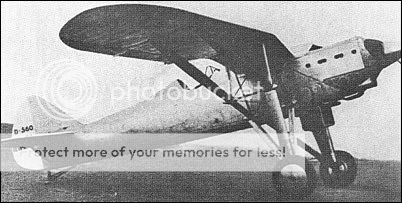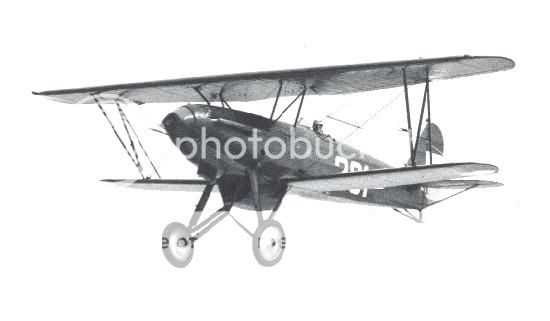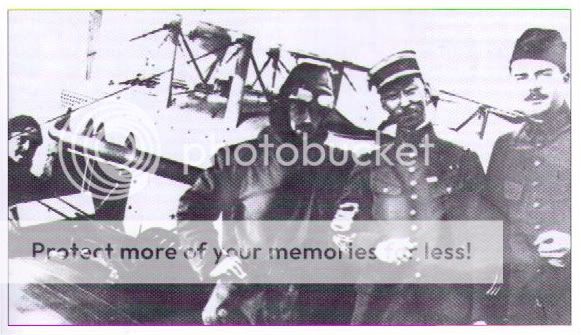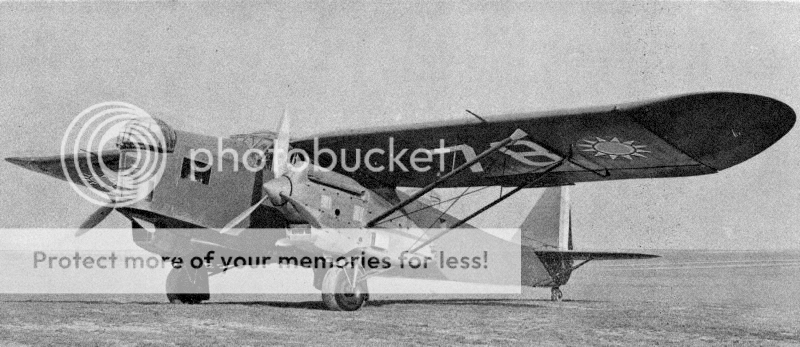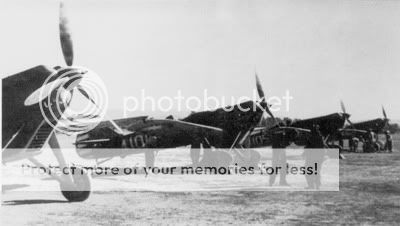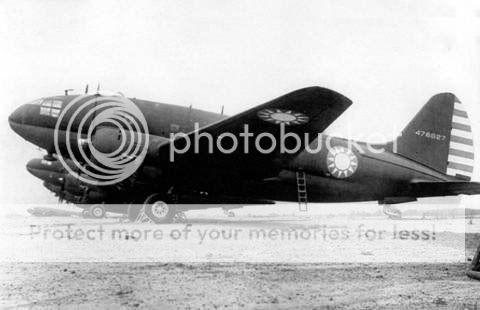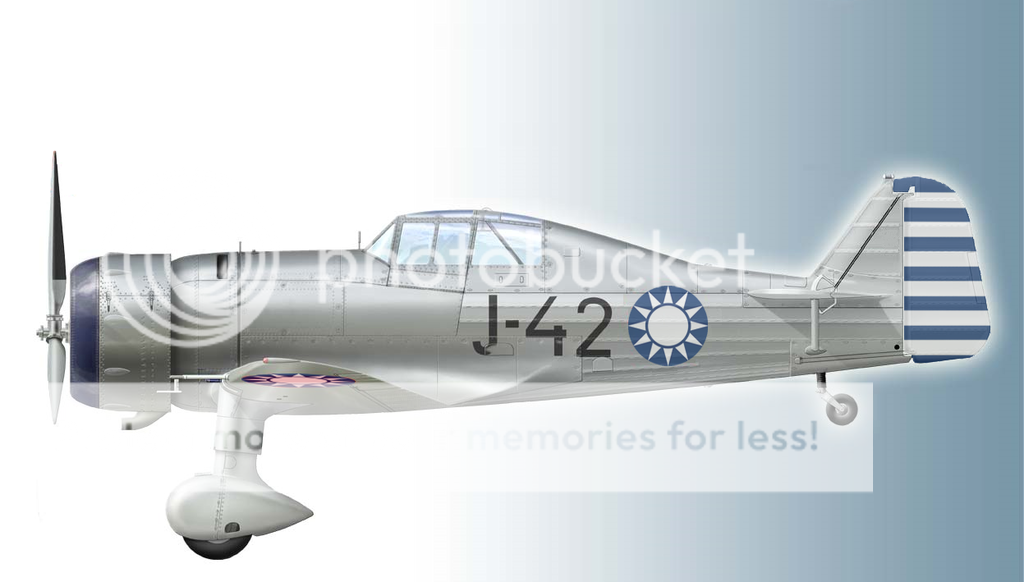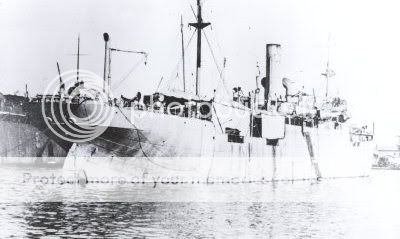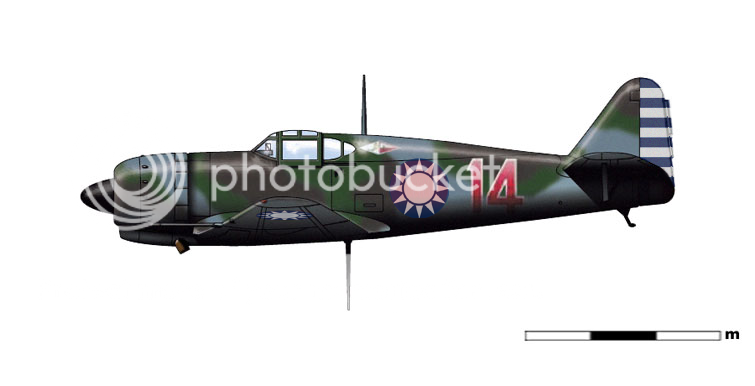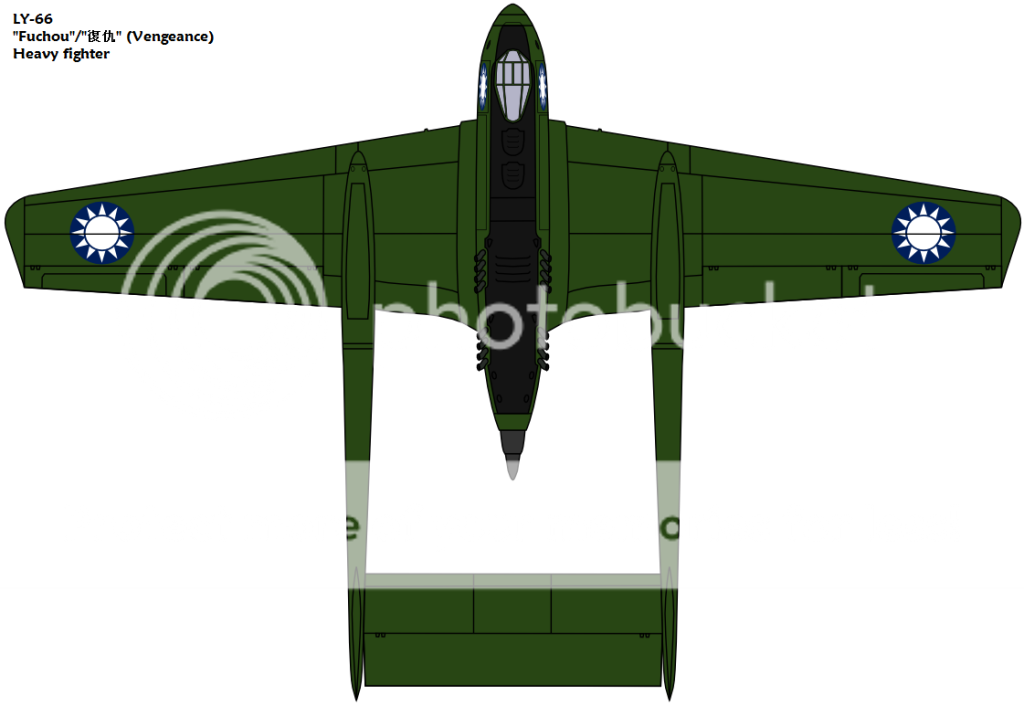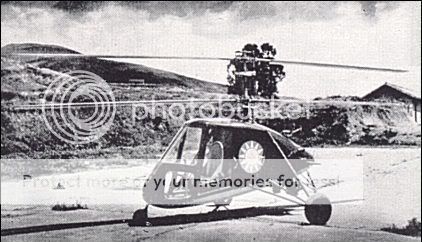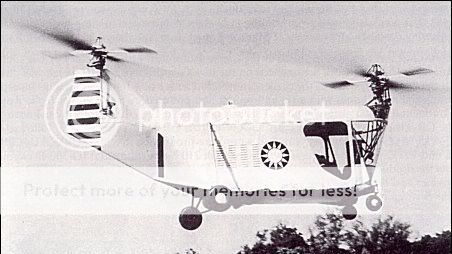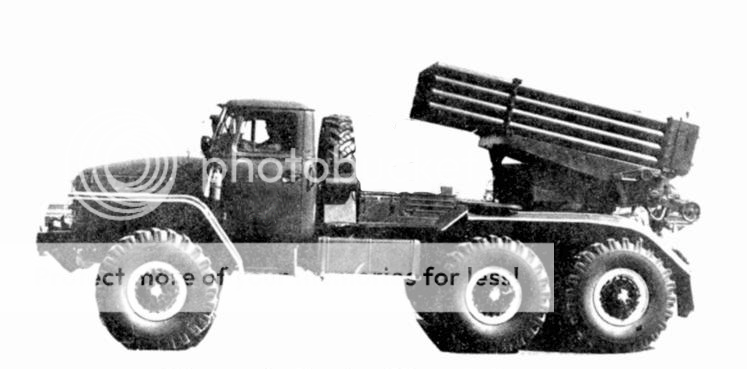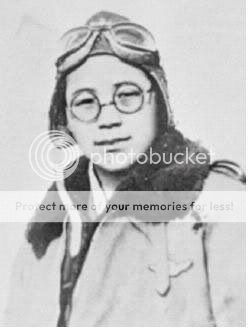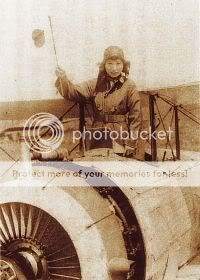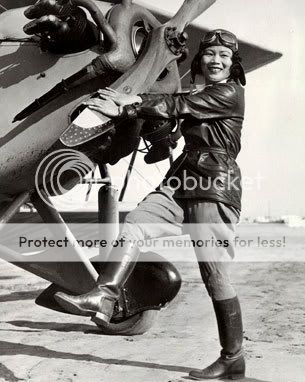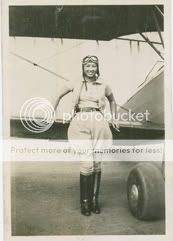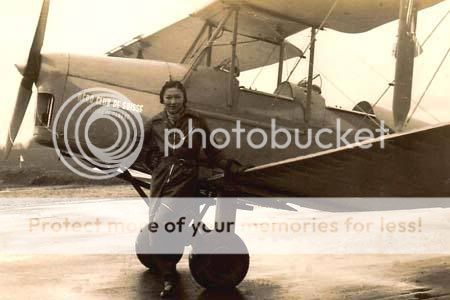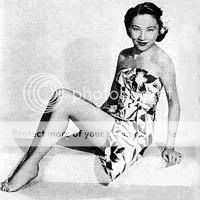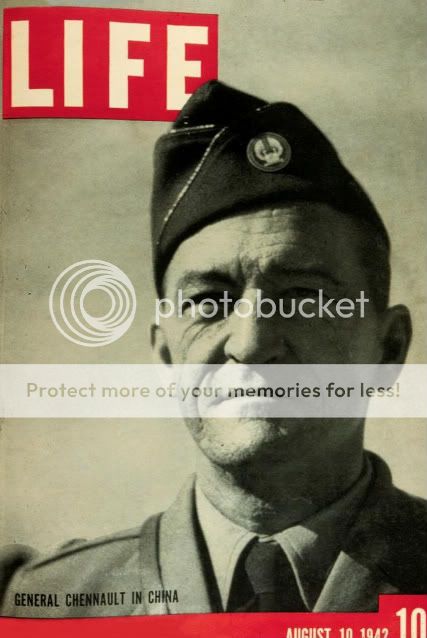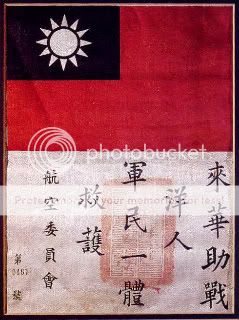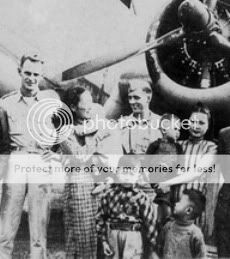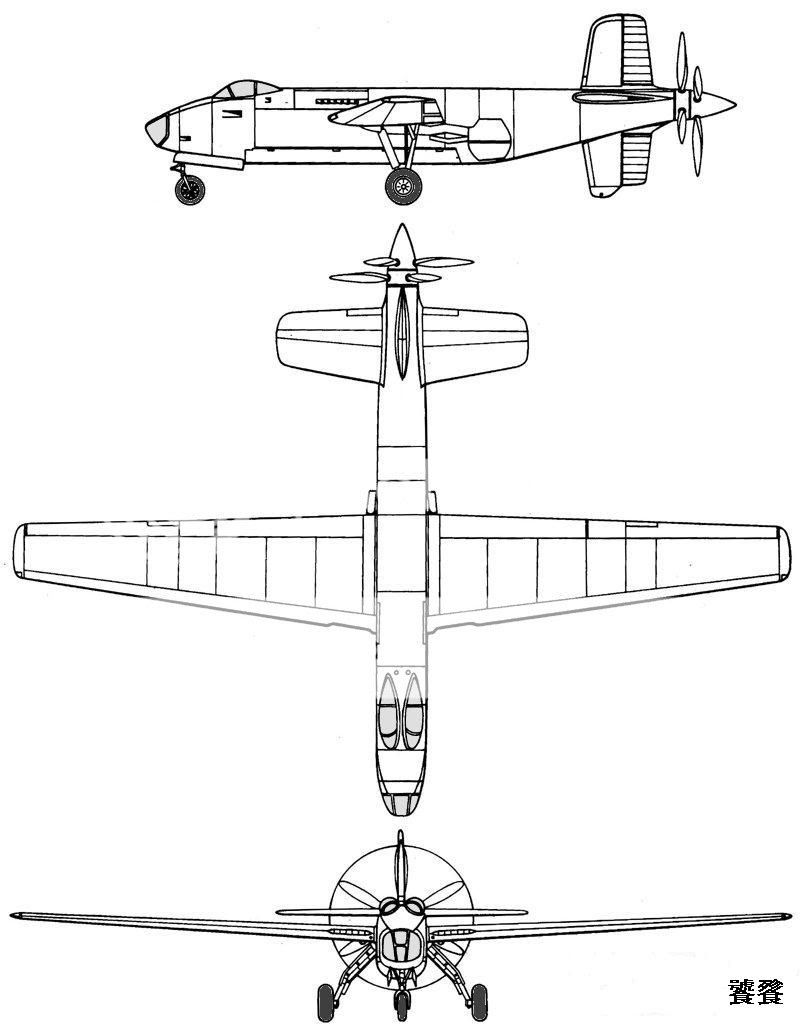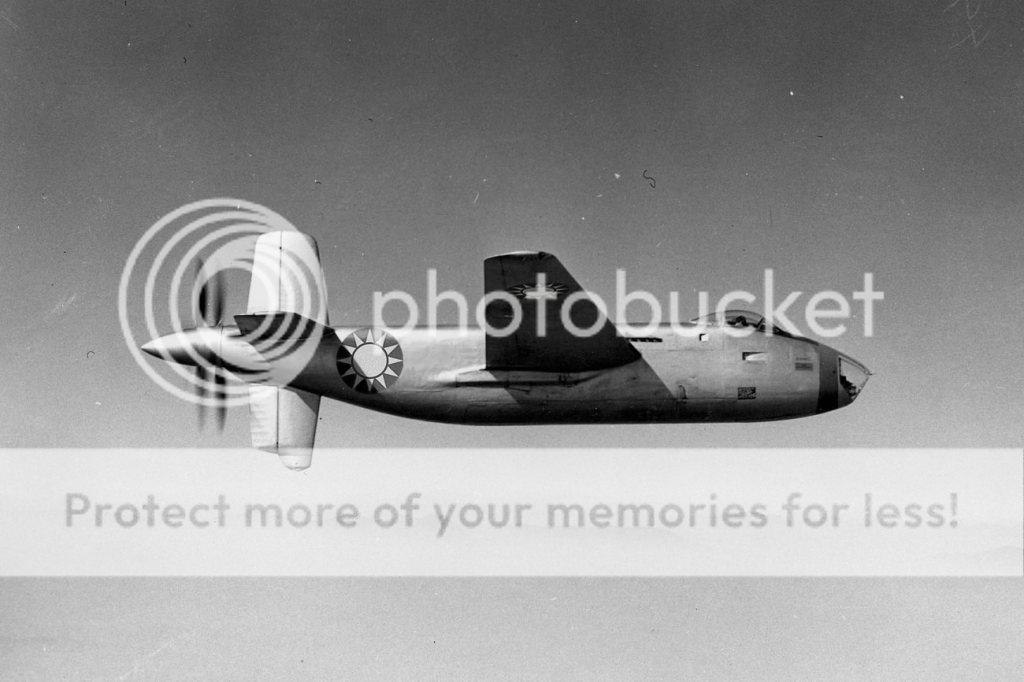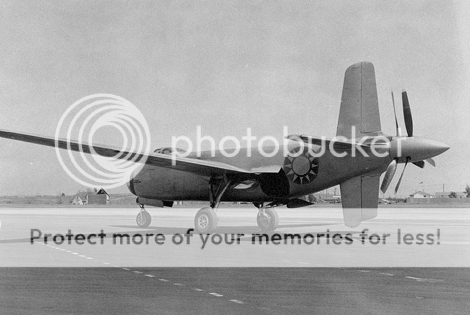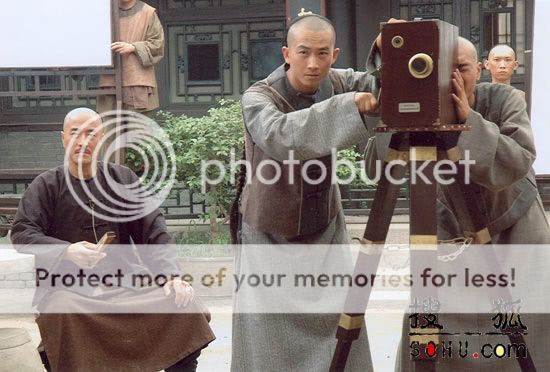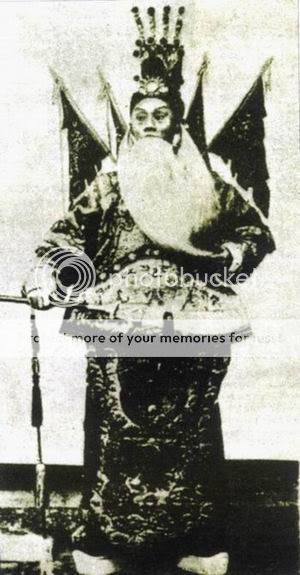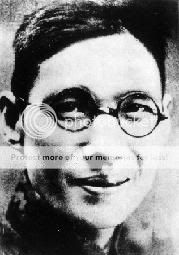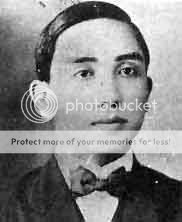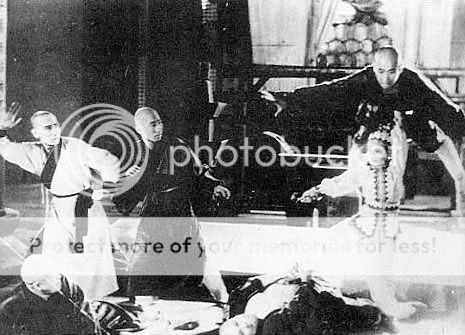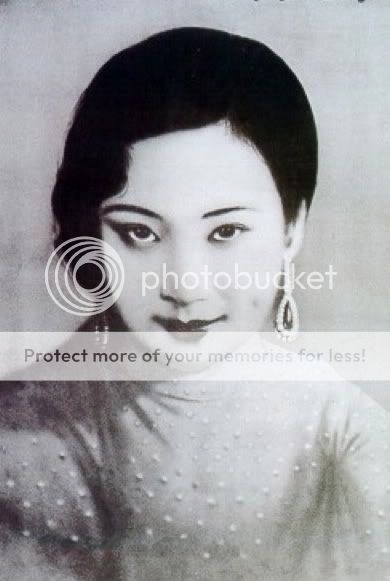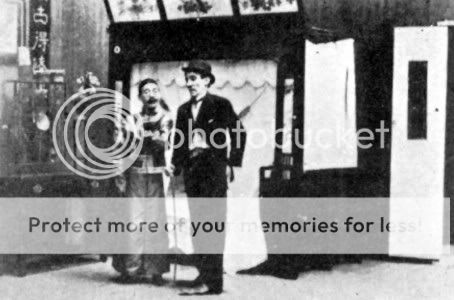Hendryk
Banned
(Link to the original thread)
This is the story of a sleeping giant that shook itself awake.
In 1911, China was called "the sick man of Asia". Its ruling dynasty was in a terminal state of deliquescence; its territory was being encroached on all sides by imperialist powers; it had lost critical elements of its sovereignty; long gone were the days when European powers respected its civilization, instead dismissing it as backwards and fossilized.
And then something happened.
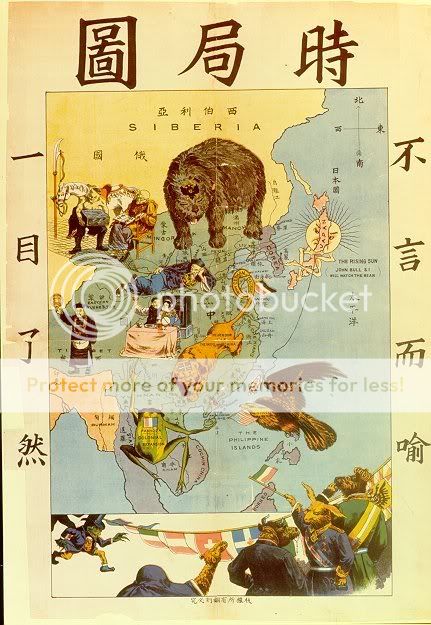
******
Forgotten Achievements
From “A Revisionist Assessment of China’s Modern Political Myths” by Geraldine Brandt, Journal of Asian Studies, Volume 55:3, 1995:
That the instauration of the Qian dynasty had been a transformational moment in the history of China was conventional wisdom to such an extent that it wasn’t until the 1960s that academics would begin to challenge the claim. It was a neat, tidy, and above convenient interpretation, one that had been part of official Chinese historiography for over a half-century; that it went unquestioned in China itself was understandable enough, especially when one keeps in mind that the authoritarian nature of the regime would not be relaxed until several years into Wensheng’s reign. It is however more puzzling that even non-Chinese historians took it largely for granted all that time. The first serious revisionist attempt was that of French Sinologist Lucien Bianco in 1967, Revolution and Reform in China 1895-1947. (…)
While politically useful to the regime, the idea that the advent of the Qian dynasty in 1912 had been a turning point, before which China had been in slow but inexorable decline, and after which it began to rise again, is one that was increasingly disputed by a new generation of historians who followed into Bianco’s footsteps. The truth turns out to be rather more complicated.
The dominant interpretation is now that the Qian dynasty, to put it bluntly, got lucky; it took over at the right moment to benefit from a series of reforms that had been implemented over the past decade and a half, as well as a piecemeal modernization that, after a half-century, was finally beginning to bear tangible results. It may therefore be argued that the main achievement of the new regime was simply not to squander the fruits of its predecessor’s labor. In other words it is probable that, the alleged merits of the Qian dynasty notwithstanding, any other successor regime—including, probably, a Republican one under either Sun Yixian or Yuan Shikai—would by and large have met with a similar degree of success.
A first example concerns the field of education. While Jianguo and his indispensable prime minister Liang Qichao received credit for the thorough overhaul of the Chinese education system after 1912, the truth is that the foundations had already been laid before that. In the previous 15 years a string of reforms, some of them initiated by Kang and Liang themselves in 1898, had already begun adapting to the modern era the obsolete education system, essentially inherited from the Song dynasty and in a state of advanced decay by the end of the 19th century: the old civil service exams had been abolished in 1905; modern universities had been opened (Beijing University in 1898, Fudan University in 1905, Qinghua in 1911, and the venerable Nanjing University, originally founded in 258 CE, was converted into a modern college in 1902); and most important, the system had been rationalized along Western lines between 1901 and 1905, with a primary, secondary and tertiary levels. As far as more specifically military education was concerned, the Baoding Military Academy was up and running from 1901, churning out class after class of army officers trained to Western standards.
If one looks at industries, the facts tell the same story. It is often forgotten how close China had come in the 1860s from having a Meiji Era of its very own. That the Self-Strengthening Movement of the late Qing had ultimately foundered hardly means that its efforts were in vain: they laid the foundations of subsequent industrial development. Who, outside of a narrow circle of historians and weapons buffs, is today aware that the Jiangnan Arsenal, founded in 1865 by Li Hongzhang and Ding Richang, had within five years become the largest manufacturer of modern weapons in East Asia? Who remembers that, while Japan would not produce its first iron-hulled warship until 1887, the dockyards at Jiangnan were already churning out such ships as early as 1872? That until their destruction during the Sino-French War in 1884, the Fuzhou Shipyards were larger than any in Japan? That the steel foundries and arsenal set up by Zhang Zhidong in Wuchang and Hanyang respectively had by 1911 blossomed into a thriving industrial complex in Hubei province, with, among other factories, some 300 cotton-weaving mills employing a total of 12,000 workers?
Then there is the transportation infrastructure. In 1912 China boasted a respectable 9,820 km of railroads, 30% of which were under direct government ownership; more were in the process of being laid down, and the regime change did not make a noticeable difference as far as the pace of building was concerned. It was thanks to the existence of railroads that the settlement of Inner Manchuria, mostly by peasants from Shandong, had been able to proceed so briskly in the last decades of Qing rule. After the railway from Beijing to Hankou was opened in 1905, commercial traffic in Hankou was multiplied by three in as many years. And while the intended purpose of foreign-built railroads was to make the Chinese hinterland accessible to overseas imports, they also enabled a steep rise in Chinese exports to foreign markets, with 80% growth between 1904 and 1912 (tea, cotton, soybeans, tin, etc.).
These and more achievements of the late Qing were opportunistically minimized by official historians after 1912, the better to give the Qian dynasty credit for “reversing” China’s decline and “putting the country back on the path to greatness”. But perhaps said decline had in fact already been reversed by 1912…
Excerpts from The Accidental Revolution: The Collapse of the Qing Dynasty and its Aftermath by Jonathan Spence, 1979
After Yuan’s death, it was obvious both for his former followers and for the Republicans under the leadership of Huang Xing and Sun Yixian that, unless an agreement was found for his successor, the two factions would come to blows in short order; and neither felt that it had enough of an advantage over the other to take such a chance. But who could be acceptable to both sides? Sun, who had briefly been the Republic of China’s first president, had already conceded to Yuan in the first place; Huang or any other Republican would be in no more favorable a position. The Beiyang faction, on the other hand, had only been held together by Yuan himself; with him gone, its various members seemed poised to become so many rivals, and the more lucid among them knew that if one of their number took over, he would likely turn against the others. For different reasons, the two sides therefore came to the same conclusion: a compromise figure had to be found in order to secure their respective gains.
The list of potential candidates acceptable to Republicans and Beiyang officers alike was a short one; it had to be someone with credentials both as a reformer, to placate the actors of the recent revolution, and as a conservative, to guarantee that Yuan’s former supporters would retain their preeminence. Li Yuanhong, as former vice-president to both Sun and Yuan, and since February 24 the acting president, suggested himself, but his bid was rejected out of hand by the Beiyang faction and did not receive much support from the Republicans, for whom he had all along been an ad hoc military leader, and not one seen to have the requisite political skills. They had not forgotten that he had only taken command of the revolutionary armies literally at gunpoint, after being dragged out from under his concubine’s bed where he was hiding.
Enter Liang Qichao, who, at a still-youthful 39 years of age, already boasted nearly two decades of political activism, first as Kang Youwei’s disciple, then as a co-founder of the Baohuanghui, and most recently as a journalist and pamphleteer. Liang, formerly an outspoken supporter of constitutional monarchy, had since the death of Emperor Guangxu in 1908 moved closer to the Republican ideals of the Tongmenghui, and enjoyed the trust and personal friendship of Sun Yixian—he had at one point been his son’s private tutor. Having arrived in China a week after Yuan’s death, he was put forward by Sun and Huang as their compromise candidate. The Beiyang faction, however, was lukewarm: from their perspective Liang’s closeness to the Republicans was, like Li’s, a liability.
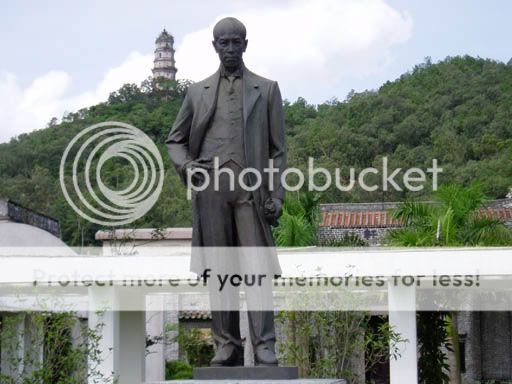
Statue of Liang Qichao.
The impasse was resolved when Liang met with a delegation of the most senior Beiyang officers that included Duan Qirui, Zhang Xun and Cao Kun, as well as Yuan’s closest friend Xu Shichang. Together, after a long closed-doors negotiation, they came to an agreement: the next president would be Liang’s own former mentor Kang Youwei. The onetime architect of the Hundred Days reform movement, and leader of the Baohuanghui, Kang had unlike Liang remained a steadfast advocate of constitutional monarchy, and even though he was seen as a radical a decade and a half earlier, the evolution of the political situation since then had led to his becoming perceived as something of a conservative. Xu and Zhang in particular considered him a safe fallback choice, and Liang, for his part, felt confident that he could exert critical influence even as his former mentor was ostensibly put in charge. The final arrangement was therefore that, with Kang as president, Li Yuanhong would retain the mostly ceremonial position of vice-president, and Liang would be prime minister.
That the cobbled-together arrangement failed to fully satisfy anyone is probably a reason why it worked out. (…)

Xu Shichang.
***
The fate of the Republic of China was strangely foreshadowed by that of the Republic of Formosa, which had lasted a mere five months between May 23 and October 21, 1895—though it that case the political experiment was terminated by Japanese annexation. Formally proclaimed on January 1, 1912, the Republic of China only lasted until July 16, and went down in Chinese history books as the Interregnum Republic. In those eventful seven months, it was led by three presidents, the last one of whom went on to become emperor.
In hindsight, there never was any doubt as far as Kang Youwei was concerned that he had only accepted the position of president in order to steer the country towards imperial restoration. Certainly, however unreliable official historiography is on certain other sensitive topics, it can be trusted on the fact that Kang was not primarily motivated by personal ambition, and the disclosure of his private archives has confirmed what had been asserted by his heirs all along, namely that, had the Dowager Empress Longyu not formally abdicated on behalf of the infant emperor Puyi on February 12, he would have simply sworn allegiance to the latter and actually restored the Qing dynasty. But the abdication meant that such was not an option for this punctilious Confucian; so the only other logical choice for him was the creation of a new imperial dynasty.
But if Kang’s behavior was unsurprising even without the benefit of hindsight, Liang’s remains a topic of speculation. He had known Kang for twenty-two years and had been his faithful disciple for eighteen, so he must have been aware that his master would, given the chance, overthrow the fledgling republic. That he nonetheless suggested him to succeed Yuan Shikai as president thus implies that his ideological loyalties were at the time more fluid than Sun and the other Republicans had been led to believe. We may conclude that he was not concerned about the formal type of regime that ruled China, so long as it was one, whether Republican or neo-Imperial, that got things done. Of course, as prime minister, he was in a very good position indeed to ensure that they did get done according to his own priorities, and that he would answer to a president or a constitutional emperor was a secondary concern. In all likelihood, he merely adapted his political convictions to the new circumstances.
Sun Yixian would, in his memoirs, later claim that he was deliberately led along by Liang; a more likely hypothesis is that he had persuaded himself of Liang’s attachment to the Republican cause, and that Liang had considered opportune to not explicitly dispel the impression until the last moment. Certainly Liang does not seem to have made any openly deceitful statement, and in any case the respect he felt for Sun was genuine. (…)
President Kang and prime minister Liang had to perform a delicate balancing act when they assembled the governmental cabinet and assigned the top positions of the new regime’s structure. Enough members of the two opposite factions had to be included so that both would have a vested interest in endorsing the government, and neither would feel cheated of its spoils. Several weeks were spent in confidential negotiations before the composition of the cabinet was finally disclosed. The Republicans were given several senior portfolios, with Lin Sen named finance minister, Hu Hanmin justice minister, Huang Xing home minister, Song Jiaoren navy minister, and Sun Yixian entrusted with the custom portfolio of transportation minister (he presently set to work on a pet project of his, a plan for a radical overhaul of China’s rail network that would prove wildly unrealistic). The Beiyang faction also got its share of sensitive portfolios: Tang Shaoyi was named foreign affairs minister, Liang Shiyi communications minister, and Xu Shichang received the critical position of defense minister, while Li Jingxi became speaker of the Senate, and Duan Qirui, Zhang Xun, Cao Kun and Wu Peifu all got positions in the Chiefs of Staff Committee. Positions not attributed to either faction went to members of the Xianyuhui (the successor organization to the Baohuanghui), unaffiliated monarchists and assorted apolitical officials; Tang Hualong, in particular, became Speaker of the House.
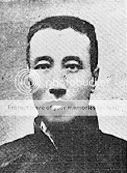
Yang Du.
With the cabinet assembled, attention turned to the Constitutional Convention, officially convened on May 19. Kang and Liang had attributed its chairmanship to renowned legal scholar Yang Du, whose monarchist convictions were a secret to none. Although the Republicans had been initially reassured to see an American legal scholar, Frank Johnson Goodnow, invited as special advisor and vice-chairman, their hopes for a wholly new foundational document were soon dashed when it surfaced that the Convention, rather than starting from scratch, would in fact be using as a basis the unfinished draft constitution begun in 1908, which heavily borrowed from the Japanese Constitution promulgated in 1889. This sent a clear signal that the ultimate goal of president Kang was constitutional monarchy rather than the preservation of the Republic, and the timing was calculated to precipitate a clash within the Republican faction. On the one hand, the pragmatists led by Hu Hanmin insisted that the two things that really mattered were the existence of a genuine parliamentary assembly with constitutionally guaranteed prerogatives, and the presence of Tongmenghui members—themselves—at the heart of the executive where they would have the most influence; on the other, the radicals led by Sun Yixian considered the imminent demise of the Republic an unacceptable betrayal of their ideals, and called for a second revolution. Meanwhile, Liang acted as liaison between Kang and the Republicans, and offered assurances that, even though the regime was going to become technically monarchic, the essential gains of the Xinhai revolution would be preserved. In the end Sun and Song Jiaoren resigned from their respective ministries, but the others accepted to stay on. This coincided with the start of a carefully orchestrated press campaign, in which Liang displayed his sharply-honed skills as an opinion journalist, to sell the idea of imperial restoration to the politically informed public.

Frank Johnson Goodnow was invited by Kang to help draft the Chinese Constitution.
He stayed in China from 1912 to 1914, first as vice-chairman of the Constitutional Convention,
then as special advisor to its successor body the Constitutional Council.
To Song Jiaoren who was praising Sun Yixian as "the Chinese Washington", Goodnow replied:
"China doesn't need a Washington so much as a Bismarck.
Give her a Washington now, and before long she will need a Lincoln."
Sun, Song and other radical Republicans such as Wang Jingwei left Nanjing for Guangzhou where they were hoping to regroup faithful Tongmenghui elements and resume armed struggle, but upon arriving there realized that this was not a viable option: the two provinces of Guangdong and Guangxi were under the control of military governor Lu Rongting*, with whom Liang had previously struck an agreement, exchanging his loyalty to Kang against his being granted his position for life. Lu now had enough of a vested interest in the success of Kang’s scheme to oppose any Republican attempt to use his provinces as insurrectionary rear bases. After a few desultory clashes between Tongmenghui forces and Lu’s army in Guangzhou, the rebellion petered out; at Liang’s urging, Kang then issued a blanket amnesty that resulted in Sun and Song losing most of their remaining followers. They both left for Japan where they created a successor organization to the Tongmenghui, the Guomindang or National People’s Party; in time, after the reconciliation with the Republican moderates, it would become the new regime’s main parliamentary opposition.

Jianguo's Gaze pierces the Clouds, propaganda painting.
By the end of June, there no longer remained any serious political obstacle to Kang’s neo-imperial restoration; few members of the Beiyang faction cared enough to make a fuss, most being content with the positions they had been granted, and those members of the Republican faction who hadn’t been placated had now marginalized themselves. In Chinese civil society at large, although the progressive elites criticized what they perceived as a step backward, and some of the more radicalized university students staged demonstrations in Beijing and Shanghai, the general consensus was that Kang-Liang (as they were once again being referred to, in reference to the Hundred Days of 1898) deserved the benefit of the doubt. After the revolutionary fighting of 1911 and the uncertainty it brought, the country seemed stable enough. Millions of people waited for what would come next, some with misgivings, others with cautious. It would, for everyone, be something of an anticlimax.
The Constitutional Convention had not yet finished its work when Kang formally declared the instauration of the Qian dynasty on July 16, 1912, having chosen for its name that of the first trigram of the Yijing’s divination system (☰), which symbolizes vital energy at its apex. As for his own dynastic name, Kang had decided on Jianguo, “Build the Country”—as clear a statement of intent as could be; though to the Western public he would be known, inaccurately, as Emperor Kang. He wanted a Confucian ceremony in full traditional regalia, intent of respecting ritual to the letter, but Liang managed to talk him into making a number of key concessions to modernity. After the pump and circumstance, the polite revelry and the symbolic trivia of regime change had taken place, business as usual resumed both for the political class and the country as a whole. For years afterwards, government officials assigned to the more remote rural areas would come across people who had never even heard that for seven months in 1912, they had lived under a republic.
* Lu Rongting was a rather colorful figure of late Qing and early Qian China. He had started out as a highway robber who, after gathering a band of outlaws under his leadership, had become so notorious that the central government, rather than fight him, offered him a job as a military officer. By 1911, he had risen to the position of vice-governor of Guangxi, and took advantage of the revolution to set himself up as governor, and expand his de facto rule to neighboring Guangdong. Thanks to his opportunistic endorsement of Kang's imperial restoration, he became governor-for-life of both provinces.
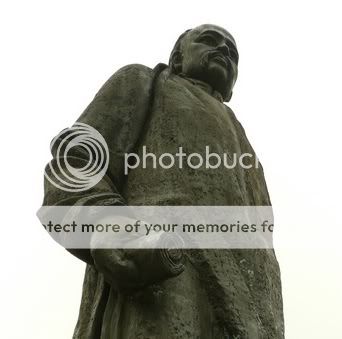
Statue of Emperor Jianguo.
Excerpts from The Resurgence of China 1911-1945 by Lionel B. Gates, 2002
If Kang’s neo-imperial scheme was allowed to proceed with relatively little opposition, it was mostly because the national stage was no longer, at that point, the only locus of political decision-making, or even, arguably, the most important one. An important consequence of the Xinhai revolution had been the de facto devolution of many of the central government’s prerogatives to the provincial level; and so long as both the revolutionaries and the moderates who had endorsed the overthrow of the Qing (whether sincerely or out of opportunism) were allowed to retain their control over the provincial governments, what happened in Nanjing was not a fundamental concern to them.
One of the reforms implemented during the last years of Qing rule had been the creation of provincial assemblies, in response to increasingly pressing demands from progressive local elites to be given a voice in the political process. These assemblies were widely seen as inadequate, since their role was a purely advisory one, and they were deprived of genuine decision-making powers; nonetheless, they had provided a forum of expression for men eager to contribute input to the political management of their provinces. Their membership consisted, for the most part, in public officials, representatives of the landed gentry, and rich businessmen—the informal leadership of traditional Chinese society. Many of them either were Constitutionalists (in other words, they belonged to Kang Youwei’s organization) or had Constitutionalist leanings, or, out of frustration at the sclerosis of the Qing, had joined Sun Yixian’s Republican organization; and even the politically unaffiliated ones yearned for opportunities to enact badly-needed reforms. When, in October 1911, the revolution started in Hubei, and then spread to other central and southern provinces, the eviction of central rule had resulted in the provincial assemblies claiming the actual decision-making powers that they had previously been denied, including the organization and command of military forces, the collection and allocation of taxes, and the appointment of local and provincial bureaucrats. In fact, as revolutionary forces were taking over, they generally made sure to minimize administrative disruption by working together with local officials so that bureaucratic continuity was not endangered, but its control simply transferred from agents of the central government to the provincial assemblies. As Edward McCord writes,
By February 1912, the provincial assemblies had solidified their control over local government, and collectively represented a political force that could not be ignored by whoever would be in charge in Nanjing.
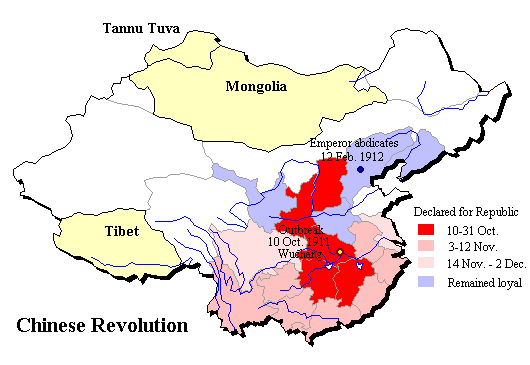
The Xinhai Revolution, 1911-1912.
The situation was a mixed blessing to Kang Youwei when he became the third President of the Republic. On the one hand, the fact that many provinces were now controlled by men either affiliated to his organization or sympathetic to its aims could be seen as a positive development. On the other, this spontaneous devolution meant that even after successfully sidelining the National Assembly, his nationwide rule was still constrained by the provincial assemblies, whose semi-autonomous status, even if largely informal, could act as a local check on the central government’s powers. Nor was post-revolutionary decentralization limited to civil administration: as will be explained below, the army was in much the same situation.
Kang realized that he would have to curtail the powers that the provincial assemblies had granted themselves, but that was easier said than done. He had been able to replace Republican with Neo-imperial rule precisely with the proviso that the regime change would leave lower levels of governance unaffected; were he to frontally contest the legitimacy of provincial self-rule, he would almost certainly face the very rebellion he had so skillfully avoided when he had set himself up as Emperor Jianguo. As Liang had reportedly argued, paraphrasing Laozi, “China is a fragile vase; clench it too tightly, and you may break it.” He instead advised a policy of accommodation: in exchange for the formal—and constitutionally guaranteed—recognition of the decision-making powers of the provincial assemblies, the central government would retain the prerogative of appointing provincial governors of its choosing. In essence, this arrangement replicated at the provincial level the situation at the national level, in which a prime minister (theoretically) elected by the legislative assembly shares executive power with the unelected head of state. Kang and Liang’s assumption was that, over time, administrative and budgetary creep would tilt the balance of power in favor of the governor, who would become the equivalent of a departmental prefect in the French Third Republic.
Whereas in theory, Nanjing had discretionary authority when choosing governors, in practice the choice tended to be determined by the bargaining strength of a given provincial assembly vis-à-vis the central government, which itself largely boiled down to budgetary issues: provinces in need of government help to finance local projects or to develop infrastructures—or, simply, to balance their books—were not in a position to contest a gubernatorial appointment, while those that ran surpluses or were able to operate without assistance from above got away with “suggesting” candidates that Nanjing then quietly endorsed. As a result the rule of avoidance, which until 1911 had required that governors be appointed in a different province than the one they were from in order to avoid the development of clientelist networks, was no longer consistently enforced—though it still was for public officials at the county level.
Because the relative power of provincial assemblies ebbed and flowed, a governor was not appointed for a fixed term, but until such time as the central government decided or the provincial assembly felt confident enough to press the issue of his replacement. Some of the governors appointed in 1912 served a mere three years before being reassigned, such as Li Shengduo in Shanxi and Cheng Dequan in Sichuan. One obvious exception was Lu Rongting, governor of Guangdong and Guangxi, who had been appointed for life and ruled his provinces as a quasi-potentate, using enticements and threats in equal parts to preempt any challenge to his hegemony. In Tibet, there wasn’t even a pretense of consent: when Cen Chunxuan was sent to Lhasa as governor, he arrived in a province that the Qing dynasty, as one of its last initiatives before collapsing, had put under actual military occupation; and the new regime had no intention whatsoever of allowing it to escape Chinese suzerainty.
General elections were scheduled for February 1913, based on the post-revolutionary expanded franchise (from 1% under the late Qing, the electoral body had been increased to about 8% of the population, which, while still restricted, compared favorably with the situation in Japan at the time). Ironically, while it was the Republicans who had insisted on elections since July of the previous year to strengthen their position against Kang by claiming democratic legitimacy, the timing played to their disadvantage, since the campaign took place as they were divided between the advocates of conciliation and the hard-liners. Unable to present a united front, they lost much of their political credibility with an electorate eager for order after the turmoil and uncertainty of revolutionary times. Although the Progressive Party was little more than the mouthpiece of Emperor Jianguo and his prime minister, it benefited from its perception as a cohesive force, its broad (if sometimes shallow) base of support among local elites, and most of all from the electorate’s sheer revolution fatigue: few people seriously wanted a third regime change coming on the heels of the previous two. And once again Liang Qichao proved to be a tireless, energetic campaigner. Although there is plentiful evidence that the ballot was tampered with by agents of the central government, that election paradoxically saw less resort to strong-arm tactics and intimidation than later ones in the following decades, since the apparatus of political control that the Qian would come to rely on wasn’t yet in place; despite numerous instances of ballot-stuffing and figure-cooking, the 1913 election was (if only by default) the most transparent one China would know for the next half-century. Here again, the exceptions were Guangdong and Guangxi, where cases of overt anti-Republican violence were reported, with opposition supporters beaten up by gangs of thugs or even by soldiers of the provincial army, and many voting precincts only carrying Progressive Party ballots. When the last votes were counted, only Fujian, Guizhou and Jiangxi had Republican parliamentary majorities.
However, if Jianguo and Liang’s position was now stronger, their party’s electoral victory hardly implied a mandate to reverse the post-revolutionary devolution to the provincial level: however supportive of the Qian the new assemblies were, none of them cared to renounce their decision-making powers. (…)
Jianguo and Liang were amenable to concessions with the provincial assemblies not from any sincere endorsement of political decentralization, but rather because they were not in a position to force the issue. The military option, tempting though it may have been, was not open to them, as the events of 1911 had considerably slackened the chain of command.
One should keep in mind that the Xinhai revolution had first and foremost been a military uprising. In the last years of the Qing dynasty, the deliquescent central government no longer had the organizational or financial means to proceed with military modernization, and had instead entrusted provincial governments with setting up so-called New Armies, namely armed forces trained and equipped to Western standards. Unlike the virtually-defunct Eight Banners and Green Standard armies, these new armed forces mostly recruited literate young men drawn from the middle class, as the ability to understand complex orders and follow written instructions were prerequisites; and this very characteristic had made them susceptible to political infiltration, and eventually subversion, by revolutionary activists appealing to the recruits’ nationalism and desire for progress. Unlike the several previous attempts to overthrow Manchu rule, the Xinhai revolution was successful because it used as its primary instrument the country’s very military: in the days and weeks that followed the first uprising in Wuchang on October 10, province after province had seen its New Army join the revolutionary movement. Furthermore, in order to fight loyalist forces, these armies had swollen to considerable size by hiring as many new recruits as possible, so that, by the time the Qing were formally deposed, they counted in some cases three times as many soldiers as they had before the revolution—though the new recruits were mostly ill-trained and ill-disciplined. With, on the one hand, many provincial armies under the command of revolutionary officers, and on the other, their rapid transformation into heterogeneous, bloated masses of men of dubious allegiance, by 1912 China’s armed forces were in no condition to be used by the central government in any attempt to restore centralized rule over autonomy-minded provincial governments.
Because the post-revolutionary state of the armed forces was as much a concern to the provinces as it was to the central government—overly large armies being both an unsustainable budgetary burden and a threat to social order—no time was lost in implementing a nationwide policy of disbandment, so that by the end of the year the provincial armies had shrunk back to their pre-revolutionary size, and had recovered an acceptable degree of internal discipline. Soldiers had been enticed to accept demobilization by being paid up to three months’ wages in one go upon quitting, and some of those that remained had been transferred into the newly-created national gendarmerie, and thus placed under the direct authority of the central government. The greatest resistance to disbandment came not from soldiers but from career-minded officers seeking to maintain their positions. The reduction of general troop strength prior to any elimination of military units was an adroit strategy to forestall such opposition: by decreasing the troop strength of each unit while temporarily preserving command structures, few officers' positions were immediately endangered. Those most suspect of pro-Republican sympathies were offered generous retirement bonuses, and the others were reassigned (with pay raise) to different units outside of their home provinces, in order to sever any parochial loyalties and make them more pliable to the central government’s authority.
Along with disbandment, the reorganization of the New Armies was completed by terminating the policy of voluntary recruitment and instead implementing a nationwide draft. This had both a short-term advantage to the provinces and a long-term advantage to the central government: whereas veteran soldiers were paid a comparatively high salary of 10 yuan a month, draftees would be paid six yuan a month, making the maintenance of the armed forces easier on badly-strained provincial budgets. And with the draft being on a national scale, the central government could claim control over the assignment of draftees, making sure to shuffle them from province to province, thus weakening local loyalties and strengthening a sense of national belonging. The transition, overseen by Li Yuanhong, who from vice-president had become Chief of the Defense Staff, was complete by mid-1914. To his credit, although he lacked both the credentials and the support for high political office, Li proved to be a skilled organizer. He also turned out to be remarkably good at managing the large and easily ruffled egos of staff generals, most of whom were former Beiyang Army officers and clearly intended to trade their endorsement of the new regime for all manners of favors. Keeping rivalries borne of ambition from degenerating into factionalism, while simultaneously ensuring that they wouldn’t coalize into a politically autonomous junta, was a delicate balancing act in which Li, so frequently—and unfairly—dismissed as a bumbling nonentity both by his contemporaries and by posterity, gave evidence of his political acumen.
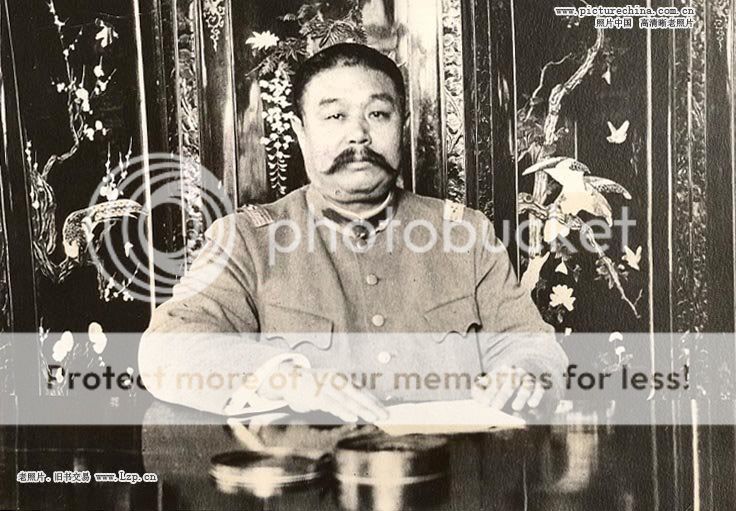
Li Yuanhong.
In the same spirit of incremental (some would have said creeping) military centralization, the defense ministry under Xu Shichang initiated in March 1913 a program of logistical standardization. Ever since the ad hoc creation of provincial militias by reform-minded officials during the Taiping Rebellion in the mid-19th century, the procurement of weapons and equipment by Chinese armed forces had been a decentralized one, with little concern for operational compatibility at the national level. The decision was thus taken to adopt a national standard, based on the weapons already under production in China’s main modern arsenals, chiefly those of Jiangnan, Jinling and Hanyang. The standard rifle was henceforth the Hanyang 88 (license-made version of the Gewehr 88) and the standard military sidearm the Maosi (license-made version of the Mauser M1896). It logically followed that the two standard rounds for light weapons became the 7.92 mm Mauser on the one hand, and the 9 mm Parabellum on the other. Actual implementation, however, took several years, as some of the provincial armies, out of passive noncompliance or sheer bureaucratic inertia, continued for a while to use nonstandard weapons: for example Lu Rongting had in late 1912 ordered on his own authority a large shipment of US-made Winchester M1895 rifles, which would be in use by his army until the late 1920s (and were still occasionally seen in Chinese soldiers’ hands in the early years of the Second Sino-Japanese War), while the provincial armies of Tannu-Tuva and Heilongjiang were initially issued the Russian-made Mosin-Nagant M1891 rifles, and fair numbers of French-made Lebel Mle 1886M93 rifles found their way into the inventories of Yunnan’s provincial army.
From “Salt, Silver and Land: Tax Reform in early Qian China” by Park Sunghee, Journal of East Asian Studies, Sept-Dec 2003:
Liang Qichao and Kang Youwei were aware, upon assuming power, that the financial situation of the Chinese government was dire indeed: both of them had wasted no opportunity in the previous 14 years to rail against budgetary mismanagement in general, and the tendency of the late Qing to pile on foreign debt to cover up budget shortfalls. The situation was, if anything, even more serious than they had expected.
The Xinhai revolution had not taken place in a vacuum: the rest of the world, and in particular the imperialist powers with economic and strategic interests in China, were very much involved. They had allowed the overthrow of the Qing to proceed only after being given reassurance, among other things, that the new regime, whichever form it took, would assume the debts of the previous one. First the Interregnum Republic under Yuan Shikai, and then the Qian dynasty under Jianguo, had thus from their inception been saddled with the Qing’s potentially crushing debt. China had first contracted a foreign loan in 1865 in order to pay an indemnity to Russia, but its chronic reliance on borrowing had started in earnest in 1894 to finance defense spending for the forthcoming war against Japan. After 1895, the entirety of the proceeds from China’s customs services, which had been under de facto foreign control since 1854, were earmarked for the repayment of said loans. On top of that came the payment of war reparations to Japan (230 million silver taels) and indemnities to the Eight Allied Powers following their intervention against the Boxer Rebellion in 1900 (450 million silver taels, a tremendous sum to be paid over 39 years at 4% interest). Compounding the severity of these debts, even before 1911 the central government’s tax collection apparatus had become inefficient, and with the provincial governments claiming autonomy in the course of the revolution, by 1912 very little tax money found its way to the capital any more. China stood on the verge of a spiral of ever-growing spiral of indebtedness, in which it would have to borrow money in order to repay previous loans.
On February 23, 1912, the very day before he died, president Yuan Shikai had requested a loan of seven million taels from the Four-Power Consortium in order to get the Nanjing provisional government to disband troops and to liquidate outstanding liabilities. Because of Yuan’s death, the Consortium only advanced 2 million taels on March 1st, and made it known through Tang Shaoyi, who had been Yuan’s provisional prime minister, that disbursement of the remaining amount would be conditional on a guarantee from the Chinese government that the Consortium would get preferential rights for further loans to China. This put the incoming Kang and Liang in a quandary: on the one hand, they were deeply wary of increasing yet further China’s debt to foreign lenders, who were liable to use it as a pretext to encroach some more on Chinese sovereignty; but on the other, they had no other credible option to put desperately-needed money in state coffers. Liang concluded that the money would have to be accepted to avoid complete government bankruptcy, but realized that, the decision being a politically controversial one, a backlash might result if they took it on their own—still rather uncertain—authority. So he submitted the issue to the provisional National Assembly, after arranging a meeting with Lin Sen, whom had just become finance minister, and Sun Yixian and Huang Xing, to share with them his assessment of the desperate straits of government finances. What he did not disclose, however, was that he had been privately approached by the Anglo-Belgian Syndicate (an alliance of the Eastern Bank and the Banque Belge), which had offered to make the Chinese government a secret loan if the Consortium’s offer was turned down [1]. Whether he would have taken up the Syndicate’s offer had the National Assembly voted against accepting the Consortium’s conditions remains a moot point, however, since, as he had expected, Lin, Sun and Huang convinced the Republican delegates to vote along with the Constitutionalists in favor of the loan. The National Assembly having given agreement, Liang had the legitimacy to work out the details with the Consortium. The customs revenue, completely hypothecated for the service of previous loans and the Boxer indemnity, for an undetermined time could only be a secondary guarantee; Liang therefore decided to pledge the proceeds of the salt revenue. As a central condition for floating the loan, the consortium insisted upon a measure of control over the Salt Administration, not merely advice and audit [2]. This was a stringent condition, which almost led Liang to break off negotiations despite the possible consequences. But after conferring with Kang, he understood how that particular requirement, while it outwardly constrained the central government, actually had the potential to strengthen its hand vis-à-vis the provincial governments.
Accordingly, Article 5 of the agreement provided for the establishment, under the Ministry of Finance, of a Central Salt Administration to comprise a “Chief Inspectorate of Salt Revenue under a Chinese Chief Inspector and a foreign Associate Chief Inspector”. In each salt-producing district there was to be a branch office “under one Chinese and one foreign District Inspector who shall be jointly responsible for the collection and the deposit of the salt revenues”. According to John King Fairbank and Denis Crispin Twitchett,
What Liang had done, in essence, was to outsource to foreign agents the task of collecting the revenues of a tax that the central government would, given its weakness in relation to the provincial governments, have otherwise been unable to get hold of at all. He had played two potential foes of his, foreign imperialist interests and uncooperative provincial governments, against one another, and revitalized the fiscal solvency of the central government in the process. Even though a share of the salt tax revenue went to the reimbursement of the loan, the remainder provided state coffers with a welcome injection of hard cash. In fact, the reorganization of the salt tax collection system was a boon to all concerned: in just four years, the annual yield of the tax increased more than fourfold, from $17 million to $71 million [4]. This newfound financial clout gave Jianguo and Liang the breathing space they needed to proceed with their plans.
Most of the loan had gone into clearing China’s outstanding liabilities to foreign lenders, but with the remainder, and especially with steady revenue accruing from the share of the salt tax not going into repayment, the central government was now in a much better bargaining position with the provincial ones. The provincial assemblies, it must be kept in mind, were largely controlled by reform-minded men who, although reluctant to surrender their new decision-making powers to Nanjing, shared Jianguo’s agenda of modernization. Their priorities were the construction of communication and transportation infrastructures, the development of modern industries, the spread of education, and other policies that were in tune with Nanjing’s. But in order to implement them, they needed capital, and even by retaining at their level the bulk of tax revenue instead of forwarding it to the central government, their financial capabilities were often too limited. Starting in October 1912, when the loan came through and the first effects of the new jointly-operated Salt Administration were felt, the central government was therefore able to come forward and offer to complement provincial budgets with loans of its own—which were offered with strings attached. As collateral, just as Nanjing had had to accept a degree of foreign control over the salt tax collection apparatus, it required from the provinces in need of capital that land tax collection be jointly administered between the provincial and central governments. The reasoning was that the Chinese economy, despite the embryonic industrialization undertaken since the 1860s, was still overwhelmingly agrarian; and even if agriculture generated little surplus, it was nonetheless, in aggregate terms, the main economic activity in China. To fail to adequately extract revenue from it would keep government finances dependent on comparatively marginal fiscal revenue, such as the lijin, a tax of commercial transactions introduced as a temporary emergency measure in 1853, which had since then become permanent (it would only be abolished in 1922 [5]).
In every case, the agreement explicitly spelled out that the joint administration of land tax collection would still operate to the benefit of the provincial budget, since the amount of tax revenue remaining at the provincial level would remain unchanged from that of the previous fiscal year, or the average revenue for the five previous years, whichever was higher. The deal was ostensibly offered as an initiative to increase efficiency, which indeed it was; the immediate gain for the central government was that it would, from now on, receive the share of the tax that had up to then ended up embezzled by corrupt local officials taking advantage of lax oversight, or not been duly collected in the first place due to collusion between collectors and local landlords. To that gain was added a more long-term benefit, that of an extension of the central government’s fiscal authority into a tax collection apparatus it previously had no direct control over. A National Revenue Board was created to oversee the process. As Liang put it, “The reach of the bureaucracy determines the strength of the State. The authority of our government only extends as far as an official is in place who can say, ‘This is the will of the Emperor’, and expect to be obeyed.” Within a year, eleven provinces had contracted a loan from Nanjing on these terms; and within two years, all but five of them had done so.
While this centralization of land tax collection was achieved through the back door, the idea itself was hardly a new one and had been championed as early as 1903 by no less a figure than Robert Hart, inspector-general of the Imperial Maritime Customs Service from 1863 to 1907 and one of the most influential Westerners in China:
Despite his extensive experience with Chinese fiscal matters, Hart was overly optimistic in his estimate. The actual yield of the tax in 1913 was 180 million taels [6]. Nonetheless, it was, along with the salt tax, another steady source of fiscal revenue that Nanjing could henceforth count on: between 1913 and 1931, as agricultural prices, land value and farm wages rose, revenue from the land tax increased by 67% [7].
In 1918, the young US-educated economist Huang Hanliang, who would later become director of the National Revenue Board, made in his book The Land Tax in China an assessment of the reformed system after five years of operation:
As a result partly of the 1912 “Reorganization Loan”, but especially the reform of the salt and land taxes, by 1914 China was already on a much firmer financial ground than it had been for decades. But its fortunes would improve further in the following years thanks to two windfalls, the smaller one half-expected and the larger one quite serendipitous…
* The Cambridge History of China (Volume 12)
** The I. G. in Peking: Letters of Robert Hart, Chinese Maritime Customs, 1868-1907
[1] This is OTL.
[2] This too.
[3] OTL quote.
[4] OTL figures.
[5] 1931 in OTL.
[6] This is a lower figure than the most conservative estimates in OTL, and it’s still a lot of money.
[7] OTL figure.
[8] OTL quote, except for one or two words.
From Marches of Empire: Center and Periphery in Twentieth Century China by Gaurav D. Patel, 2001
Even as they were consolidating their hold on the center, Liang and Kang were aware that they had to make sure that the periphery would not break away. The most pressing concerns were the centrifugal forces at work in Tibet on the one hand, and in Mongolia on the other. In both cases trouble came from the existence of pro-independence movements emboldened by the presence, over the border, of a potentially sympathetic foreign power—respectively Britain and Russia.
In Tibet, the Interregnum Republic had inherited from the Qing dynasty a complex situation. While Tibet’s vassalization by China dated back from the Yuan dynasty, Chinese overlordship had not been uniformly enforced throughout the centuries, depending on the priorities and the sheer strength of the dynasty in charge. The Qing had first installed an amban (imperial resident) in Lhasa in 1727, but his authority was more symbolic than real; in 1751, the Qing, while retaining the position of amban, had formally entrusted temporal as well as spiritual rule over Tibet to the Dalai-Lama. From the 1860s, Britain began taking an interest in Tibet as part of its “Great Game” against Russia for geopolitical hegemony in Central Asia. As of the time of the Xinhai Revolution, the basis for British policy in the Himalayan region was the Convention signed in 1906 between Sir Ernest Satow and Tang Shaoyi, by which Britain recognized China’s suzerainty over Tibet:
The priority for Britain when signing this Convention was obviously to preempt any Russian expansion into Tibet, there being no other “foreign state” susceptible of interfering with “the territory or internal administration of Tibet”. The principle of Chinese suzerainty was reiterated by the 1907 Convention between Britain and Russia:
Endorsing China’s claim was thus seen as the easiest way to keep Russia out of Tibet, but the tacit assumption of British delegates was that China was, in any case, too weak by that point to prevent Tibet’s de facto evolution towards internal self-rule. In this they were mistaken: in 1908, Zhao Erfeng, formerly the acting viceroy of Sichuan, was appointed amban in Lhasa and proceeded to launch a brutal campaign of repression against Tibetans in Kangba (then known to Westerners as Kham), the multiethnic buffer region between Sichuan and Tibet proper. This campaign amounted to ethnic cleansing in all but name, and it soon became obvious that the Qing intended to turn Kangba, until then unofficially considered part of Tibet, into a full-fledged Chinese province—something that was nominally achieved by the Interregnum Republic when the new province of Xikang was created. Acts of violence against civilians and monks prompted Thubten Gyatso, the 13th Dalai-Lama, to issue a protest, but Zhao’s response was to deploy troops throughout Tibet itself in February 1910; the small, ill-trained and ill-equipped Tibetan army was easily routed by Zhao’s modern forces, and a mere year and a half before the collapse of the Qing dynasty, China had reasserted direct control over Tibet. The Dalai-Lama escaped to Darjeeling via Sikkim with a small escort. As for Zhao, his attempt to quell the military uprisings that became the Xinhai Revolution resulted in his being executed by mutineers in December 1911.
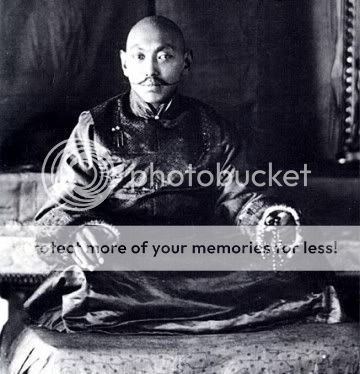
The 13th Dalai-Lama.
The situation in Mongolia was even more volatile, largely as a consequence of a change in Chinese policy during the last years of Qing rule, itself a reaction to growing Russian encroachment in the region. Indeed, until the turn of the 20th century, the Qing dynasty had allowed Mongols a significant degree of self-rule. The Manchus had initially taken control of Inner Mongolia in 1636, prior to their conquest of Beijing in 1644. Between 1655 and 1691, they gradually absorbed Outer Mongolia, and in the 1750s, they conquered the Oirats, the Western Mongols of Dzhungaria. China treated North Mongolia as a militarized buffer area largely cut off from Han colonization. Outer Mongolia’s geographical isolation north of the Gobi desert gave it a certain amount of administrative autonomy, while Inner Mongolia, located on the southern side of the desert, became closely tied to the Qing administrative system. However, China’s traditional laissez-faire attitude toward Mongol internal administration had changed in 1902, when, in reaction to growing Russian interest in Mongolia following the completion of the Transsiberian railway, the Chinese government adopted a twofold policy of centralizing the Mongol administration under that of China proper, while at the same time encouraging the Han colonization of Mongol lands. In 1911, on the eve of the collapse of the Qing dynasty, the Chinese government had decided that Inner and Outer Mongolia should be formally incorporated into China. These policies were resented by the Mongols as a threat to their traditional way of life, and this concern was compounded by the rapid rise in the years after 1902 of recently-arrived Han Chinese merchants, traders and businessmen who had taken advantage of the economic opportunities offered by the opening of Mongolia to Han settlement:
In July 1911, a group of Mongol noblemen and members of the Buddhist clergy had convened a secret meeting, and after consulting the Russian consul in the city of Ikh Khüree, had sent a delegation to Saint-Petersburg pleading for Russian assistance in restoring internal self-rule in Outer Mongolia. While some factions in the Russian government saw it as an opening for making Mongolia a Russian-aligned independent country, the prevailing view was one of moderation:
The Russian government thus intervened as mediator between the Mongols and the Qing, but as the negotiations were underway in October 1911, the Wuchang Uprising broke out and, within weeks, the dynasty was collapsing. The sudden power vacuum made not just internal autonomy but outright independence a tantalizing possibility: in November, Qing officials in Urga were driven out; on December 1, the nobles and priests of Khalkha Mongolia declared their independence; and on December 29, the Jebtsundamba Khutagtu was declared Bogd Khan. Soon the control of the Khan’s government had spread from Khalkha Mongolia throughout the entirety of Outer Mongolia. Through early 1912 the Russian government continued to offer its services as mediator, but it was increasingly obvious to all concerned that it was tempted to recognize the secessionist Mongol government and would do so unless the Chinese government regained the initiative.
A third territory that China looked set to lose to centrifugal forces as the Xinhai Revolution broke out was Tannu Tuva, then known as Tannu Uriankhai, an outlying region of Outer Mongolia proper. Formally included in the Chinese Empire by the Treaties of Kiakhta and Bura in 1727, it had been acknowledged as such by a 1869 border protocol with Russia. But in 1910 the border markers were unilaterally removed by Russia, a clear harbinger of annexationist ambitions. Russia coveted Tannu Tuva for several reasons: a growing plurality of Russian settlers; the presence of interesting natural resources, especially gold; and its location on a strategic plateau where the two sources of the Yenisei River originated, important for the defense of Siberia.
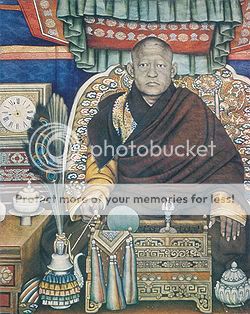
Bogd Khan.
In March 1912 the situation in both Tibet and Mongolia was thus very much in flux. Realizing that swift action was required, Liang set up the Bureau for Tibetan and Mongolian Affairs under his direct authority as prime minister, removing the question from the home ministry’s jurisdiction, much to the quiet relief of Huang Xing, who justifiably feared that the thorny issue would otherwise consume most of his attention. It is worth emphasizing that, whatever disagreements Republicans and Constitutionalists had in other regards, when it came to the preservation of central rule over China’s peripheral regions, they had exactly the same position, which explains why neither Huang nor any other Republican leader objected to Liang making Tibetan and Mongolian affairs the prime minister’s prerogative. The Bureau was the successor of the recently-disbanded Qing-era Board of National Minority Affairs, and Goingsang Norbu, a pro-Chinese native Tibetan official, was appointed as its director.
Tang Shaoyi, Liang’s incoming foreign affairs minister, who as the negotiator of the aforementioned 1906 Sino-British Convention had retained an interest in the Tibetan issue, urged him to act rapidly lest pro-independence elements gained the upper hand in Lhasa, as they already had in Urga. Liang agreed and decided to resolve the Tibetan and Mongolian issues by linking them together. Aware of British concerns over Russian expansion in Central Asia, he approached the Australian reporter George Ernest Morrison, who had in the previous years become increasingly outspoken in his defense of Chinese interests, and was famous on the Chinese political scene as an extremely well-connected figure. Through Morrison’s mediation a draft agreement was elaborated between the Chinese government and the British Foreign Office: Britain would acknowledge China’s suzerainty over Tibet on the condition that China did not “interfere in the internal administration of Tibet or station an unlimited number of troops in Lhasa or other parts of Tibet” [1], and extended the same recognition to Mongolia (as well as Tannu Tuva) with similar conditions. At the initiative of British minister plenipotentiary in China Sir John Jordan, who rightly saw that China was in a weak negotiating position, the agreement required that Chinese renounce any claims of suzerainty over Nepal, Bhutan and Sikkim (which the Qing dynasty had long claimed as vassals); that the Chinese side of the Sino-Indian border be demilitarized, with only a civilian constabulary force allowed for customs control; and that Chinese officials who had, at the time of the Younghusband intervention in Tibet, “mistreated” British officers, be demoted and sanctioned (these being Zhang Yingtang and Liang Yu). Morrison expressed reservations about the harshness of the terms, considering that the agreement would be as much in Britain’s own interest as it was in China’s, but Jordan’s calculations proved correct, and the Chinese government, in the person of its chief negotiator Wen Congyao, acquiesced to all conditions. The agreement was formalized on June 5 as the Sino-British Convention on the status of Tibet and Mongolia.
Liang wasted no time in publicizing the document in order to display his acceptance of Tibetan and Mongolian internal autonomy, thus making it possible to mend fences with the Dalai-Lama, while emissaries were sent to Urga to negotiate a repeal of the secession. Kang appointed the experienced Cen Chunxuan as the new imperial resident for Tibet; Cen picked up a contingent of reliable troops in Sichuan (where he had previously served two terms as governor) on the way, and upon arriving in Lhasa oversaw the evacuation of the Chinese troops already present, imposing strict discipline on his soldiers to avoid a repeat of the depredations committed by Zhao’s army; the reinstated Dalai-Lama returned to Lhasa, and as per the agreement, Lieutenant-Colonel William Frederick O’Connor, who had been part of the Younghusband intervention, was sent to the Tibetan capital as a British observer. In Mongolia, as a further show of good faith, Liang’s envoys offered that the government assume the entirety of the debts contracted by Mongolian noblemen and commoners alike to Han Chinese traders, a shrewd move that deflated much of the pro-independence movement’s base of support, and, to Bogd Khan, offered to give him the same status in Outer Mongolia that the Dalai-Lama had in Tibet, that of spiritual ruler with full authority in religious matters, and temporal ruler acting under the suzerainty of the Chinese government, represented by a high commissioner (a title conspicuously chosen to avoid any mention of governorship), which was to be Zhu Jiabao. The Khan added a condition of his own: that any further Han settlement be subjected to his approval. The envoys accepted, although they obtained that settlers already present as of August 1911 be allowed to stay. The resolution of Mongolia’s bid for independence also resulted in Tannu Tuva agreeing to returning into the Chinese fold on the same terms. With China’s suzerainty over both territories explicitly endorsed by Britain, Russia decided that the wisest course of action consisted in officially calling its mediation between China and Mongolia unneeded, and quietly dropping its policy of satellization of Tannu Tuva, which it had never acknowledged in the first place.
In the aftermath of Mongolia’s attempted secession, Inner Mongolia was abolished as a discrete territory and divided into the newly-created provinces of Rehe, Chahar and Suiyuan, with the remainder absorbed by Ningxia, completing the process of administrative normalization of the region begun under the late Qing. In order to tie Outer Mongolia more tightly to the rest of the country, and if need be facilitate military deployment, the Chinese government hired Zhan Tianyou a.k.a. Jeme Tien Yow, China’s most famous railway engineer, to build a railroad to Urga. A preliminary survey was conducted in early 1913, with construction beginning in October 1914. The railroad prolonged the Beijing-Baotou line to Wuyuan in Suiyuan, and from there went due north to Mandalgovi and Urga, which already had a rail link to the Siberian city of Verkhneudinsk (now Deede-Ude); it was completed by the end of 1916. A similar rail link to Lhasa was considered as well, but the project was shelved due to its unaffordable cost and its daunting technical challenges; Tibet would not be linked by rail to the rest of China until the end of the Second Sino-Japanese War.
* Stephen Kotkin and Bruce A. Elleman, Mongolia in the Twentieth Century: Landlocked Cosmopolitan.
** Ibid.
[1] This is the same offer that was made by Britain to China in OTL.
From Gloved China Hands: Westerners in the Chinese Corridors of Power, 1845-1945, by Rogeria Quartim de Moraes, 2006
If the nascent Qian dynasty benefited from a sizeable capital of goodwill on the international stage, it owed it in large part to one man in particular, the “Canny Scot” Dr. George Ernest “Chinese” Morrison. By far the most famous Western correspondent in China at the time, and certainly one of the most famous reporters worldwide, Morrison’s role in that politically volatile period cannot be overstated. Even though his role in China’s decision to align with Entente powers turns out to have been less decisive than was then widely believed, he was instrumental in tilting international opinion in favor of Emperor Jianguo’s rule against Sun Yixian’s Republican opposition, putting his impeccable credentials and his opinion-shaping skills to the service of the new regime’s public-relations campaign. Conveniently, the idea of a Western advisor for a latter-day Chinese emperor fed into the then-widespread pop-cultural cliché of the White Man using his inherent superiority to guide well-meaning but benighted nonwhite rulers down the path to modernity, and the Chinese government cleverly used the trope to its advantage, playing up Morrison’s influence on Jianguo even in decision-making areas where, in fact, he provided but little input. Whether a good sport or, as the more radical members of China’s Republican faction accused him to be, a useful idiot, Morrison duly went along with the ploy.
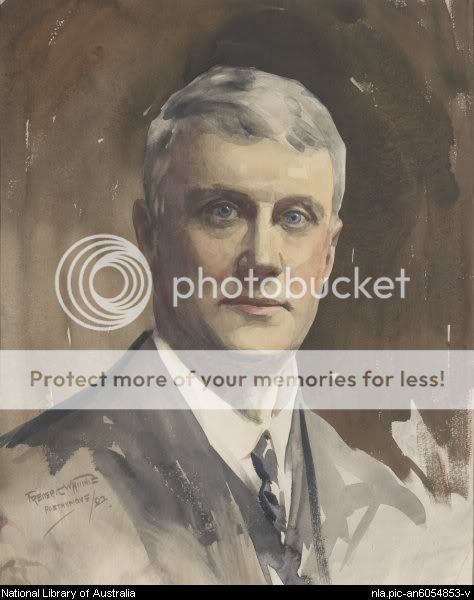
So who was Morrison? To his newspaper-reading contemporaries the question would scarcely have needed an answer, as Morrison was already, in 1912, a well-known figure indeed on the international stage. Born in 1862 in Geelong, Victoria, Australia, George Ernest Morrison grew up to be a man of adventure: before beginning his superior studies at the University of Melbourne, he walked from Geelong to Adelaide, a trek of more than 950 km through largely unsettled country. Then, having completed his first year, he took a sabbatical to ride a canoe from Albury, New South Wales, all the way down the Murray River to the ocean—a trip of 2,640 km covered in 65 days. After failing his examinations, he shipped on a vessel trading the South Sea islands, and discovered his calling as a travel reporter when he started writing articles on human trafficking in the region, which earned him his first measure of fame at the ripe old age of 20 when they were published in the Melbourne daily The Age and contributed to banning the practice. Visiting New Guinea next, he had his first taste of China when he sailed on a Chinese junk on the way back; landing at Normanton, Queensland, he covered the 3,270-km journey to Melbourne entirely by foot. With sponsorship from The Age and the Sydney Morning Herald, he led an exploratory party into New Guinea; an expedition he returned from with a spearhead stuck in his body. He was sent to Edinburgh to have it removed—the delicate operation being beyond the skill of any surgeon in Australia—and there completed his medical studies. After graduating M.B., Ch.M. in August 1887, Morrison travelled to North America and the West Indies. From May 1888 he worked in Spain for eighteen months as medical officer at a British-owned mine and then resumed his globe-trotting, returning to Australia at the end of 1890. The following April he was appointed resident surgeon at the Ballarat base hospital, but he quit after two years as his wanderlust once again got the better of him. He travelled through the Philippines then up the coast of China, dressed in Chinese clothing (complete with fake pigtail).
In February 1894, he endeavored to travel from Shanghai to Rangoon, a 4,828-km journey he completed in three months; this formed the basis of his book An Australian in China: Being the Narrative of a Quiet Journey Across China to Burma, which was published to critical acclaim in Britain the following year. In the course of his trip Morrison became increasingly fond of Chinese culture and shed the remaining racial prejudice that, by his own admission, he had grown up with in Australia (although he retained a casual anti-Semitism that surfaces time and again in his private correspondence). He was however scathing in his criticism of the missionaries he encountered on the way, and commented with biting sarcasm on the wide chasm between their ambitions and the disappointing results of their evangelizing work:
Capitalizing on his rising profile, in 1897 he became the permanent correspondent for The Times in East Asia, and soon became known to the Western public as “Chinese Morrison”, a recognized authority on Chinese politics and diplomacy. As his entry by J. S. Gregory in the Australian Dictionary of Biography states,
In March 1912, Morrison was approached by the Anglo-Belgian Syndicate to privately relay to incoming Prime Minister Liang Qichao an offer for a secret loan, should the negotiations with the Four-Power Consortium for the so-called Reorganization Loan fall through. Although the offer wasn’t taken up, Liang remained in touch with Morrison, and a few weeks later called on him to help broker an agreement between his government and the British Foreign Office about the status of Tibet and Mongolia. Morrison, who was firmly committed to the preservation of Chinese territorial integrity, did his utmost to ensure a mutually satisfactory outcome to the negotiations. The British agreed to recognize Chinese suzerainty over both territories, although not without exacting stringent concessions from China which he did his best to mitigate. After the agreement went into force on June 5, a grateful Liang recommended him to then-President Kang as a private advisor.
This decision was not inspired by gratitude alone. In the months since the overthrow of the Qing dynasty, Morrison had overtly taken position for the imposition in China of a strong, centralized and if need be dictatorial government, which he considered indispensable for the modernization of the country; and like American legal expert Frank Johnson Goodnow, who had just arrived to assist in the drafting of the new constitution, he was firmly convinced that a monarchical regime was much better suited to China than a republican one. He therefore readily endorsed Kang’s project of neo-imperial restoration, and was instrumental in bringing international opinion in favor of the scheme. Morrison’s international reputation is best summarized in this article by James McPherson in the New York Times (June 11, 1912):
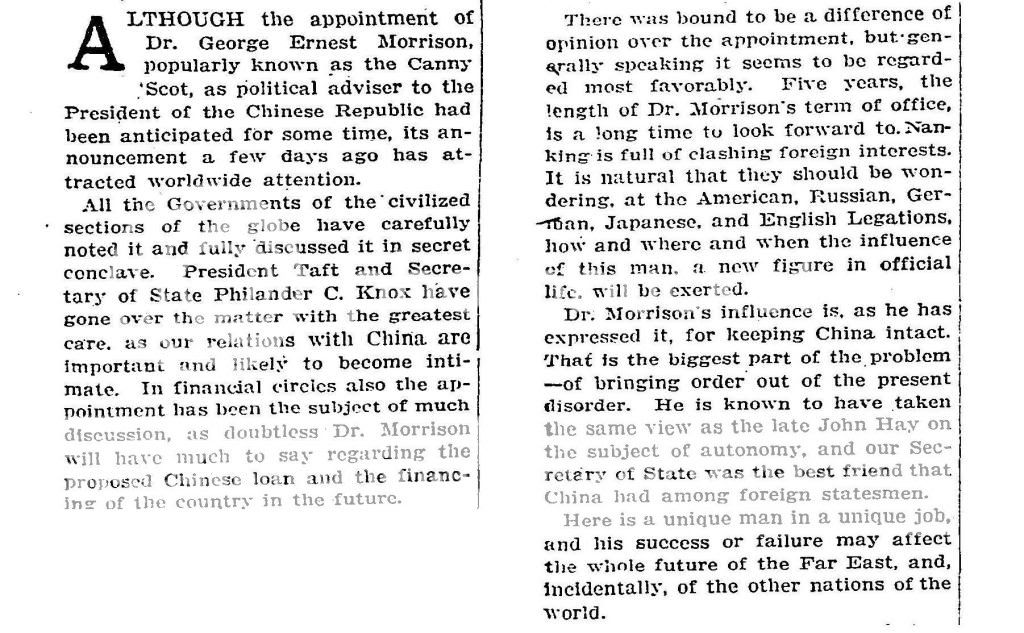
It must be emphasized that Morrison never saw his loyalties as going to the Qian dynasty alone: he was firmly convinced all along that, in helping China restore its power, he was also serving the interests of the British Crown. As he told Charles William Campbell (a former official at the British consulate in Beijing) in a letter:
Because Morrison never learned to speak more than a smattering of Chinese, his conversations with Jianguo required an interpret; and in order to guarantee their confidentiality, the job was entrusted to 19-year-old He Zhanli, Jianguo’s third wife (out of six), who was born and had grown up in the US. About their first meeting, Morrison wrote to William Henry Donald (editor at the Far Eastern Review):
When, in 1913, China signed the treaties that formalized its rapprochement with Britain on the one hand and France on the other, ensuring that in case of war China would join the Entente, most of the credit went to Morrison—a perception that Chinese diplomacy did its best to foster. In fact China’s decision was determined by inescapable geopolitical factors that were beyond any one man to influence: it was surrounded on every side with Entente powers or their colonies—British India to its southwest, French Indochina to its south, Japan to its east and Russia to its north. The presence of German leased territories on its coast—Jiaozhou especially—virtually ensured that even if its chose a path of neutrality, some of the fighting would necessarily take place within its borders, reiterating the humiliating situation of 1904-1905. At the time China had helplessly seen the Russo-Japanese War spill over into its Manchurian provinces, and the same could be expected to happen in Shandong were war to break out between the Central Powers and the Entente: Qingdao would simply be too tempting a target for the Japanese. As for siding with Germany, there would be little to gain in a best-case scenario, and almost certainly plenty to lose in all other outcomes, since that would give Japan, Britain’s ally, a perfect pretext for expanding its sphere of influence at the expense of Chinese territorial integrity; the option was quickly discarded. The logical solution was to enter into actual alliance with Britain and France, so that when the fight did come to Chinese shores, it would at least be on Chinese terms—and any gains would be China’s rather than a foreign power’s. Morrison’s presence had little to do with such a calculation, no matter how convenient he was as the treaties’ ostensible architect. He did however plain an undeniably crucial role, after the beginning of the war, in the creation of the Chinese Auxiliary Corps. (…)
Morrison would remain in Jianguo’s service until 1919, when he resigned for health reasons and moved to Britain.
* The Correspondence of G.E. Morrison.
** Ibid. [TTL]
From Building the Nation: Institutional Reform in Early Qian China 1912-1934 by Roderick McNeil, 2002
In its first year of existence, the new Chinese regime had focused most of its attention on the resolution of impending crises: the factional infighting between various post-revolutionary political forces, the loss of central control over autonomy-minded home provinces and secessionist outer territories, the crippling budgetary shortfall. As those were satisfactorily dealt with, from mid-1913 Emperor Jianguo and his prime minister Liang Qichao could next implement reforms they both had given a great deal of thought about since the Hundred Days Movement. Coming first on the list was the repeal of the Unequal Treaties which had been infringing on Chinese sovereignty since 1843.
There were two reasons for this choice of priorities. One was that both men, like the coalition government they had assembled out of moderate republicans, former supporters of Yuan Shikai and their own followers, were committed patriots who regarded the treaties as an insult to the Middle Kingdom and a formal admission of its semi-colonial status. The other was that they intended to play to the rising force of Chinese nationalism, reinforcing their popular legitimacy in the process. In the past two decades nationalism had proved to be a potent instrument of grassroots mobilization in Chinese society: it was by publicly protesting the Treaty of Shimonoseki that Kang Youwei had risen to national prominence in the first place; it was nationalism that had spurred the construction of the Sichuan railroad, whose botched government takeover had started the revolution; it was nationalism that had turned a ragtag secret society, the Fists of Harmony, into such a strong movement that a coalition of the eight most powerful countries in the world had been necessary to defeat it. Harnessing this groundswell of national self-awareness could make the difference between success and failure for the young Qian Dynasty, and both men knew it.
They also knew that doing so required walking a fine line between Chinese popular sentiment and foreign wariness. The foundations of the regime were still too shaky to afford antagonizing the very imperialist powers whose tacit acquiescence had made its instauration possible: were countries like Britain, France and Japan to conclude that the Qian were dangerous firebrands whom one could not reliably do business with, Jianguo and Liang knew that yet another foreign intervention was a definite threat. Consequently, they decided to attack the treaty system in a roundabout way, starting with its most visible manifestation—the grating missionary presence—while giving assurances that the protection of foreign economic interests, which were the real point of the treaties, would be safeguarded. In this they found an unlikely ally in the person of a certain venerable, highly respected British businessman.
On June 5, 1913, the visitor was welcomed with full pump as he stepped out of his train carriage in Nanjing station. The aged man, with failing hearing and fragile health, had travelled all the way from London in order to testify of his support for a controversial policy that the Chinese government was about to implement. Although a private individual, he received a statesman’s welcome, so great was his fame, and so opportune his visit. His name was Sir Hiram Maxim.
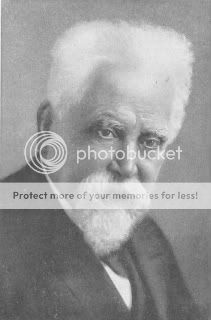
Sir Hiram Maxim in 1913.
For a half century the privileges granted to Christian missionaries by the treaties of Tianjin had been a thorn in the side of China’s patriotic consciousness. “The Christian religion,” the treaty with Britain stated in its Article VIII, “as professed by Protestants or Roman Catholics, inculcates the practice of virtue, and teaches man to do as he would be done by. Persons teaching or professing it, therefore, shall alike be entitled to the protection of the Chinese authorities, nor shall any such, peaceably pursuing their calling, and not offending against the law, be persecuted or interfered with.” The treaties signed with France and the United States contained a similar provision almost verbatim. A Chinese saying cynically summarized the situation: “When the missionaries show up, the soldiers aren’t far behind.” Indeed, foreign powers were all too eager to use the real or alleged molestation of missionaries as a pretext for gunboat diplomacy; as late as 1897, Germany had claimed rights over the Jiaozhou peninsula after the murder of two German missionaries in the region. Furthermore, missionary orders of whichever Christian denomination all claimed immunity from Chinese laws for both themselves and their local converts, and even exemption from taxes, making the Christian presence in China a point of contention and a lightning rod of patriotic indignation. It was therefore from this side that the new regime intended to undermine the treaty system.
Maxim’s support had not come out of the blue. The inventor of the modern machine gun, whose name was celebrated in song and poem (“Whatever happens, we have got/The Maxim gun, and they have not”) had for a long time been something of a Sinophile, as well as an outspoken opponent of religious proselytism. He had met Li Hongzhang, founding figure of the Self-Strengthening Movement, creator of the Western-trained Beiyang Army, and former Viceroy of Zhili, when the latter visited Britain in 1896. The two men had become friends and, in Li’s memory, Maxim had written a pamphlet, Li Hungchang’s Scrapbook, which had gone to press a mere few weeks before his visit to China. He left no doubt as to his position on what he called “a religion based on a belief in devils, ghosts, impossible miracles, and all the other absurdities and impossibilities peculiar to the religion taught by the missionaries”:
Once in Nanjing, Maxim joined forces with Jianguo’s high-profile Western adviser George Morrison—himself a vocal critic of Western missionaries in China [1]—and lent his considerable fame to the support of the new regime’s anti-missionary policies. He would spend the next ten months in China, a period during which the Western press took to calling Morrison, constitutional expert Frank Johnson Goodnow [2] and him “The Emperor’s Three Wise Men”.
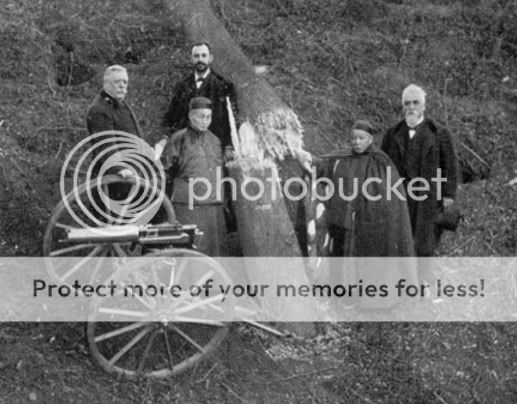
Hiram Maxim (right) demonstrates his machine gun to Li Hongzhang (second from the right) in 1896.
Further weighing into the balance was the fact that Maxim had come along with representatives from the Vickers firm, who were promised important orders from the company’s weapons factories and shipyards in return for Vickers lending a hand to the lobbying effort: one cruiser was ordered up front with firm commitments for two more, along with four destroyers, ten torpedo boats, a submarine—China’s first—and 900 machine guns (to be chambered for the 7.92 Mauser round). This order made China Vicker’s primary customer in Asia and gave the firm a stake in the new regime’s success, all the more so as it had recently lost the bulk of its market share in Japan to German competitor Siemens and sought a way to compensate for the setback.
The Qian government was aware that a general revocation of the missionaries’ privileges would be diplomatically reckless, so what it set to do instead was a piecemeal, incremental limitation, in the respect of the letter if not the spirit of the Treaties of Tianjin. The legislation being put forward specifically left out medical, educational and humanitarian activities from the new regulations, so long as they did not involve overt proselytizing, with the definition of “overt” vague enough that it left a fair amount of wriggle room, though their registration would be required. Existing houses of worship were grandfathered in but new ones would have to be subject to approval by the Bureau of Religions, a newly-created department of the Home Ministry, and Chinese converts could no longer claim exemption to local taxation or immunity from national laws. Since the Treaties gave Chinese authorities responsibility for the personal safety of foreign missionaries, they would now be required to give advance notice of their travels, and would when travelling be escorted by officers of the national gendarmerie—who would have power to prevent their going to “obviously insecure” areas and engaging in “predictably hazardous” activities for their own protection. Circulation, sale and distribution of printed (or cinematographic) material would have to be subjected to prior approval by the Bureau of Religions.
This turn of event was all the more ironic as the missionaries in China had viewed the 1911 revolution with great hope and had had no small part in the speedy recognition of the new regime by their respective national governments. Typical of this optimistic attitude was John R. Mott, to whom the incoming Wilson administration offered the position of US ambassador to China on the strength of his credentials as a Christian activist (he was at the time foreign secretary of the International Committee of the YMCA); even though he turned down the offer, Mott strongly encouraged Wilson to recognize the Qian dynasty as rapidly as possible:
While many missionaries, especially American ones, were somewhat disappointed in the early demise of the Republic, they did consider that a stable constitutional monarchy was a lesser evil to the threat of governmental collapse and civil war, and were willing to give the Qian dynasty cautious support well into 1913:
It is in this context of diminished expectations that the missionaries took in the new regime’s intention to curtail their evangelizing activities in China. Furthermore, the limited and mostly ineffectual resistance to the policy can be explained to a large extent by the fact that the more influential denominations were also those with the most at stake. The Congregationalist, Methodist, Presbyterian and other mainline Protestant Churches, had in the decades since the signing of the treaties set up many institutions on Chinese soil, the larger of which in terms of staff and non-fungible assets being those involved in charitable, educational and humanitarian works—in other words, outside of the scope of the new legislation. Their general reaction was that preserving these by accepting the Chinese government’s terms took priority over trying to preserve their evangelizing privileges, and in the process risk losing it all. Especially hard hit were the evangelical denominations such as the China Inland Mission, since their activities were essentially of the overtly proselyte kind.
The Catholic Church was in a predicament of its own. It remembered all too well how intransigence against the secularizing policies of the French government had resulted in a severe backlash in 1905, going so far as the termination of diplomatic relations between France and the Vatican. Yet since the early 1840s its interests in China had been chiefly defended by France, and even after the tensions on domestic French soil this continued to be the case, as no other Catholic power had a meaningful presence in China. The Catholic Church was all the more unwilling to clash overtly with the Chinese government as the French foreign minister at the time (and therefore the de facto political authority in charge of defending its interests), Stephen Pichon, was a member of Georges Clemenceau’s radical anticlerical faction, and as such could not be counted on to oppose the Chinese legislation. Just to be on the safe side, China had timed a series of large orders from French companies shortly before the drafting of the sensitive legislation for optimal diplomatic effect: aircraft from Voisin and Caudron [3], locomotives from the Compagnie des Forges et Aciéries de la Marine et d’Homécourt, and artillery and heavy industrial equipment from Schneider.
The flip side of the new regime’s anti-missionary legislation was a policy of revival of China’s traditional religious traditions, the “three teachings” (Sanjiao) of Confucianism, Taoism and Buddhism—especially the first, unsurprisingly so since Jianguo was an accomplished scholar of Confucianism and had given extensive thought about its application in a modern context. Even as he (sometimes grudgingly) respected Taoism and Buddhism as key elements of Chinese culture, Jianguo was deeply convinced that Confucianism could be shaken free of the dogmatic sclerosis inherited from the Qing dynasty and turned into a universal religion, which would not only strengthen Chinese civilization as it adapted to the modern world, but also spread beyond the Sinosphere to other civilizations, in the same way—the comparison was explicit—that Christianity had spread beyond Europe to become a global religion. Already in his 1895 Manifesto to the Emperor, he had written:
Apart from a trip to Hong Kong and a visit to the foreign concessions of Shanghai, the Kang Youwei who wrote these lines had not yet travelled abroad, as he would do in his 14 years of foreign exile, hence the cultural chauvinism he expresses matter-of-factly; his prejudices against foreigners would mellow in the years leading to 1912. Yet his vision of Confucianism as both the doctrinal basis of a reformed China and a universal religion remained unchanged, and his disciple Chen Huanzhang further refined the idea, especially during his years of study at Columbia University (where his PhD thesis, submitted in 1911, was The Economic Principles of Confucius and his School); upon returning to China in 1912, Chen was entrusted by his former master to oversee the foundation of a government-controlled apparatus intended to turn Confucianism into not just what it had been since the Han dynasty—the ideology of State—but the actual State religion of China, a task he embraced with gusto. This modern reinvention of an old teaching in light of, and in reaction to, exposure to Western civilization, is obviously reminiscent of the similar transformation in Meiji Japan of Shintoism from a folk religion into the official State religion, and in practice was implemented in much the same way. It was in 1913 that the anniversary of Confucius was made into a national holiday in China, as it would later be in Korea, Vietnam and Malaysia.
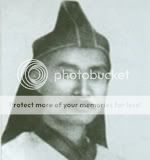
Chen Huanzhang as Great Priest of Confucius.
One cannot emphasize enough that this version of Confucianism, which is the one most people in the world have come across and are familiar with, bears little resemblance to the one which the Sinosphere had up to then been familiar with. It is to pre-Qian Confucianism what born-again evangelical Christianity is to the traditional version. Certainly, the Master himself would be puzzled to see his teachings turned into a religion, when he himself assumed a pointedly agnostic position on supernatural issues, but one could argue that Confucianism had already been given a transcendent dimension back in the Song dynasty, with the advent of neo-Confucianism especially as propagated by Zhu Xi (1130-1200); just as that earlier reform had been prompted by the penetration of Buddhism in the Chinese civilization, Chen’s later one was prompted by the penetration of Christianity. In fact, while the English language indifferently calls Confucianism both the pre-Qian and the contemporary versions, in Chinese they are referred to by different names: the former is known as Rujia (儒家)—the School of the Learned Ones—and the latter as Kongjiao (孔教)—the Religion of Confucius.
The internal organization of Confucianism was self-consciously based on the centralized structure of Catholicism, with a hierarchical clergy headed by Chen as Great Priest, and provincial, prefectoral and municipal levels of responsibility; overseas Chinese communities were to receive priests as well, and a special institute was founded for the training of missionaries to non-Chinese lands. The importance of lay members was emphasized from the start, with special consideration given to starting up lay ancillary organizations wherever motivated individuals volunteered for such duties. However, Confucianism retains from its traditional version a condemnation of celibacy and a general disdain for monasticism (in contrast with Buddhism and Taoism), considering that the primary role of the faithful is to raise families and contribute by their work to the economic well-being of society; familial, academic and professional achievement are considered indispensable attributes of the virtuous person. The international expansion of Confucianism was, in its early years, helped to no small extent by its reliance on the world-spanning network of Jianguo’s supporters (founded by the future emperor and by Liang Qichao in 1899, it had by 1913 grown to some 150 chapters in 16 countries), as many chapter leaders became lay members of the organization. Though it is much less the case at present, back then the interests of Confucianism and those of the Chinese executive were very much intertwined.
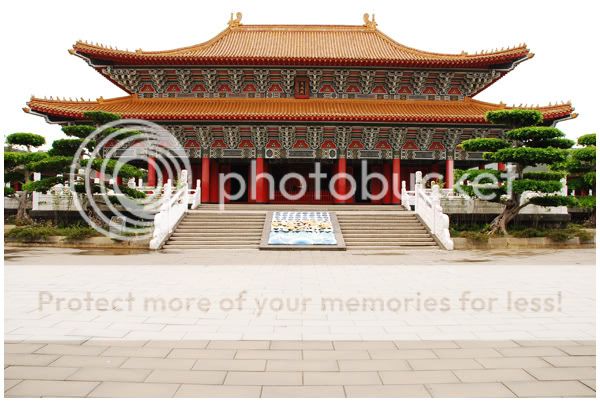
A modern temple of Confucius, built in the Northern Song revival style.
* Michael V. Metallo , “American Missionaries and the Chinese Revolution”, The Pacific Historical Review, Vol. 47, No. 2 (May, 1978), pp. 261-282. [Mostly unchanged quote from OTL]
[1] See “A Canny Scot”.
[2] See “The Interregnum Republic”.
[3] See “History of Chinese Aviation”.
From The People Feel Not His Hand: Domestic Control and Law Enforcement in Twentieth-Century China by Nisha Kapoor, 2006.
In the early years of the Qian dynasty, most of the attention, especially from foreign observers, understandably focused on the new regime’s head of state, Jianguo himself (improperly but much more frequently referred to in the Western press as Emperor Kang—the habit would only be dropped in the 1940s, when his son had long succeeded him). In fact, the more important figure was Liang Qichao, who as prime minister could claim credit for most key political decisions, but who deliberately avoided the limelight and preferred to work quietly, making arrangements behind the scenes and pulling all manner of strings, though he made for a fearsome public campaigner when the occasion called for it. Yet the contemporary historian’s temptation to fall in the other extreme and dismiss Jianguo as a passive figurehead while Liang did all the heavy lifting, noticeable in several scholarly works published in the last two decades, should be avoided as well. Jianguo did involve himself in policy-making, often in close cooperation with Liang, and in certain domains also acted on his own. One of these was the creation of China’s modern intelligence apparatus.
Born of compromises and broken promises, the Qian dynasty in its early years was understandably short on trust between the factions whose power it delicately balanced against one another. This meant the inevitable politicization of law enforcement, and the creation of a multi-layered system that, while reasonably straightforward on paper, in practice resulted in a tangle of overlapping jurisdictions. Just before its collapse in 1911, the Qing dynasty had taken the first steps toward the creation of a modern Chinese constabulary, with the organization of civilian police forces at the provincial level, and this was retained with few changes by the new regime. Municipal militias were also set up, mostly staffed by recently demobilized soldiers who were thus provided with a steady income and could put their experience to lawful ends (it was until then all too frequent for demobilized soldiers to turn to banditry to sustain themselves). However, the central government was wary of leaving law enforcement matters entirely in the hands of local and provincial authorities, and, following the French model, a national gendarmerie had been set up in 1912 and placed under the control of the Defense Ministry. But with many high-ranking military officers either former revolutionaries or cronies of the late Yuan shikai, their political reliability was an open question. Jianguo therefore sought the ability to keep tabs on the military chain of command. Like all statesmen who had come to power thanks to revolutionary upheaval, he was also concerned about rooting out domestic subversion, and wanted to be able to do so without having to answer to the formal government structure, let alone pesky legislative oversight—after all, several ministers and members of parliament were to be on the watchlist. Having decided to organize what amounted to a secret police, he probably concluded that it made sense to extend its responsibilities to espionage and counter-espionage.
The creation of this secret police, soon to be called the National Security Bureau (Guo’anju 國安局) took place with the utmost confidentiality; in the government, only Liang knew about it, and only because of his close personal ties with Jianguo. As its director, the emperor chose an official with impeccable monarchist credentials, former Gansu governor Zhao Weixi, who had come to his attention with his zealous crackdowns against men who cut their Qing-era pigtails even after the Republic had been formally proclaimed (he himself had only cut his pigtail upon the proclamation of the Qian dynasty, and like many supporters of the new regime, simply kept his hair entirely shaved off in imitation of Jianguo and Liang). In order to maintain secrecy, a calculated leak was arranged when Liang shared “in the strictest confidence” deliberately misleading information about the NSB to Chief of Staff Li Yuanhong and General Zhang Xun, telling them a counterintelligence agency had been created but was being kept secret from the civilian government out of concern about foreign spies who might have sources from inside the administration. Word eventually got out about this alleged counterintelligence agency, the existence of which was publicly denied even as Liang “admitted” to Huang Xing that the rumor was true and the Bureau did exist, but that for obvious security reasons the fact could not be acknowledged to anyone but the highest government officials. It would be years until the NSB’s true purpose was known, and even then all details of its size, funding and internal structure remained closely guarded secrets well into the post-World War 2 period. [1]
The core of the NSB’s intelligence-gathering apparatus was the transnational organization which Kang and Liang had founded in 1899, and which is most widely known by its first of several names, the Imperial Protection Society (Baohuanghui 保皇會). After the failure of the Hundred Days reform movement, Kang and Liang had escaped Dowager Empress Cixi’s grasp by fleeing to Vancouver, Canada, where they had with the help of the local Chinese community’s richest businessman [2] set up the first chapter of what would become a global network of activists, fundraisers, lobbyists and sleeper agents, recruited from all walks of life. Although it had after Emperor Guangxu’s death in 1908 lost some membership and influence to its rival the United Allegiance Society (Tongmenghui 同盟會) set up by Sun Yixian and Song Jiaoren, by the time of Kang’s accession to power in 1912 it boasted some 150 chapters spread out in 16 countries on four continents. Fundraising ran the gamut from voluntary donations to decoy businesses, one of which was the largest Chinese restaurant in Chicago, and the organization had set up paramilitary training centers, several of them in California and Washington State. It also ran a number of schools, newspapers and community centers for members of the Chinese diaspora. Since this world-spanning network was personally managed by Kang even after he became Emperor Jianguo, he could easily use it for the new purpose of setting up overseas spy rings, and turn its more committed members into NSB operatives.
The NSB, Jianguo had decided, was also to comprise a women’s branch, at the head of which he appointed Xue Jinqin (referred to in Western sources as Sieh King King). Such a choice was hardly random. The daughter of a liberal-minded merchant from Guangdong, Xue had attended missionary schools in Shanghai and Tianjin, where she had developed fiercely progressive ideas about the status of women. She had first earned fame when speaking at a public meeting in Shanghai when she was all of 16, voicing her protest against the government’s decision to grant Russia special rights in Manchuria in the wake of the Boxer rebellion. In 1902, at the ripe old age of 18, she travelled to San Francisco, where her reputation as an orator had preceded her; a banquet was held in her honor and she was invited by the Baohuanghui to deliver a speech in a Chinatown theater hall. Before a rapt audience of Chinese men and women, and a number of Western reporters, she spoke about social reform in China, and in particular about the urgent need for equal rights for women. Excerpts of her speech were quoted in the Chung Sai Yat Po and the San Francisco Examiner.
In fact, although the date of her joining is not known for certain, she was probably already a member of Kang Youwei’s organization at that point, which explains the support she received from it. After spending three years at the University of Berkeley, she moved to Los Angeles, where she stayed with Tom Leung, a rich businessman and one of the core members of the Baohuanghui in the United States. Through his mediation, she was personally introduced to Kang, and recently declassified Chinese government archives confirm that Kang, impressed by her driven personality, entrusted her with a highly sensitive secret mission: nothing less than the assassination of Dowager Empress Cixi. The details of the operation were not recorded but presumably involved the infiltration of the Empress’s personal retinue, which only a woman could do. She was given the codename “Fifty” in reference to a poem by Li Shangyin (812-858):
The plot was years in the making but, as it turned out, Cixi died of natural causes before it could be carried out. Xue Jinqin then returned to the United States and enrolled at the University of Chicago.
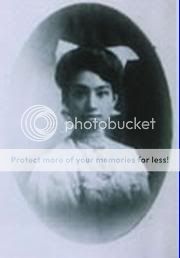
Xue Jinqin.
When Kang Youwei declared himself Emperor and set up his intelligence service, he decided that Xue Jinqin, with her intelligence, dedication and loyalty, was the best choice as head of its women’s branch. Secretly contacted by the Chicago chapter of Kang’s organization, she came back to China, where she was given a cover position as director of an educational foundation for women in Nanjing.
Early female NSB agents were of two very different backgrounds. On the one hand, well-educated, fiercely patriotic young women such as Xue Jinqin herself, who joined in order to contribute to the restoration of their country’s power while at the same time pursuing a career customarily viewed as masculine. On the other hand, young women from poor families who had found themselves sold into prostitution, and who found in their involvement in secret police work a way to use their unfortunate circumstances for the good of the country. Many early recruits thus came from the Women’s Espionage Training Institute, which had been set up by prostitutes in Shanghai during the 1911 revolution; its manifesto read:
After 1912, the women’s branch of the NSB, which in honor of the pioneers of the Women’s Espionage Training Institute was informally renamed the Society of the Daughters of the Yellow Emperor (Huangdi Nü’er Hui 黄帝女兒會), began systematically seeking recruits from the world of prostitution, especially in treaty ports and extraterritorial foreign concessions. According to Gail Hershatter’s findings (see Dangerous Pleasures: Prostitution and Modernity in Twentieth-Century Shanghai), by 1914 virtually all of the houses of pleasure catering to wealthier Westerners in Shanghai had been secretly put under NSB management in order to gather intelligence in the form of pillow talk, and to induce prominent individuals into honey traps for blackmail purposes. The same policy was conducted wherever a large enough foreign presence warranted.
But the most mysterious member of the Society of the Daughters of the Yellow Emperor in those early years came from neither background, at least as far as can be ascertained. Very little is known about her, not even her real name. When she joined the NSB, she went by the moniker of Azure Cloud, and that is how all declassified government records refer to her. She claimed to be 29 years old, and most tantalizingly, hinted at a past career as a member of the Red Lanterns, a corps of teenage girls who had fought alongside the Boxers in the 1900 rebellion. The Red Lanterns (who later became the topic of several films as well as a famous 1960s-era wanhua series) were believed to have supernatural powers such as healing, flight, and control over the wind with their magical fans; more mundane descriptions have them maintaining public order in Boxer-controlled areas, tending to the wounded, gathering intelligence, and engaging in arson. There indeed was a Red Lantern member named Azure Cloud, who was about 17 at the time and said to be both very beautiful and skilled in martial arts; no conclusive evidence exists that said girl and the woman referred to by that name in NSB archives are the same person, but she apparently fit the depiction on both counts, being both quite good-looking and a highly proficient practitioner of the White Crane fighting style. She became a Buddhist nun in 1923, though she returned to secular life after the Japanese invasion to take command of a resistance cell, and was killed in action in 1937.
[1] For a glimpse of how the NSB will turn out in later decades, see “The Sorcerer’s Apprentice” by carlton bach.
[2] See “The Wheel of Eternity” by Doctor What.
From Iron Qi Lines and Fire Chariots: The Railways of China by Benjamin T. Dunn, 1993
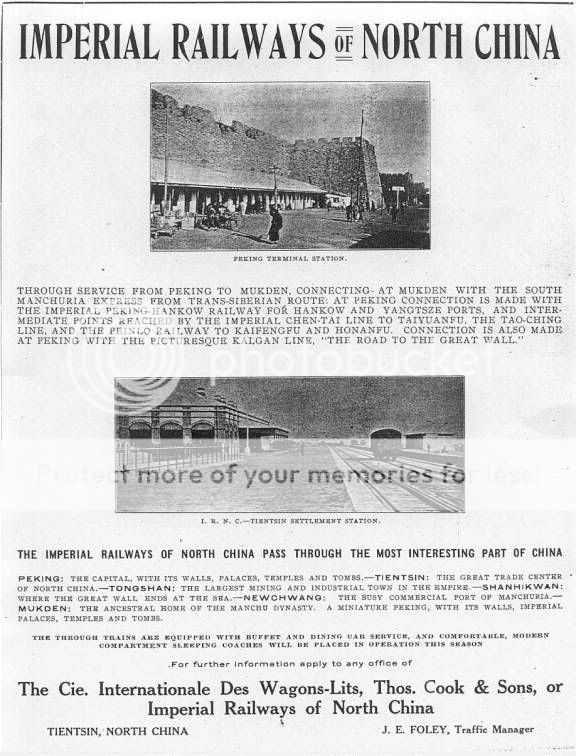
Advertisement for the North China Imperial Railways published in the December 1910 issue of the Far Eastern Review.
The history of railways in China had begun—or rather, inauspiciously enough, not begun—in 1863, when a group of mostly British and American businessmen had petitioned Li Hongzhang (then the governor of Jiangsu) for the right to build a rail line between Shanghai and the ancient city, and major silk-producing center, of Suzhou. Although a co-founder of the Self-Strengthening Movement, Li was at that early stage unconvinced of China’s need for rail transportation and had turned down the request. Undeterred, the businessmen had invited the railroad engineer Sir Macdonald Stephenson (no relation to George Stephenson), who had already overseen the development of India’s first rail lines. The following year, Stephenson had submitted to the Chinese government a far-reaching project for a network radiating from Hankou in the middle Yangzi valley, with lines to Beijing and Tianjin in the North, Shanghai in the East, Canton and Hong Kong in the South, and going all the way across the Himalayas to Burma and Calcutta in the West. Too ambitious, and too obviously designed to serve British economic interests in China, the project had another critical shortcoming which turned even Sir Frederick Bruce, the British ambassador, against it: it failed to factor in the fact that Chinese law had few provisions for eminent domain, which would make the expropriation of the necessary tracts of land a slow and expensive affair. Bruce had warned Stephenson in the following terms:
Stephenson had ignored Bruce’s warning and founded the China Railway Company in order to put forward various projects for regional rail lines, but none of them came to fruition and the company folded four years later.
However, in the following decade, a number of progressive officials had gradually warmed to the idea of Chinese railways and were lobbying the central government in favor of it. Li Hongzhang, among others, was now a supporter of rail transportation, as he had in the meantime sponsored the development of a modern coal mine in Kaiping (in order to provide the nascent Chinese steam-powered commercial fleet and his own future Beiyang Navy with domestically-produced fuel) and reasoned that transporting the coal would be cheaper by rail; from there he had come to understand the advantages of rail as an instrument both of economic development and strategic defense. In a memoir to the imperial court in 1880, he wrote “Our country faces unprecedented challenges; we should therefore address them with unprecedented methods”. The cause of Chinese railways suffered a temporary setback when a 16-kilometer line was built by British businessmen between Shanghai and Wusong in 1876; intended as a practical example of the advantages of rail transportation, the initiative backfired since, a fait accompli of dubious legality, it was perceived as a unilateral encroachment on Chinese sovereignty, and operations had to be discontinued. But a symbolic watershed was crossed in 1881 when Claude W. Kinder, the British engineer hired by Kaiping mine manager Tang Jingxing, assembled with the latter’s connivance the first locomotive ever built in China, using a boiler and other parts from a portable steam winding engine borrowed from the colliery. This modest 2-4-0 machine, christened the Rocket of China and decorated with gilded dragons on its sides, would remain in operation until 1920, and enjoy a second lease on life at the beginning of the Second Sino-Japanese War in 1934, when shortages in locomotives caused it to be brought out of retirement (its long career ended for good in 1945, and it is now displayed in the Nanjing Museum of Trains and Railroads) [1]. As for the workshop it was assembled in, it grew into Tangshan Locomotive and Rolling Stock Works (唐山机車車輛廠), China’s first such company.
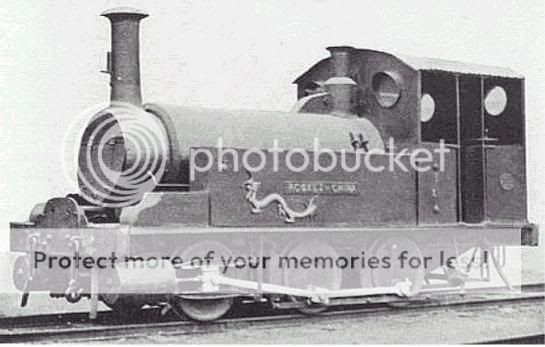
The Rocket of China.
The Kaiping railroad was extended in two installments over the following years: it linked Tangshan and Tianjin in 1888, and Tangshan and Shanhaiguan in 1894; meanwhile, Taiwan governor Liu Mingchuan had built a line between Jilong and Xinzhu via Taibei, but on the eve of the First Sino-Japanese War the total length of railroads on Chinese territory was an unimpressive 502 km. The defeat against Japan removed all lingering domestic objections to the development of a Chinese railway network, and Kang Youwei had accurately captured the new national consensus when he wrote in his 1895 Manifesto to the Emperor:
Even more importantly, Japan’s victory had given the signal for a “scramble for China” in which every imperialist power sought to expand its area of influence in that country, using railway concessions as the primary method of penetration into the inland provinces. In 1898, during the Hundred Days reform movement, Kang Youwei had set up a Central Board of Mines and Railroads to allow the Chinese government a degree of oversight on the fast-accelerating pace of railway construction (by then, foreign powers had obtained the rights on 6,750 km of lines, most of which would be operational by 1912), and its prerogatives survived Cixi’s crackdown on the reformists. The Boxer Rebellion in 1900 dampened foreign schemes about a possible carve-up of China, but the “soft imperialism” of leased railway development continued unhindered: Chinese Eastern Railway in Manchuria (linking Chita and Vladivostok, and branching off at Harbin to Port-Arthur) by Russia, Yunnan Railway (linking Haiphong and Kunming) by France, Shandong Railway (linking Qingdao to Jinan) by Germany, etc. , and after its victory against Russia, Japan started work on the South Manchuria Railway. Meanwhile, by 1905 the Chinese had developed enough local expertise to start building railways without relying on foreign engineers, and the Chinese business community was increasingly taking the initiative of gathering capital to invest in railway construction. Thomas Millard, New York Herald correspondent for China, wrote in his 1906 book The New Far East:
The first major railroad designed, financed and built entirely by the Chinese was the Beijing-Kalgan line. Kalgan (now Zhangjiakou) is a city 200 km northwest of Beijing, at the gate to Mongolia, and was a regional trading emporium where products from Central Asia arrived on camelback to be sold on the Chinese market. Britain had intended to build the railroad in 1902, but Russia had opposed such a move into its own area of influence in China, and in 1905 the Chinese decided to build it themselves. The chief engineer of the project was Zhan Tianyou (1861-1919), known to Westerners as Jeme Tien Yow, who would go down in history as “the father of Chinese railways”. Zhan had been sent as a twelve-year-old kid on a government program to the United States to receive a Western education, and by 1881 had received a degree in civil engineering from Yale University. He later interned with Kinder, honed his skills participating to the construction of the Beijing-Mukden line, and in 1902 was appointed by Yuan Shikai (then Viceroy of Zhili) to build a 32-km line to be used by the Dowager Empress when visiting the imperial ancestors’ tombs, an assignment he completed within budget and ahead of schedule. The Beijing-Kalgan line would be a technical challenge, as its route took it across the rugged Yanshan mountains (on the crest of which runs a section of the Great Wall), but even though Zhan had to build a switchback system and dig a tunnel, he still managed to complete the project in 1909, fully two years ahead of schedule and with funding to spare.
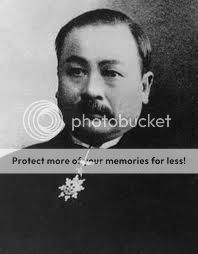
Zhan Tianyou.
Aside from starting to build its own railways, China in the last years of the Qing dynasty was also conducting a policy of repurchase of the ones built by foreigners, as well of renegotiation of earlier agreements, using increasingly fired-up domestic public opinion as a lever against foreign interests. When work on the Beijing-Hankou line, leased to a French-Belgian consortium, had begun in 1898, the Chinese government had inserted a clause in the agreement that would allow it to buy the railroad after ten years, and when the line was inaugurated in 1905, it notified its intention to do so. The line had proved highly profitable, generating a net profit of 5,047 million taels in its first year of operation, and increasing from there (all the more so as, in the perspective of the repurchase, the consortium had cynically slashed all expenses on maintenance). The transfer of ownership was completed in January 1909, although the loan taken up by the Chinese government for the transaction did not do its financial situation any good. As for the policy of renegotiation, it was spelled out by the Chinese vice-minister of foreign affairs, Liang Dunyan, in 1906:
This was the first instance of a practice that the following dynasty would resort to much more systematically, that of invoking patriotic public opinion in its dealings with foreign interests; but one must admit that it was not a question of choice, as the Chinese population was, in this formative period of modern Chinese nationalism, more and more hostile to real and perceived imperialist encroachments on Chinese sovereignty, and the government ignored such sentiment at its peril. The first agreement to be renegotiated concerned the construction of the Beijing-Pukou line by a British-German consortium in 1908: both the British and the German delegates yielded to Chinese pressure, resulting in the construction to be done under Chinese supervision and by engineers chosen by China, with ulterior control of the line going to the Chinese government. This set a precedent for later renegotiations. Another change at the end of the decade was the relative decline of purely national projects, with multinational banking consortia becoming the dominant players in the Chinese railway game, a shift welcome by the Chinese government as it removed the risk of any one country using new rail lines to expand further its area of influence, although it further increased China’s budgetary woes.
In the meantime Chinese civil society, which as we have seen was becoming increasingly vocal in its nationalism, was seeing a number of local initiatives take place to develop rail lines at the provincial level. Led by businessmen and provincial officials, and relying on locally raised capital rather than on foreign loans, those met with mixed success due to mismanagement and a series of corruption scandals, but they resulted in the population, especially in the southern provinces, opposing the Chinese government’s decision to take on more loans of its own. Such borrowing, no matter its justifications, was widely unpopular, as it led to tax increases and led the population to conclude that China’s assets were being taken over by Western banking consortia. In the process, railways became a volatile political issue, one that pitted both provincial governments against Beijing, and Chinese civil society against foreigners; riots were beginning to break out, to the cries of “No foreign control on Chinese railways!” Things came to a boil in January 1911, when Sheng Shuanhuai was appointed Minister of Communications and put in charge of straightening out the financially murky situation of China’s domestically-managed railways: Sheng was notoriously corrupt and, worse still, was seen (not altogether inaccurately) as overly friendly with foreign interests. The last straw was when he announced his intention to nationalize the provincial railways and, simultaneously, agreed to yet another loan: together, the two decisions were perceived as evidence that Sheng was going to sell the railways to foreign bankers. Provincial associations sprang up to defend the railways, especially in Sichuan, where the movement was placed under the leadership of two members of Kang’s organization, and received the support of anti-Manchu secret societies. When the central government tried to crush the movement, protests flared up throughout the province and snowballed into a general uprising. Military reinforcements were brought in from neighboring Hubei, where a local Tongmenghui cell took advantage of the situation to spark a mutiny in the Wuchang garrison and seize control of the city; the revolution that would bring down the Qing dynasty had begun, and it was over railways.
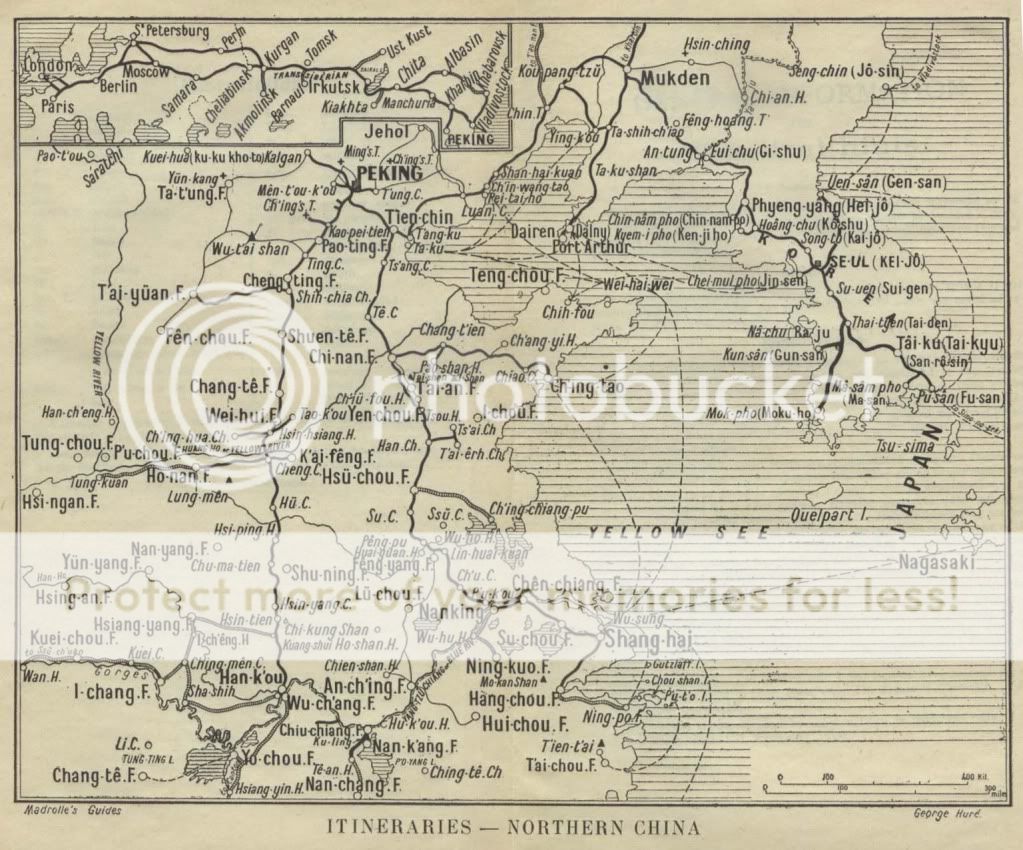
The railway network in North China, 1912.
The collapse of the Qing dynasty did not result in the pace of railway construction slowing down: lines in the process of being laid down by foreign interests were completed without hindrance even as the revolution was taking place, and likewise the political horse-trading of the Interregnum Republic had little short-term impact on railways. Indeed, it was one of the issues the republicans and neo-monarchists saw eye to eye on; Sun Yixian, for one, was such a railway enthusiast that after he had requested the portfolio of transportation in the Kang-Liang provisional government, and although he had resigned in May 1912 when Kang began the preparations for imperial restoration, he had in his three months as transportation minister designed a highly ambitious project for laying some 160,000 km of railroads throughout China. While this project, in its utter lack of realism, shows that Sun was seriously out of touch with basic facts of Chinese geography (note, in particular, the density of rail lines in virtually uninhabited parts of Mongolia, Xinjiang and Tibet, including some that would have been running at altitudes of over 6,000 meters), it shows how committed the republicans were to improving the country’s rail network, which as of 1912 comprised 9,820 km of lines—comparing favorably in absolute if not relative numbers with Japan, whose own rail network at the time had a total length of 7,840 km—with more in the process of being laid down. It is, incidentally, ironic that Sun’s project inadvertently bore the same name (Build the Nation) that Kang would choose for himself when he proclaimed himself emperor.
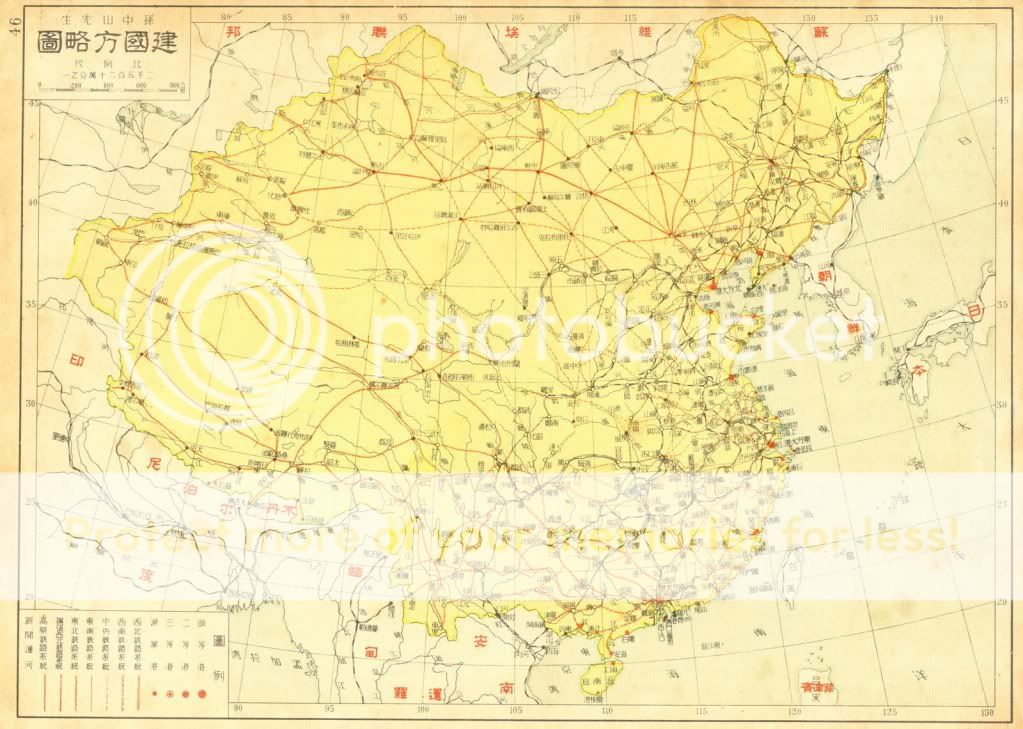
Sun Yixian’s project.
Because the previous dynasty’s reckless policy of loan-taking had been a significant factor in its overthrow, the new one was more careful in its approach to capital acquisition. Having successfully negotiated the emergency “reorganization loan” in March 1912, which gave it some breathing room, the provisional republican government and its neo-imperial successor were in a more confident position to borrow funds on less disadvantageous terms than had usually been the case until then [2]. In September 1912, this policy shift was concretized by the signing of the Longhai Contract with a Franco-Belgian consortium, the Compagnie Générale des Chemins de fer et Tramways en Chine, for a loan of 250 million francs (at 5% interest) for the prolongation to the East and West of the Luoyang-Kaifeng line, which the firm had obtained in 1903 and built between 1906 and 1909 to Yinghao. The agreement included the absorption of the existing line into this new one, which would link Lanzhou (Gansu) to Lianyungang (Jiangsu) via Xi’an, Zhengzhou (where it would intersect the Beijing-Hankou line), Kaifeng, and Xuzhou (where it would intersect the Tianjin-Pukou line); this made it, at 1,800 km, the longest line in China. As Jean Ullens de Schooten wrote in The Railways of China in 1928,
This was largely the work of Robert de Vos, former Belgian consul in Tianjin and Kobe, who after leaving the diplomatic corps, had become a freelance lobbyist and middleman for Western banking consortia in China. He met with further success by negotiating on behalf of the Société Belge des Chemins de fer en Chine and the Société Française de Construction et d’Exploitation des Chemins de fer en Chine a loan of 10 million pounds (an identical amount as the previous agreement) for the construction of a North-South line going from Datong to Chengdu.
However, the new Chinese regime had as little control as the previous one over the extension of railways under respective Japanese and Russian ownership in the Manchurian provinces, having no meaningful leverage over either power, and both the (Japanese-owned) South Manchurian Railway and the (Russian-owned) China Eastern Railway continued adding new lines with only cursory acknowledgements to Chinese national sovereignty. This was an especially acute concern for China, as both countries had common borders with it, and their respective national networks were linked with the lines they kept building on Chinese soil, blurring the distinction between “soft” and “hard” imperialism. When, in late 1913, Russia started work on a rail line between Verkhneudinsk on the Trans-Siberian and Urga in Mongolia, the initiative was universally perceived in Chinese political circles as the first step towards Russian satellization of the territory in the same manner as Manchuria, where Harbin had become a Russian city in all but name; but diplomatic protestations notwithstanding, there was nothing China could do to oppose the move, all the more so as Russia and France were then in the friendliest of terms, and the Qian dynasty could not afford to antagonize the latter, being dependent on its continued goodwill in too many ways.
This concern was one of the reasons the new regime embarked on an ambitious policy of railway construction, using the profits generated by existing lines under central government management to finance the building of new ones, in a self-reinforcing cycle of capital investment and generation, and completing the shortfall with the emission of national bonds. Already, in the wake of the narrowly averted Mongolian secession in the spring of 1912, the decision had been taken to establish a rail link between the territory and the Chinese home provinces in order to tie it more closely to the rest of the empire and, if necessary, make troop deployment in the region easier. This priority assignment was entrusted to Zhan Tianyou in person, with the line starting in Kalgan (already linked to Beijing thanks to Zhan’s earlier work), following a westerly route through Datong, Hohhot, Baotou and Wuyuan, and from there going due North to Urga. Preliminary work started in early 1913 and the line was completed at the end of 1917. In the South, the construction of the Chengyu line between Chengdu and Chongqing, begun in 1909 but interrupted in 1911, was completed in 1914; and Changsha was linked to Shaoguan on the one hand (thus making train travel between Canton and Beijing possible) and with Nanning via Guilin and Liuzhou on the other; both lines were inaugurated in 1916. The nationalization of the provincial lines, which as seen above had proved an explosive issue in the last year of Qing rule, was postponed until tempers had cooled and, more importantly, until capital was available to fund the operation, as relying on a foreign loan to that purpose would be politically imprudent. A new emission of bonds was considered in 1914, but the outbreak of World War 1 resulted in the project being shelved until further notice. However, communications minister Liang Shiyi (whose portfolio included railways after the Transportation Ministry was merged with his own following Sun’s resignation) did set up a Railroad Standardization Board in April 1913, in order to address the issue of wildly varying standards throughout China’s rail network. Indeed, rail lines had up to now been run with no consideration for any coherent nationwide norm, each country using its own on the lines it operated, and even the provincial governments unilaterally choosing their own standards, interoperability be damned. About the only constant was the use of the standard gauge, and even that came with exceptions, namely the Yunnan and Shanxi lines (which used narrow gauge) and the Russian lines in Manchuria and Mongolia (which used broad gauge). Some 40 different types of freight cars were in use when, by Kinder’s estimate, six would have been enough; signalization was non-uniform; rolling stock from certain countries could not even be attached to that of others without modifications; and the rates and accounting methods varied from line to line. Liang Shiyi appointed Yale graduate Wang Jingjun as Board director, and hired as a technical advisor Charles Francis Adams, former Pacific Union Railroad president (and grandson of John Quincy Adams), who had dealt with a similar problem in his home country [3]. Although the complete standardization of China’s railways would not be achieved until 1945, by 1916 the more glaring interoperability problems on domestically-managed lines had been satisfactorily addressed, and a relatively coherent national rate and accounting system was in place.
The development of railways, as Millard had observed in 1906, had the added bonus of encouraging the growth of the domestic industrial base, whether primary industries (coal and iron mines, iron foundries) and transformation ones (manufacturing plants for locomotives, rolling stock and other equipment): even though China kept importing much of its railroad supplies, through no choice of its own in the case of foreign-controlled rail lines, it was increasingly relying on domestic suppliers. A company like Tangshan Locomotive and Rolling Stock Works, which had started out humbly enough with the assembly of the aforementioned Rocket of China, was already employing some 3,000 workers in 1905, and by 1915 its size had more than doubled to respond to increasing demand from the rapidly-expanding domestic train transportation network. This growing manufacturing capability would soon come in handy.
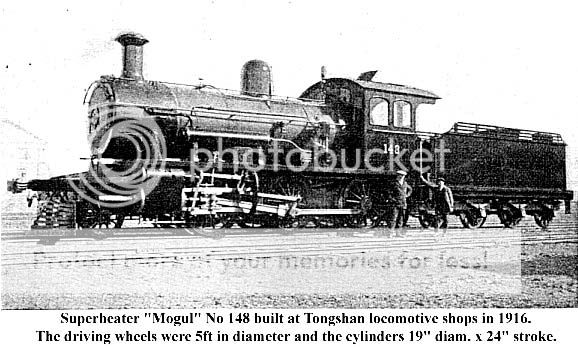
[1] See Doctor What’s “The Road to Yakutia”.
[2] See “The Years of Salt and Rice”.
[3] Misidentified as his younger brother Henry Adams in Joseph Marchisio’s otherwise excellent Les Chemins de fer chinois: Finance et diplomatie (1860-1914).
This is the story of a sleeping giant that shook itself awake.
In 1911, China was called "the sick man of Asia". Its ruling dynasty was in a terminal state of deliquescence; its territory was being encroached on all sides by imperialist powers; it had lost critical elements of its sovereignty; long gone were the days when European powers respected its civilization, instead dismissing it as backwards and fossilized.
And then something happened.

******
PART I: THE BEGINNING IS A VERY DELICATE TIME
Forgotten Achievements
From “A Revisionist Assessment of China’s Modern Political Myths” by Geraldine Brandt, Journal of Asian Studies, Volume 55:3, 1995:
That the instauration of the Qian dynasty had been a transformational moment in the history of China was conventional wisdom to such an extent that it wasn’t until the 1960s that academics would begin to challenge the claim. It was a neat, tidy, and above convenient interpretation, one that had been part of official Chinese historiography for over a half-century; that it went unquestioned in China itself was understandable enough, especially when one keeps in mind that the authoritarian nature of the regime would not be relaxed until several years into Wensheng’s reign. It is however more puzzling that even non-Chinese historians took it largely for granted all that time. The first serious revisionist attempt was that of French Sinologist Lucien Bianco in 1967, Revolution and Reform in China 1895-1947. (…)
While politically useful to the regime, the idea that the advent of the Qian dynasty in 1912 had been a turning point, before which China had been in slow but inexorable decline, and after which it began to rise again, is one that was increasingly disputed by a new generation of historians who followed into Bianco’s footsteps. The truth turns out to be rather more complicated.
The dominant interpretation is now that the Qian dynasty, to put it bluntly, got lucky; it took over at the right moment to benefit from a series of reforms that had been implemented over the past decade and a half, as well as a piecemeal modernization that, after a half-century, was finally beginning to bear tangible results. It may therefore be argued that the main achievement of the new regime was simply not to squander the fruits of its predecessor’s labor. In other words it is probable that, the alleged merits of the Qian dynasty notwithstanding, any other successor regime—including, probably, a Republican one under either Sun Yixian or Yuan Shikai—would by and large have met with a similar degree of success.
A first example concerns the field of education. While Jianguo and his indispensable prime minister Liang Qichao received credit for the thorough overhaul of the Chinese education system after 1912, the truth is that the foundations had already been laid before that. In the previous 15 years a string of reforms, some of them initiated by Kang and Liang themselves in 1898, had already begun adapting to the modern era the obsolete education system, essentially inherited from the Song dynasty and in a state of advanced decay by the end of the 19th century: the old civil service exams had been abolished in 1905; modern universities had been opened (Beijing University in 1898, Fudan University in 1905, Qinghua in 1911, and the venerable Nanjing University, originally founded in 258 CE, was converted into a modern college in 1902); and most important, the system had been rationalized along Western lines between 1901 and 1905, with a primary, secondary and tertiary levels. As far as more specifically military education was concerned, the Baoding Military Academy was up and running from 1901, churning out class after class of army officers trained to Western standards.
If one looks at industries, the facts tell the same story. It is often forgotten how close China had come in the 1860s from having a Meiji Era of its very own. That the Self-Strengthening Movement of the late Qing had ultimately foundered hardly means that its efforts were in vain: they laid the foundations of subsequent industrial development. Who, outside of a narrow circle of historians and weapons buffs, is today aware that the Jiangnan Arsenal, founded in 1865 by Li Hongzhang and Ding Richang, had within five years become the largest manufacturer of modern weapons in East Asia? Who remembers that, while Japan would not produce its first iron-hulled warship until 1887, the dockyards at Jiangnan were already churning out such ships as early as 1872? That until their destruction during the Sino-French War in 1884, the Fuzhou Shipyards were larger than any in Japan? That the steel foundries and arsenal set up by Zhang Zhidong in Wuchang and Hanyang respectively had by 1911 blossomed into a thriving industrial complex in Hubei province, with, among other factories, some 300 cotton-weaving mills employing a total of 12,000 workers?
Then there is the transportation infrastructure. In 1912 China boasted a respectable 9,820 km of railroads, 30% of which were under direct government ownership; more were in the process of being laid down, and the regime change did not make a noticeable difference as far as the pace of building was concerned. It was thanks to the existence of railroads that the settlement of Inner Manchuria, mostly by peasants from Shandong, had been able to proceed so briskly in the last decades of Qing rule. After the railway from Beijing to Hankou was opened in 1905, commercial traffic in Hankou was multiplied by three in as many years. And while the intended purpose of foreign-built railroads was to make the Chinese hinterland accessible to overseas imports, they also enabled a steep rise in Chinese exports to foreign markets, with 80% growth between 1904 and 1912 (tea, cotton, soybeans, tin, etc.).
These and more achievements of the late Qing were opportunistically minimized by official historians after 1912, the better to give the Qian dynasty credit for “reversing” China’s decline and “putting the country back on the path to greatness”. But perhaps said decline had in fact already been reversed by 1912…
******
The Interregnum Republic
The Interregnum Republic
If we were to adopt a democratic system of government now, it would be nothing less than committing national suicide… To put it in a word, the Chinese people of today can only be governed autocratically; they cannot enjoy freedom. I pray and yearn, I pray only that our country can have a Guanzi, a Shang Yang, a Lycurgus, a Cromwell alive today to carry out harsh rule, and with iron and fire to forge and temper our countrymen for twenty, thirty, even fifty years. After that we can give them the books of Rousseau and tell them about the deeds of Washington.
— Liang Qichao, Notes from a Journey to the New Continent, 1903
— Liang Qichao, Notes from a Journey to the New Continent, 1903
Excerpts from The Accidental Revolution: The Collapse of the Qing Dynasty and its Aftermath by Jonathan Spence, 1979
After Yuan’s death, it was obvious both for his former followers and for the Republicans under the leadership of Huang Xing and Sun Yixian that, unless an agreement was found for his successor, the two factions would come to blows in short order; and neither felt that it had enough of an advantage over the other to take such a chance. But who could be acceptable to both sides? Sun, who had briefly been the Republic of China’s first president, had already conceded to Yuan in the first place; Huang or any other Republican would be in no more favorable a position. The Beiyang faction, on the other hand, had only been held together by Yuan himself; with him gone, its various members seemed poised to become so many rivals, and the more lucid among them knew that if one of their number took over, he would likely turn against the others. For different reasons, the two sides therefore came to the same conclusion: a compromise figure had to be found in order to secure their respective gains.
The list of potential candidates acceptable to Republicans and Beiyang officers alike was a short one; it had to be someone with credentials both as a reformer, to placate the actors of the recent revolution, and as a conservative, to guarantee that Yuan’s former supporters would retain their preeminence. Li Yuanhong, as former vice-president to both Sun and Yuan, and since February 24 the acting president, suggested himself, but his bid was rejected out of hand by the Beiyang faction and did not receive much support from the Republicans, for whom he had all along been an ad hoc military leader, and not one seen to have the requisite political skills. They had not forgotten that he had only taken command of the revolutionary armies literally at gunpoint, after being dragged out from under his concubine’s bed where he was hiding.
Enter Liang Qichao, who, at a still-youthful 39 years of age, already boasted nearly two decades of political activism, first as Kang Youwei’s disciple, then as a co-founder of the Baohuanghui, and most recently as a journalist and pamphleteer. Liang, formerly an outspoken supporter of constitutional monarchy, had since the death of Emperor Guangxu in 1908 moved closer to the Republican ideals of the Tongmenghui, and enjoyed the trust and personal friendship of Sun Yixian—he had at one point been his son’s private tutor. Having arrived in China a week after Yuan’s death, he was put forward by Sun and Huang as their compromise candidate. The Beiyang faction, however, was lukewarm: from their perspective Liang’s closeness to the Republicans was, like Li’s, a liability.

Statue of Liang Qichao.
The impasse was resolved when Liang met with a delegation of the most senior Beiyang officers that included Duan Qirui, Zhang Xun and Cao Kun, as well as Yuan’s closest friend Xu Shichang. Together, after a long closed-doors negotiation, they came to an agreement: the next president would be Liang’s own former mentor Kang Youwei. The onetime architect of the Hundred Days reform movement, and leader of the Baohuanghui, Kang had unlike Liang remained a steadfast advocate of constitutional monarchy, and even though he was seen as a radical a decade and a half earlier, the evolution of the political situation since then had led to his becoming perceived as something of a conservative. Xu and Zhang in particular considered him a safe fallback choice, and Liang, for his part, felt confident that he could exert critical influence even as his former mentor was ostensibly put in charge. The final arrangement was therefore that, with Kang as president, Li Yuanhong would retain the mostly ceremonial position of vice-president, and Liang would be prime minister.
That the cobbled-together arrangement failed to fully satisfy anyone is probably a reason why it worked out. (…)

Xu Shichang.
***
The fate of the Republic of China was strangely foreshadowed by that of the Republic of Formosa, which had lasted a mere five months between May 23 and October 21, 1895—though it that case the political experiment was terminated by Japanese annexation. Formally proclaimed on January 1, 1912, the Republic of China only lasted until July 16, and went down in Chinese history books as the Interregnum Republic. In those eventful seven months, it was led by three presidents, the last one of whom went on to become emperor.
In hindsight, there never was any doubt as far as Kang Youwei was concerned that he had only accepted the position of president in order to steer the country towards imperial restoration. Certainly, however unreliable official historiography is on certain other sensitive topics, it can be trusted on the fact that Kang was not primarily motivated by personal ambition, and the disclosure of his private archives has confirmed what had been asserted by his heirs all along, namely that, had the Dowager Empress Longyu not formally abdicated on behalf of the infant emperor Puyi on February 12, he would have simply sworn allegiance to the latter and actually restored the Qing dynasty. But the abdication meant that such was not an option for this punctilious Confucian; so the only other logical choice for him was the creation of a new imperial dynasty.
But if Kang’s behavior was unsurprising even without the benefit of hindsight, Liang’s remains a topic of speculation. He had known Kang for twenty-two years and had been his faithful disciple for eighteen, so he must have been aware that his master would, given the chance, overthrow the fledgling republic. That he nonetheless suggested him to succeed Yuan Shikai as president thus implies that his ideological loyalties were at the time more fluid than Sun and the other Republicans had been led to believe. We may conclude that he was not concerned about the formal type of regime that ruled China, so long as it was one, whether Republican or neo-Imperial, that got things done. Of course, as prime minister, he was in a very good position indeed to ensure that they did get done according to his own priorities, and that he would answer to a president or a constitutional emperor was a secondary concern. In all likelihood, he merely adapted his political convictions to the new circumstances.
Sun Yixian would, in his memoirs, later claim that he was deliberately led along by Liang; a more likely hypothesis is that he had persuaded himself of Liang’s attachment to the Republican cause, and that Liang had considered opportune to not explicitly dispel the impression until the last moment. Certainly Liang does not seem to have made any openly deceitful statement, and in any case the respect he felt for Sun was genuine. (…)
President Kang and prime minister Liang had to perform a delicate balancing act when they assembled the governmental cabinet and assigned the top positions of the new regime’s structure. Enough members of the two opposite factions had to be included so that both would have a vested interest in endorsing the government, and neither would feel cheated of its spoils. Several weeks were spent in confidential negotiations before the composition of the cabinet was finally disclosed. The Republicans were given several senior portfolios, with Lin Sen named finance minister, Hu Hanmin justice minister, Huang Xing home minister, Song Jiaoren navy minister, and Sun Yixian entrusted with the custom portfolio of transportation minister (he presently set to work on a pet project of his, a plan for a radical overhaul of China’s rail network that would prove wildly unrealistic). The Beiyang faction also got its share of sensitive portfolios: Tang Shaoyi was named foreign affairs minister, Liang Shiyi communications minister, and Xu Shichang received the critical position of defense minister, while Li Jingxi became speaker of the Senate, and Duan Qirui, Zhang Xun, Cao Kun and Wu Peifu all got positions in the Chiefs of Staff Committee. Positions not attributed to either faction went to members of the Xianyuhui (the successor organization to the Baohuanghui), unaffiliated monarchists and assorted apolitical officials; Tang Hualong, in particular, became Speaker of the House.

Yang Du.
With the cabinet assembled, attention turned to the Constitutional Convention, officially convened on May 19. Kang and Liang had attributed its chairmanship to renowned legal scholar Yang Du, whose monarchist convictions were a secret to none. Although the Republicans had been initially reassured to see an American legal scholar, Frank Johnson Goodnow, invited as special advisor and vice-chairman, their hopes for a wholly new foundational document were soon dashed when it surfaced that the Convention, rather than starting from scratch, would in fact be using as a basis the unfinished draft constitution begun in 1908, which heavily borrowed from the Japanese Constitution promulgated in 1889. This sent a clear signal that the ultimate goal of president Kang was constitutional monarchy rather than the preservation of the Republic, and the timing was calculated to precipitate a clash within the Republican faction. On the one hand, the pragmatists led by Hu Hanmin insisted that the two things that really mattered were the existence of a genuine parliamentary assembly with constitutionally guaranteed prerogatives, and the presence of Tongmenghui members—themselves—at the heart of the executive where they would have the most influence; on the other, the radicals led by Sun Yixian considered the imminent demise of the Republic an unacceptable betrayal of their ideals, and called for a second revolution. Meanwhile, Liang acted as liaison between Kang and the Republicans, and offered assurances that, even though the regime was going to become technically monarchic, the essential gains of the Xinhai revolution would be preserved. In the end Sun and Song Jiaoren resigned from their respective ministries, but the others accepted to stay on. This coincided with the start of a carefully orchestrated press campaign, in which Liang displayed his sharply-honed skills as an opinion journalist, to sell the idea of imperial restoration to the politically informed public.

Frank Johnson Goodnow was invited by Kang to help draft the Chinese Constitution.
He stayed in China from 1912 to 1914, first as vice-chairman of the Constitutional Convention,
then as special advisor to its successor body the Constitutional Council.
To Song Jiaoren who was praising Sun Yixian as "the Chinese Washington", Goodnow replied:
"China doesn't need a Washington so much as a Bismarck.
Give her a Washington now, and before long she will need a Lincoln."
Sun, Song and other radical Republicans such as Wang Jingwei left Nanjing for Guangzhou where they were hoping to regroup faithful Tongmenghui elements and resume armed struggle, but upon arriving there realized that this was not a viable option: the two provinces of Guangdong and Guangxi were under the control of military governor Lu Rongting*, with whom Liang had previously struck an agreement, exchanging his loyalty to Kang against his being granted his position for life. Lu now had enough of a vested interest in the success of Kang’s scheme to oppose any Republican attempt to use his provinces as insurrectionary rear bases. After a few desultory clashes between Tongmenghui forces and Lu’s army in Guangzhou, the rebellion petered out; at Liang’s urging, Kang then issued a blanket amnesty that resulted in Sun and Song losing most of their remaining followers. They both left for Japan where they created a successor organization to the Tongmenghui, the Guomindang or National People’s Party; in time, after the reconciliation with the Republican moderates, it would become the new regime’s main parliamentary opposition.

Jianguo's Gaze pierces the Clouds, propaganda painting.
By the end of June, there no longer remained any serious political obstacle to Kang’s neo-imperial restoration; few members of the Beiyang faction cared enough to make a fuss, most being content with the positions they had been granted, and those members of the Republican faction who hadn’t been placated had now marginalized themselves. In Chinese civil society at large, although the progressive elites criticized what they perceived as a step backward, and some of the more radicalized university students staged demonstrations in Beijing and Shanghai, the general consensus was that Kang-Liang (as they were once again being referred to, in reference to the Hundred Days of 1898) deserved the benefit of the doubt. After the revolutionary fighting of 1911 and the uncertainty it brought, the country seemed stable enough. Millions of people waited for what would come next, some with misgivings, others with cautious. It would, for everyone, be something of an anticlimax.
The Constitutional Convention had not yet finished its work when Kang formally declared the instauration of the Qian dynasty on July 16, 1912, having chosen for its name that of the first trigram of the Yijing’s divination system (☰), which symbolizes vital energy at its apex. As for his own dynastic name, Kang had decided on Jianguo, “Build the Country”—as clear a statement of intent as could be; though to the Western public he would be known, inaccurately, as Emperor Kang. He wanted a Confucian ceremony in full traditional regalia, intent of respecting ritual to the letter, but Liang managed to talk him into making a number of key concessions to modernity. After the pump and circumstance, the polite revelry and the symbolic trivia of regime change had taken place, business as usual resumed both for the political class and the country as a whole. For years afterwards, government officials assigned to the more remote rural areas would come across people who had never even heard that for seven months in 1912, they had lived under a republic.
* Lu Rongting was a rather colorful figure of late Qing and early Qian China. He had started out as a highway robber who, after gathering a band of outlaws under his leadership, had become so notorious that the central government, rather than fight him, offered him a job as a military officer. By 1911, he had risen to the position of vice-governor of Guangxi, and took advantage of the revolution to set himself up as governor, and expand his de facto rule to neighboring Guangdong. Thanks to his opportunistic endorsement of Kang's imperial restoration, he became governor-for-life of both provinces.
******
How high are the mountains?
“The mountains are high and the emperor far away.”
– Chinese proverb
– Chinese proverb

Statue of Emperor Jianguo.
Excerpts from The Resurgence of China 1911-1945 by Lionel B. Gates, 2002
If Kang’s neo-imperial scheme was allowed to proceed with relatively little opposition, it was mostly because the national stage was no longer, at that point, the only locus of political decision-making, or even, arguably, the most important one. An important consequence of the Xinhai revolution had been the de facto devolution of many of the central government’s prerogatives to the provincial level; and so long as both the revolutionaries and the moderates who had endorsed the overthrow of the Qing (whether sincerely or out of opportunism) were allowed to retain their control over the provincial governments, what happened in Nanjing was not a fundamental concern to them.
One of the reforms implemented during the last years of Qing rule had been the creation of provincial assemblies, in response to increasingly pressing demands from progressive local elites to be given a voice in the political process. These assemblies were widely seen as inadequate, since their role was a purely advisory one, and they were deprived of genuine decision-making powers; nonetheless, they had provided a forum of expression for men eager to contribute input to the political management of their provinces. Their membership consisted, for the most part, in public officials, representatives of the landed gentry, and rich businessmen—the informal leadership of traditional Chinese society. Many of them either were Constitutionalists (in other words, they belonged to Kang Youwei’s organization) or had Constitutionalist leanings, or, out of frustration at the sclerosis of the Qing, had joined Sun Yixian’s Republican organization; and even the politically unaffiliated ones yearned for opportunities to enact badly-needed reforms. When, in October 1911, the revolution started in Hubei, and then spread to other central and southern provinces, the eviction of central rule had resulted in the provincial assemblies claiming the actual decision-making powers that they had previously been denied, including the organization and command of military forces, the collection and allocation of taxes, and the appointment of local and provincial bureaucrats. In fact, as revolutionary forces were taking over, they generally made sure to minimize administrative disruption by working together with local officials so that bureaucratic continuity was not endangered, but its control simply transferred from agents of the central government to the provincial assemblies. As Edward McCord writes,
[T]here was no general collapse of civil administration at local or provincial levels. The cases of Hubei and Hunan in particular show how provincial revolutionary regimes often worked with local elites to minimize the disruption of local government. They also moved quickly to reorganize provincial administrations and to select civil bureaucrats to replace imperial appointees. Simply in terms of administration, the revolution caused some temporary disruption but certainly no general political vacuum… [T]he provincial governments explicitly called for the continuation of normal local administration and urged local officials who were willing to renounce their allegiance to the [Qing] dynasty to remain at their posts.
By February 1912, the provincial assemblies had solidified their control over local government, and collectively represented a political force that could not be ignored by whoever would be in charge in Nanjing.

The Xinhai Revolution, 1911-1912.
The situation was a mixed blessing to Kang Youwei when he became the third President of the Republic. On the one hand, the fact that many provinces were now controlled by men either affiliated to his organization or sympathetic to its aims could be seen as a positive development. On the other, this spontaneous devolution meant that even after successfully sidelining the National Assembly, his nationwide rule was still constrained by the provincial assemblies, whose semi-autonomous status, even if largely informal, could act as a local check on the central government’s powers. Nor was post-revolutionary decentralization limited to civil administration: as will be explained below, the army was in much the same situation.
Kang realized that he would have to curtail the powers that the provincial assemblies had granted themselves, but that was easier said than done. He had been able to replace Republican with Neo-imperial rule precisely with the proviso that the regime change would leave lower levels of governance unaffected; were he to frontally contest the legitimacy of provincial self-rule, he would almost certainly face the very rebellion he had so skillfully avoided when he had set himself up as Emperor Jianguo. As Liang had reportedly argued, paraphrasing Laozi, “China is a fragile vase; clench it too tightly, and you may break it.” He instead advised a policy of accommodation: in exchange for the formal—and constitutionally guaranteed—recognition of the decision-making powers of the provincial assemblies, the central government would retain the prerogative of appointing provincial governors of its choosing. In essence, this arrangement replicated at the provincial level the situation at the national level, in which a prime minister (theoretically) elected by the legislative assembly shares executive power with the unelected head of state. Kang and Liang’s assumption was that, over time, administrative and budgetary creep would tilt the balance of power in favor of the governor, who would become the equivalent of a departmental prefect in the French Third Republic.
Whereas in theory, Nanjing had discretionary authority when choosing governors, in practice the choice tended to be determined by the bargaining strength of a given provincial assembly vis-à-vis the central government, which itself largely boiled down to budgetary issues: provinces in need of government help to finance local projects or to develop infrastructures—or, simply, to balance their books—were not in a position to contest a gubernatorial appointment, while those that ran surpluses or were able to operate without assistance from above got away with “suggesting” candidates that Nanjing then quietly endorsed. As a result the rule of avoidance, which until 1911 had required that governors be appointed in a different province than the one they were from in order to avoid the development of clientelist networks, was no longer consistently enforced—though it still was for public officials at the county level.
Because the relative power of provincial assemblies ebbed and flowed, a governor was not appointed for a fixed term, but until such time as the central government decided or the provincial assembly felt confident enough to press the issue of his replacement. Some of the governors appointed in 1912 served a mere three years before being reassigned, such as Li Shengduo in Shanxi and Cheng Dequan in Sichuan. One obvious exception was Lu Rongting, governor of Guangdong and Guangxi, who had been appointed for life and ruled his provinces as a quasi-potentate, using enticements and threats in equal parts to preempt any challenge to his hegemony. In Tibet, there wasn’t even a pretense of consent: when Cen Chunxuan was sent to Lhasa as governor, he arrived in a province that the Qing dynasty, as one of its last initiatives before collapsing, had put under actual military occupation; and the new regime had no intention whatsoever of allowing it to escape Chinese suzerainty.
General elections were scheduled for February 1913, based on the post-revolutionary expanded franchise (from 1% under the late Qing, the electoral body had been increased to about 8% of the population, which, while still restricted, compared favorably with the situation in Japan at the time). Ironically, while it was the Republicans who had insisted on elections since July of the previous year to strengthen their position against Kang by claiming democratic legitimacy, the timing played to their disadvantage, since the campaign took place as they were divided between the advocates of conciliation and the hard-liners. Unable to present a united front, they lost much of their political credibility with an electorate eager for order after the turmoil and uncertainty of revolutionary times. Although the Progressive Party was little more than the mouthpiece of Emperor Jianguo and his prime minister, it benefited from its perception as a cohesive force, its broad (if sometimes shallow) base of support among local elites, and most of all from the electorate’s sheer revolution fatigue: few people seriously wanted a third regime change coming on the heels of the previous two. And once again Liang Qichao proved to be a tireless, energetic campaigner. Although there is plentiful evidence that the ballot was tampered with by agents of the central government, that election paradoxically saw less resort to strong-arm tactics and intimidation than later ones in the following decades, since the apparatus of political control that the Qian would come to rely on wasn’t yet in place; despite numerous instances of ballot-stuffing and figure-cooking, the 1913 election was (if only by default) the most transparent one China would know for the next half-century. Here again, the exceptions were Guangdong and Guangxi, where cases of overt anti-Republican violence were reported, with opposition supporters beaten up by gangs of thugs or even by soldiers of the provincial army, and many voting precincts only carrying Progressive Party ballots. When the last votes were counted, only Fujian, Guizhou and Jiangxi had Republican parliamentary majorities.
However, if Jianguo and Liang’s position was now stronger, their party’s electoral victory hardly implied a mandate to reverse the post-revolutionary devolution to the provincial level: however supportive of the Qian the new assemblies were, none of them cared to renounce their decision-making powers. (…)
***
Jianguo and Liang were amenable to concessions with the provincial assemblies not from any sincere endorsement of political decentralization, but rather because they were not in a position to force the issue. The military option, tempting though it may have been, was not open to them, as the events of 1911 had considerably slackened the chain of command.
One should keep in mind that the Xinhai revolution had first and foremost been a military uprising. In the last years of the Qing dynasty, the deliquescent central government no longer had the organizational or financial means to proceed with military modernization, and had instead entrusted provincial governments with setting up so-called New Armies, namely armed forces trained and equipped to Western standards. Unlike the virtually-defunct Eight Banners and Green Standard armies, these new armed forces mostly recruited literate young men drawn from the middle class, as the ability to understand complex orders and follow written instructions were prerequisites; and this very characteristic had made them susceptible to political infiltration, and eventually subversion, by revolutionary activists appealing to the recruits’ nationalism and desire for progress. Unlike the several previous attempts to overthrow Manchu rule, the Xinhai revolution was successful because it used as its primary instrument the country’s very military: in the days and weeks that followed the first uprising in Wuchang on October 10, province after province had seen its New Army join the revolutionary movement. Furthermore, in order to fight loyalist forces, these armies had swollen to considerable size by hiring as many new recruits as possible, so that, by the time the Qing were formally deposed, they counted in some cases three times as many soldiers as they had before the revolution—though the new recruits were mostly ill-trained and ill-disciplined. With, on the one hand, many provincial armies under the command of revolutionary officers, and on the other, their rapid transformation into heterogeneous, bloated masses of men of dubious allegiance, by 1912 China’s armed forces were in no condition to be used by the central government in any attempt to restore centralized rule over autonomy-minded provincial governments.
Because the post-revolutionary state of the armed forces was as much a concern to the provinces as it was to the central government—overly large armies being both an unsustainable budgetary burden and a threat to social order—no time was lost in implementing a nationwide policy of disbandment, so that by the end of the year the provincial armies had shrunk back to their pre-revolutionary size, and had recovered an acceptable degree of internal discipline. Soldiers had been enticed to accept demobilization by being paid up to three months’ wages in one go upon quitting, and some of those that remained had been transferred into the newly-created national gendarmerie, and thus placed under the direct authority of the central government. The greatest resistance to disbandment came not from soldiers but from career-minded officers seeking to maintain their positions. The reduction of general troop strength prior to any elimination of military units was an adroit strategy to forestall such opposition: by decreasing the troop strength of each unit while temporarily preserving command structures, few officers' positions were immediately endangered. Those most suspect of pro-Republican sympathies were offered generous retirement bonuses, and the others were reassigned (with pay raise) to different units outside of their home provinces, in order to sever any parochial loyalties and make them more pliable to the central government’s authority.
Along with disbandment, the reorganization of the New Armies was completed by terminating the policy of voluntary recruitment and instead implementing a nationwide draft. This had both a short-term advantage to the provinces and a long-term advantage to the central government: whereas veteran soldiers were paid a comparatively high salary of 10 yuan a month, draftees would be paid six yuan a month, making the maintenance of the armed forces easier on badly-strained provincial budgets. And with the draft being on a national scale, the central government could claim control over the assignment of draftees, making sure to shuffle them from province to province, thus weakening local loyalties and strengthening a sense of national belonging. The transition, overseen by Li Yuanhong, who from vice-president had become Chief of the Defense Staff, was complete by mid-1914. To his credit, although he lacked both the credentials and the support for high political office, Li proved to be a skilled organizer. He also turned out to be remarkably good at managing the large and easily ruffled egos of staff generals, most of whom were former Beiyang Army officers and clearly intended to trade their endorsement of the new regime for all manners of favors. Keeping rivalries borne of ambition from degenerating into factionalism, while simultaneously ensuring that they wouldn’t coalize into a politically autonomous junta, was a delicate balancing act in which Li, so frequently—and unfairly—dismissed as a bumbling nonentity both by his contemporaries and by posterity, gave evidence of his political acumen.

Li Yuanhong.
In the same spirit of incremental (some would have said creeping) military centralization, the defense ministry under Xu Shichang initiated in March 1913 a program of logistical standardization. Ever since the ad hoc creation of provincial militias by reform-minded officials during the Taiping Rebellion in the mid-19th century, the procurement of weapons and equipment by Chinese armed forces had been a decentralized one, with little concern for operational compatibility at the national level. The decision was thus taken to adopt a national standard, based on the weapons already under production in China’s main modern arsenals, chiefly those of Jiangnan, Jinling and Hanyang. The standard rifle was henceforth the Hanyang 88 (license-made version of the Gewehr 88) and the standard military sidearm the Maosi (license-made version of the Mauser M1896). It logically followed that the two standard rounds for light weapons became the 7.92 mm Mauser on the one hand, and the 9 mm Parabellum on the other. Actual implementation, however, took several years, as some of the provincial armies, out of passive noncompliance or sheer bureaucratic inertia, continued for a while to use nonstandard weapons: for example Lu Rongting had in late 1912 ordered on his own authority a large shipment of US-made Winchester M1895 rifles, which would be in use by his army until the late 1920s (and were still occasionally seen in Chinese soldiers’ hands in the early years of the Second Sino-Japanese War), while the provincial armies of Tannu-Tuva and Heilongjiang were initially issued the Russian-made Mosin-Nagant M1891 rifles, and fair numbers of French-made Lebel Mle 1886M93 rifles found their way into the inventories of Yunnan’s provincial army.
******
The Years of Salt and Rice
“The profits derived from the salt and iron monopolies serve to relieve the needs of the people in emergencies and to provide sufficient funds for the upkeep of military forces. These measures
emphasize conservation and storing up in order to provide for times of scarcity and want. The beneficiaries are many; the State profits thereby and no harm is caused to the masses.”
– Huan Kuan, Discourse on Salt and Iron, 81 BCE
“You must know that a great quantity of salt is produced here… and I assure you that it is exported in many countries round about and is a great source of wealth to the inhabitants and of revenue to the Great Khan.”
– Marco Polo
emphasize conservation and storing up in order to provide for times of scarcity and want. The beneficiaries are many; the State profits thereby and no harm is caused to the masses.”
– Huan Kuan, Discourse on Salt and Iron, 81 BCE
“You must know that a great quantity of salt is produced here… and I assure you that it is exported in many countries round about and is a great source of wealth to the inhabitants and of revenue to the Great Khan.”
– Marco Polo
From “Salt, Silver and Land: Tax Reform in early Qian China” by Park Sunghee, Journal of East Asian Studies, Sept-Dec 2003:
Liang Qichao and Kang Youwei were aware, upon assuming power, that the financial situation of the Chinese government was dire indeed: both of them had wasted no opportunity in the previous 14 years to rail against budgetary mismanagement in general, and the tendency of the late Qing to pile on foreign debt to cover up budget shortfalls. The situation was, if anything, even more serious than they had expected.
The Xinhai revolution had not taken place in a vacuum: the rest of the world, and in particular the imperialist powers with economic and strategic interests in China, were very much involved. They had allowed the overthrow of the Qing to proceed only after being given reassurance, among other things, that the new regime, whichever form it took, would assume the debts of the previous one. First the Interregnum Republic under Yuan Shikai, and then the Qian dynasty under Jianguo, had thus from their inception been saddled with the Qing’s potentially crushing debt. China had first contracted a foreign loan in 1865 in order to pay an indemnity to Russia, but its chronic reliance on borrowing had started in earnest in 1894 to finance defense spending for the forthcoming war against Japan. After 1895, the entirety of the proceeds from China’s customs services, which had been under de facto foreign control since 1854, were earmarked for the repayment of said loans. On top of that came the payment of war reparations to Japan (230 million silver taels) and indemnities to the Eight Allied Powers following their intervention against the Boxer Rebellion in 1900 (450 million silver taels, a tremendous sum to be paid over 39 years at 4% interest). Compounding the severity of these debts, even before 1911 the central government’s tax collection apparatus had become inefficient, and with the provincial governments claiming autonomy in the course of the revolution, by 1912 very little tax money found its way to the capital any more. China stood on the verge of a spiral of ever-growing spiral of indebtedness, in which it would have to borrow money in order to repay previous loans.
On February 23, 1912, the very day before he died, president Yuan Shikai had requested a loan of seven million taels from the Four-Power Consortium in order to get the Nanjing provisional government to disband troops and to liquidate outstanding liabilities. Because of Yuan’s death, the Consortium only advanced 2 million taels on March 1st, and made it known through Tang Shaoyi, who had been Yuan’s provisional prime minister, that disbursement of the remaining amount would be conditional on a guarantee from the Chinese government that the Consortium would get preferential rights for further loans to China. This put the incoming Kang and Liang in a quandary: on the one hand, they were deeply wary of increasing yet further China’s debt to foreign lenders, who were liable to use it as a pretext to encroach some more on Chinese sovereignty; but on the other, they had no other credible option to put desperately-needed money in state coffers. Liang concluded that the money would have to be accepted to avoid complete government bankruptcy, but realized that, the decision being a politically controversial one, a backlash might result if they took it on their own—still rather uncertain—authority. So he submitted the issue to the provisional National Assembly, after arranging a meeting with Lin Sen, whom had just become finance minister, and Sun Yixian and Huang Xing, to share with them his assessment of the desperate straits of government finances. What he did not disclose, however, was that he had been privately approached by the Anglo-Belgian Syndicate (an alliance of the Eastern Bank and the Banque Belge), which had offered to make the Chinese government a secret loan if the Consortium’s offer was turned down [1]. Whether he would have taken up the Syndicate’s offer had the National Assembly voted against accepting the Consortium’s conditions remains a moot point, however, since, as he had expected, Lin, Sun and Huang convinced the Republican delegates to vote along with the Constitutionalists in favor of the loan. The National Assembly having given agreement, Liang had the legitimacy to work out the details with the Consortium. The customs revenue, completely hypothecated for the service of previous loans and the Boxer indemnity, for an undetermined time could only be a secondary guarantee; Liang therefore decided to pledge the proceeds of the salt revenue. As a central condition for floating the loan, the consortium insisted upon a measure of control over the Salt Administration, not merely advice and audit [2]. This was a stringent condition, which almost led Liang to break off negotiations despite the possible consequences. But after conferring with Kang, he understood how that particular requirement, while it outwardly constrained the central government, actually had the potential to strengthen its hand vis-à-vis the provincial governments.
Accordingly, Article 5 of the agreement provided for the establishment, under the Ministry of Finance, of a Central Salt Administration to comprise a “Chief Inspectorate of Salt Revenue under a Chinese Chief Inspector and a foreign Associate Chief Inspector”. In each salt-producing district there was to be a branch office “under one Chinese and one foreign District Inspector who shall be jointly responsible for the collection and the deposit of the salt revenues”. According to John King Fairbank and Denis Crispin Twitchett,
Patriotic sentiment was correct in seeing the insertion of an explicit foreign interest into the administration of China’s salt revenues as a derogation of sovereignty, and the juxtaposition of Chinese and foreign district inspectors in the provinces looked very much like the customs arrangement in which foreign commissioners and Chinese superintendents nominally shared power at the treaty ports. Perhaps, too, because the Salt Administration was a more intimate part of the Chinese polity, one with delicate internal balances and long-standing interests, any foreign role at all was especially galling. The Salt Inspectorate, however, unlike the customs organization, which was a new creation expanding in tandem with the growth of foreign trade, represented at first only the interpolation of a new echelon of administration into a perennial Chinese fiscal complex comprising the manufacture, transportation, taxation and sale of salt. Superimposed upon these traditional arrangements to ensure that the revenues collected were in fact made available to the central government for the service of the loan, the inspectorate did over time acquire substantial de facto control over salt manufacture and marketing. But this control was not linked to any continuing and especially foreign interest comparable to the growth and protection of international commerce—apart from meeting the instalments of principal and interest set forth in the amortization table of the loan. The benefits, such as they were, accrued mainly to the Nanjing government.*[3]
What Liang had done, in essence, was to outsource to foreign agents the task of collecting the revenues of a tax that the central government would, given its weakness in relation to the provincial governments, have otherwise been unable to get hold of at all. He had played two potential foes of his, foreign imperialist interests and uncooperative provincial governments, against one another, and revitalized the fiscal solvency of the central government in the process. Even though a share of the salt tax revenue went to the reimbursement of the loan, the remainder provided state coffers with a welcome injection of hard cash. In fact, the reorganization of the salt tax collection system was a boon to all concerned: in just four years, the annual yield of the tax increased more than fourfold, from $17 million to $71 million [4]. This newfound financial clout gave Jianguo and Liang the breathing space they needed to proceed with their plans.
Most of the loan had gone into clearing China’s outstanding liabilities to foreign lenders, but with the remainder, and especially with steady revenue accruing from the share of the salt tax not going into repayment, the central government was now in a much better bargaining position with the provincial ones. The provincial assemblies, it must be kept in mind, were largely controlled by reform-minded men who, although reluctant to surrender their new decision-making powers to Nanjing, shared Jianguo’s agenda of modernization. Their priorities were the construction of communication and transportation infrastructures, the development of modern industries, the spread of education, and other policies that were in tune with Nanjing’s. But in order to implement them, they needed capital, and even by retaining at their level the bulk of tax revenue instead of forwarding it to the central government, their financial capabilities were often too limited. Starting in October 1912, when the loan came through and the first effects of the new jointly-operated Salt Administration were felt, the central government was therefore able to come forward and offer to complement provincial budgets with loans of its own—which were offered with strings attached. As collateral, just as Nanjing had had to accept a degree of foreign control over the salt tax collection apparatus, it required from the provinces in need of capital that land tax collection be jointly administered between the provincial and central governments. The reasoning was that the Chinese economy, despite the embryonic industrialization undertaken since the 1860s, was still overwhelmingly agrarian; and even if agriculture generated little surplus, it was nonetheless, in aggregate terms, the main economic activity in China. To fail to adequately extract revenue from it would keep government finances dependent on comparatively marginal fiscal revenue, such as the lijin, a tax of commercial transactions introduced as a temporary emergency measure in 1853, which had since then become permanent (it would only be abolished in 1922 [5]).
In every case, the agreement explicitly spelled out that the joint administration of land tax collection would still operate to the benefit of the provincial budget, since the amount of tax revenue remaining at the provincial level would remain unchanged from that of the previous fiscal year, or the average revenue for the five previous years, whichever was higher. The deal was ostensibly offered as an initiative to increase efficiency, which indeed it was; the immediate gain for the central government was that it would, from now on, receive the share of the tax that had up to then ended up embezzled by corrupt local officials taking advantage of lax oversight, or not been duly collected in the first place due to collusion between collectors and local landlords. To that gain was added a more long-term benefit, that of an extension of the central government’s fiscal authority into a tax collection apparatus it previously had no direct control over. A National Revenue Board was created to oversee the process. As Liang put it, “The reach of the bureaucracy determines the strength of the State. The authority of our government only extends as far as an official is in place who can say, ‘This is the will of the Emperor’, and expect to be obeyed.” Within a year, eleven provinces had contracted a loan from Nanjing on these terms; and within two years, all but five of them had done so.
While this centralization of land tax collection was achieved through the back door, the idea itself was hardly a new one and had been championed as early as 1903 by no less a figure than Robert Hart, inspector-general of the Imperial Maritime Customs Service from 1863 to 1907 and one of the most influential Westerners in China:
Among the several reforms urged by Hart after the Boxer Rebellion was the imposition of a nationwide land tax. In his letter of January 26, 1903, he reported that he had advised the Zungli Yamen [Chinese foreign office] “to rearrange the land tax. If China would follow this advice, all would be well.” After outlining the basis for this proposed tax, he stated that China could expect to collect an annual minimum of Tls. [taels] 360,000,000. “China would from that one source receive more than three times her present revenue and could forgo salt gabelle, Customs, and Likin, pay off indemnities and debts, salary officials, keep up respectable field force and navy, and have a balance to the good each year (letter 1263).”
A year later he told [James D.] Campbell that his land tax proposals “are now in the hands of Viceroys and Governors”.**
A year later he told [James D.] Campbell that his land tax proposals “are now in the hands of Viceroys and Governors”.**
Despite his extensive experience with Chinese fiscal matters, Hart was overly optimistic in his estimate. The actual yield of the tax in 1913 was 180 million taels [6]. Nonetheless, it was, along with the salt tax, another steady source of fiscal revenue that Nanjing could henceforth count on: between 1913 and 1931, as agricultural prices, land value and farm wages rose, revenue from the land tax increased by 67% [7].
In 1918, the young US-educated economist Huang Hanliang, who would later become director of the National Revenue Board, made in his book The Land Tax in China an assessment of the reformed system after five years of operation:
One of the most obvious improvements introduced by the Republic was that which consolidated into one single payment all the various levies which had been added to the original tax in the course of the last dynasty. In the analysis of the nature of the tax it was shown that during the Tsing [Qing] dynasty the tax was assessed almost invariably in two parts, one in silver and the other in produce which may be of more than one kind, and that in the course of time various levies under all sorts of ingenious names were added to the original assessments… These various levies have been consolidated into one single payment in most of the provinces, and converted into dollars or copper cents which are the common daily currency of the people at rates established by the government. The taxpayers were thus saved much of the uncertainty and many of the vexatious exactions of the collectors of the old regime…
In 1915, provisions were made allowing ten per cent of the total receipts to the provincial and local authorities as the expenses of collection. In the following year on account of the financial stringencies of the government this allowance was withdrawn, but the local authorities were, then, allowed to add ten per cent to the tax rate to cover the expenses of collection…
A third important and interesting feature of tax reform introduced by the Tsien [Qian] was the confirmation of the title-deeds to land. During the Tsing [Qing] dynasty, as has been mentioned, every transfer of landed property by absoluteor irrevocable sale x was subject to a tax of three per cent of the face value of the sale. This rate, however, was only the nominal legal rate. In practice by virtue of the various extra charges it amounted in some cases to several times the legal rate. The result was that the tax was invariably evaded, either in whole or in part. In the third year of Hsuan-Tung [Xuantong, Puyi’s dynastic name] (1909) a new law was passed providing that the tax of registration of transfer of land was to be nine per cent on irrevocable sale and six per cent on mortgages or revocable sale of more than ten years duration. Outside of these rates the officials were prohibited from collecting any extra charges. But these rates were also prohibitory ; and evasion, either total or partial, continued to exist. After 1913 these rates were lowered from nine per cent on sale to four per cent and from six per cent on mortgages to two per cent…
A fourth and more fundamental attempt at the reform of the land tax introduced by the Tsien dynasty was the creation of the Bureau of Land Measurement in 19 14. The purpose of the Bureau was to make a cadastral survey of the country. [8]
In 1915, provisions were made allowing ten per cent of the total receipts to the provincial and local authorities as the expenses of collection. In the following year on account of the financial stringencies of the government this allowance was withdrawn, but the local authorities were, then, allowed to add ten per cent to the tax rate to cover the expenses of collection…
A third important and interesting feature of tax reform introduced by the Tsien [Qian] was the confirmation of the title-deeds to land. During the Tsing [Qing] dynasty, as has been mentioned, every transfer of landed property by absoluteor irrevocable sale x was subject to a tax of three per cent of the face value of the sale. This rate, however, was only the nominal legal rate. In practice by virtue of the various extra charges it amounted in some cases to several times the legal rate. The result was that the tax was invariably evaded, either in whole or in part. In the third year of Hsuan-Tung [Xuantong, Puyi’s dynastic name] (1909) a new law was passed providing that the tax of registration of transfer of land was to be nine per cent on irrevocable sale and six per cent on mortgages or revocable sale of more than ten years duration. Outside of these rates the officials were prohibited from collecting any extra charges. But these rates were also prohibitory ; and evasion, either total or partial, continued to exist. After 1913 these rates were lowered from nine per cent on sale to four per cent and from six per cent on mortgages to two per cent…
A fourth and more fundamental attempt at the reform of the land tax introduced by the Tsien dynasty was the creation of the Bureau of Land Measurement in 19 14. The purpose of the Bureau was to make a cadastral survey of the country. [8]
As a result partly of the 1912 “Reorganization Loan”, but especially the reform of the salt and land taxes, by 1914 China was already on a much firmer financial ground than it had been for decades. But its fortunes would improve further in the following years thanks to two windfalls, the smaller one half-expected and the larger one quite serendipitous…
* The Cambridge History of China (Volume 12)
** The I. G. in Peking: Letters of Robert Hart, Chinese Maritime Customs, 1868-1907
[1] This is OTL.
[2] This too.
[3] OTL quote.
[4] OTL figures.
[5] 1931 in OTL.
[6] This is a lower figure than the most conservative estimates in OTL, and it’s still a lot of money.
[7] OTL figure.
[8] OTL quote, except for one or two words.
******
Two Streams flowing down
Two Streams flowing down
A large state is the lower reaches of a river:
The place where all the streams of the world flow down to…
Hence the large state, by taking the lower position, annexes the small state;
The small state, by taking the lower position, affiliates itself to the large state.
Thus the one, by taking the lower position, annexes;
The other, by taking the lower position, is annexed.
— Daodejing , Ch. 61
The place where all the streams of the world flow down to…
Hence the large state, by taking the lower position, annexes the small state;
The small state, by taking the lower position, affiliates itself to the large state.
Thus the one, by taking the lower position, annexes;
The other, by taking the lower position, is annexed.
— Daodejing , Ch. 61
From Marches of Empire: Center and Periphery in Twentieth Century China by Gaurav D. Patel, 2001
Even as they were consolidating their hold on the center, Liang and Kang were aware that they had to make sure that the periphery would not break away. The most pressing concerns were the centrifugal forces at work in Tibet on the one hand, and in Mongolia on the other. In both cases trouble came from the existence of pro-independence movements emboldened by the presence, over the border, of a potentially sympathetic foreign power—respectively Britain and Russia.
In Tibet, the Interregnum Republic had inherited from the Qing dynasty a complex situation. While Tibet’s vassalization by China dated back from the Yuan dynasty, Chinese overlordship had not been uniformly enforced throughout the centuries, depending on the priorities and the sheer strength of the dynasty in charge. The Qing had first installed an amban (imperial resident) in Lhasa in 1727, but his authority was more symbolic than real; in 1751, the Qing, while retaining the position of amban, had formally entrusted temporal as well as spiritual rule over Tibet to the Dalai-Lama. From the 1860s, Britain began taking an interest in Tibet as part of its “Great Game” against Russia for geopolitical hegemony in Central Asia. As of the time of the Xinhai Revolution, the basis for British policy in the Himalayan region was the Convention signed in 1906 between Sir Ernest Satow and Tang Shaoyi, by which Britain recognized China’s suzerainty over Tibet:
The Government of Great Britain engages not to annex Tibetan territory or to interfere in the administration of Tibet. The Government of China also undertakes not to permit any other foreign State to interfere with the territory or internal administration of Tibet.
The priority for Britain when signing this Convention was obviously to preempt any Russian expansion into Tibet, there being no other “foreign state” susceptible of interfering with “the territory or internal administration of Tibet”. The principle of Chinese suzerainty was reiterated by the 1907 Convention between Britain and Russia:
In conformity with the admitted principle of the suzerainty of China over Thibet, Great Britain and Russia engage not to enter into negotiations with Thibet except through the intermediary of the Chinese Government.
Endorsing China’s claim was thus seen as the easiest way to keep Russia out of Tibet, but the tacit assumption of British delegates was that China was, in any case, too weak by that point to prevent Tibet’s de facto evolution towards internal self-rule. In this they were mistaken: in 1908, Zhao Erfeng, formerly the acting viceroy of Sichuan, was appointed amban in Lhasa and proceeded to launch a brutal campaign of repression against Tibetans in Kangba (then known to Westerners as Kham), the multiethnic buffer region between Sichuan and Tibet proper. This campaign amounted to ethnic cleansing in all but name, and it soon became obvious that the Qing intended to turn Kangba, until then unofficially considered part of Tibet, into a full-fledged Chinese province—something that was nominally achieved by the Interregnum Republic when the new province of Xikang was created. Acts of violence against civilians and monks prompted Thubten Gyatso, the 13th Dalai-Lama, to issue a protest, but Zhao’s response was to deploy troops throughout Tibet itself in February 1910; the small, ill-trained and ill-equipped Tibetan army was easily routed by Zhao’s modern forces, and a mere year and a half before the collapse of the Qing dynasty, China had reasserted direct control over Tibet. The Dalai-Lama escaped to Darjeeling via Sikkim with a small escort. As for Zhao, his attempt to quell the military uprisings that became the Xinhai Revolution resulted in his being executed by mutineers in December 1911.

The 13th Dalai-Lama.
The situation in Mongolia was even more volatile, largely as a consequence of a change in Chinese policy during the last years of Qing rule, itself a reaction to growing Russian encroachment in the region. Indeed, until the turn of the 20th century, the Qing dynasty had allowed Mongols a significant degree of self-rule. The Manchus had initially taken control of Inner Mongolia in 1636, prior to their conquest of Beijing in 1644. Between 1655 and 1691, they gradually absorbed Outer Mongolia, and in the 1750s, they conquered the Oirats, the Western Mongols of Dzhungaria. China treated North Mongolia as a militarized buffer area largely cut off from Han colonization. Outer Mongolia’s geographical isolation north of the Gobi desert gave it a certain amount of administrative autonomy, while Inner Mongolia, located on the southern side of the desert, became closely tied to the Qing administrative system. However, China’s traditional laissez-faire attitude toward Mongol internal administration had changed in 1902, when, in reaction to growing Russian interest in Mongolia following the completion of the Transsiberian railway, the Chinese government adopted a twofold policy of centralizing the Mongol administration under that of China proper, while at the same time encouraging the Han colonization of Mongol lands. In 1911, on the eve of the collapse of the Qing dynasty, the Chinese government had decided that Inner and Outer Mongolia should be formally incorporated into China. These policies were resented by the Mongols as a threat to their traditional way of life, and this concern was compounded by the rapid rise in the years after 1902 of recently-arrived Han Chinese merchants, traders and businessmen who had taken advantage of the economic opportunities offered by the opening of Mongolia to Han settlement:
Mongol prohibitions prevented the rise of a native trading class, so most trade between Mongols ended up in the hands of Han middlemen. The Han merchants took advantage of the seasonal nature of Mongol produce to buy Mongol animal products at low prices, while selling Chinese merchandise on credit throughout the year. This soon led to the accumulation of enormous debts, thus impoverishing Mongols, who had little choice but to take on more debt.
By 1911 the total debt in Outer Mongolia to Han traders amounted to 15 million taels or about 500 taels per household. The growing Mongol indebtedness to Han moneylenders fed ethnic tensions and hostility to Qing rule.*
By 1911 the total debt in Outer Mongolia to Han traders amounted to 15 million taels or about 500 taels per household. The growing Mongol indebtedness to Han moneylenders fed ethnic tensions and hostility to Qing rule.*
In July 1911, a group of Mongol noblemen and members of the Buddhist clergy had convened a secret meeting, and after consulting the Russian consul in the city of Ikh Khüree, had sent a delegation to Saint-Petersburg pleading for Russian assistance in restoring internal self-rule in Outer Mongolia. While some factions in the Russian government saw it as an opening for making Mongolia a Russian-aligned independent country, the prevailing view was one of moderation:
The Russian government supported the Mongols in their 1911 independence movement to the extent of autonomy but not total independence, and only for Northern and not Southern Mongolia. The Japanese were reasonably satisfied with the occupation of Korea and the concessions they had obtained in Manchuria after their defeat of the Russians in the war of 1904-05.**
The Russian government thus intervened as mediator between the Mongols and the Qing, but as the negotiations were underway in October 1911, the Wuchang Uprising broke out and, within weeks, the dynasty was collapsing. The sudden power vacuum made not just internal autonomy but outright independence a tantalizing possibility: in November, Qing officials in Urga were driven out; on December 1, the nobles and priests of Khalkha Mongolia declared their independence; and on December 29, the Jebtsundamba Khutagtu was declared Bogd Khan. Soon the control of the Khan’s government had spread from Khalkha Mongolia throughout the entirety of Outer Mongolia. Through early 1912 the Russian government continued to offer its services as mediator, but it was increasingly obvious to all concerned that it was tempted to recognize the secessionist Mongol government and would do so unless the Chinese government regained the initiative.
A third territory that China looked set to lose to centrifugal forces as the Xinhai Revolution broke out was Tannu Tuva, then known as Tannu Uriankhai, an outlying region of Outer Mongolia proper. Formally included in the Chinese Empire by the Treaties of Kiakhta and Bura in 1727, it had been acknowledged as such by a 1869 border protocol with Russia. But in 1910 the border markers were unilaterally removed by Russia, a clear harbinger of annexationist ambitions. Russia coveted Tannu Tuva for several reasons: a growing plurality of Russian settlers; the presence of interesting natural resources, especially gold; and its location on a strategic plateau where the two sources of the Yenisei River originated, important for the defense of Siberia.

Bogd Khan.
In March 1912 the situation in both Tibet and Mongolia was thus very much in flux. Realizing that swift action was required, Liang set up the Bureau for Tibetan and Mongolian Affairs under his direct authority as prime minister, removing the question from the home ministry’s jurisdiction, much to the quiet relief of Huang Xing, who justifiably feared that the thorny issue would otherwise consume most of his attention. It is worth emphasizing that, whatever disagreements Republicans and Constitutionalists had in other regards, when it came to the preservation of central rule over China’s peripheral regions, they had exactly the same position, which explains why neither Huang nor any other Republican leader objected to Liang making Tibetan and Mongolian affairs the prime minister’s prerogative. The Bureau was the successor of the recently-disbanded Qing-era Board of National Minority Affairs, and Goingsang Norbu, a pro-Chinese native Tibetan official, was appointed as its director.
Tang Shaoyi, Liang’s incoming foreign affairs minister, who as the negotiator of the aforementioned 1906 Sino-British Convention had retained an interest in the Tibetan issue, urged him to act rapidly lest pro-independence elements gained the upper hand in Lhasa, as they already had in Urga. Liang agreed and decided to resolve the Tibetan and Mongolian issues by linking them together. Aware of British concerns over Russian expansion in Central Asia, he approached the Australian reporter George Ernest Morrison, who had in the previous years become increasingly outspoken in his defense of Chinese interests, and was famous on the Chinese political scene as an extremely well-connected figure. Through Morrison’s mediation a draft agreement was elaborated between the Chinese government and the British Foreign Office: Britain would acknowledge China’s suzerainty over Tibet on the condition that China did not “interfere in the internal administration of Tibet or station an unlimited number of troops in Lhasa or other parts of Tibet” [1], and extended the same recognition to Mongolia (as well as Tannu Tuva) with similar conditions. At the initiative of British minister plenipotentiary in China Sir John Jordan, who rightly saw that China was in a weak negotiating position, the agreement required that Chinese renounce any claims of suzerainty over Nepal, Bhutan and Sikkim (which the Qing dynasty had long claimed as vassals); that the Chinese side of the Sino-Indian border be demilitarized, with only a civilian constabulary force allowed for customs control; and that Chinese officials who had, at the time of the Younghusband intervention in Tibet, “mistreated” British officers, be demoted and sanctioned (these being Zhang Yingtang and Liang Yu). Morrison expressed reservations about the harshness of the terms, considering that the agreement would be as much in Britain’s own interest as it was in China’s, but Jordan’s calculations proved correct, and the Chinese government, in the person of its chief negotiator Wen Congyao, acquiesced to all conditions. The agreement was formalized on June 5 as the Sino-British Convention on the status of Tibet and Mongolia.
Liang wasted no time in publicizing the document in order to display his acceptance of Tibetan and Mongolian internal autonomy, thus making it possible to mend fences with the Dalai-Lama, while emissaries were sent to Urga to negotiate a repeal of the secession. Kang appointed the experienced Cen Chunxuan as the new imperial resident for Tibet; Cen picked up a contingent of reliable troops in Sichuan (where he had previously served two terms as governor) on the way, and upon arriving in Lhasa oversaw the evacuation of the Chinese troops already present, imposing strict discipline on his soldiers to avoid a repeat of the depredations committed by Zhao’s army; the reinstated Dalai-Lama returned to Lhasa, and as per the agreement, Lieutenant-Colonel William Frederick O’Connor, who had been part of the Younghusband intervention, was sent to the Tibetan capital as a British observer. In Mongolia, as a further show of good faith, Liang’s envoys offered that the government assume the entirety of the debts contracted by Mongolian noblemen and commoners alike to Han Chinese traders, a shrewd move that deflated much of the pro-independence movement’s base of support, and, to Bogd Khan, offered to give him the same status in Outer Mongolia that the Dalai-Lama had in Tibet, that of spiritual ruler with full authority in religious matters, and temporal ruler acting under the suzerainty of the Chinese government, represented by a high commissioner (a title conspicuously chosen to avoid any mention of governorship), which was to be Zhu Jiabao. The Khan added a condition of his own: that any further Han settlement be subjected to his approval. The envoys accepted, although they obtained that settlers already present as of August 1911 be allowed to stay. The resolution of Mongolia’s bid for independence also resulted in Tannu Tuva agreeing to returning into the Chinese fold on the same terms. With China’s suzerainty over both territories explicitly endorsed by Britain, Russia decided that the wisest course of action consisted in officially calling its mediation between China and Mongolia unneeded, and quietly dropping its policy of satellization of Tannu Tuva, which it had never acknowledged in the first place.
In the aftermath of Mongolia’s attempted secession, Inner Mongolia was abolished as a discrete territory and divided into the newly-created provinces of Rehe, Chahar and Suiyuan, with the remainder absorbed by Ningxia, completing the process of administrative normalization of the region begun under the late Qing. In order to tie Outer Mongolia more tightly to the rest of the country, and if need be facilitate military deployment, the Chinese government hired Zhan Tianyou a.k.a. Jeme Tien Yow, China’s most famous railway engineer, to build a railroad to Urga. A preliminary survey was conducted in early 1913, with construction beginning in October 1914. The railroad prolonged the Beijing-Baotou line to Wuyuan in Suiyuan, and from there went due north to Mandalgovi and Urga, which already had a rail link to the Siberian city of Verkhneudinsk (now Deede-Ude); it was completed by the end of 1916. A similar rail link to Lhasa was considered as well, but the project was shelved due to its unaffordable cost and its daunting technical challenges; Tibet would not be linked by rail to the rest of China until the end of the Second Sino-Japanese War.
* Stephen Kotkin and Bruce A. Elleman, Mongolia in the Twentieth Century: Landlocked Cosmopolitan.
** Ibid.
[1] This is the same offer that was made by Britain to China in OTL.
******
A Canny Scot
From Gloved China Hands: Westerners in the Chinese Corridors of Power, 1845-1945, by Rogeria Quartim de Moraes, 2006
If the nascent Qian dynasty benefited from a sizeable capital of goodwill on the international stage, it owed it in large part to one man in particular, the “Canny Scot” Dr. George Ernest “Chinese” Morrison. By far the most famous Western correspondent in China at the time, and certainly one of the most famous reporters worldwide, Morrison’s role in that politically volatile period cannot be overstated. Even though his role in China’s decision to align with Entente powers turns out to have been less decisive than was then widely believed, he was instrumental in tilting international opinion in favor of Emperor Jianguo’s rule against Sun Yixian’s Republican opposition, putting his impeccable credentials and his opinion-shaping skills to the service of the new regime’s public-relations campaign. Conveniently, the idea of a Western advisor for a latter-day Chinese emperor fed into the then-widespread pop-cultural cliché of the White Man using his inherent superiority to guide well-meaning but benighted nonwhite rulers down the path to modernity, and the Chinese government cleverly used the trope to its advantage, playing up Morrison’s influence on Jianguo even in decision-making areas where, in fact, he provided but little input. Whether a good sport or, as the more radical members of China’s Republican faction accused him to be, a useful idiot, Morrison duly went along with the ploy.

So who was Morrison? To his newspaper-reading contemporaries the question would scarcely have needed an answer, as Morrison was already, in 1912, a well-known figure indeed on the international stage. Born in 1862 in Geelong, Victoria, Australia, George Ernest Morrison grew up to be a man of adventure: before beginning his superior studies at the University of Melbourne, he walked from Geelong to Adelaide, a trek of more than 950 km through largely unsettled country. Then, having completed his first year, he took a sabbatical to ride a canoe from Albury, New South Wales, all the way down the Murray River to the ocean—a trip of 2,640 km covered in 65 days. After failing his examinations, he shipped on a vessel trading the South Sea islands, and discovered his calling as a travel reporter when he started writing articles on human trafficking in the region, which earned him his first measure of fame at the ripe old age of 20 when they were published in the Melbourne daily The Age and contributed to banning the practice. Visiting New Guinea next, he had his first taste of China when he sailed on a Chinese junk on the way back; landing at Normanton, Queensland, he covered the 3,270-km journey to Melbourne entirely by foot. With sponsorship from The Age and the Sydney Morning Herald, he led an exploratory party into New Guinea; an expedition he returned from with a spearhead stuck in his body. He was sent to Edinburgh to have it removed—the delicate operation being beyond the skill of any surgeon in Australia—and there completed his medical studies. After graduating M.B., Ch.M. in August 1887, Morrison travelled to North America and the West Indies. From May 1888 he worked in Spain for eighteen months as medical officer at a British-owned mine and then resumed his globe-trotting, returning to Australia at the end of 1890. The following April he was appointed resident surgeon at the Ballarat base hospital, but he quit after two years as his wanderlust once again got the better of him. He travelled through the Philippines then up the coast of China, dressed in Chinese clothing (complete with fake pigtail).
In February 1894, he endeavored to travel from Shanghai to Rangoon, a 4,828-km journey he completed in three months; this formed the basis of his book An Australian in China: Being the Narrative of a Quiet Journey Across China to Burma, which was published to critical acclaim in Britain the following year. In the course of his trip Morrison became increasingly fond of Chinese culture and shed the remaining racial prejudice that, by his own admission, he had grown up with in Australia (although he retained a casual anti-Semitism that surfaces time and again in his private correspondence). He was however scathing in his criticism of the missionaries he encountered on the way, and commented with biting sarcasm on the wide chasm between their ambitions and the disappointing results of their evangelizing work:
In Suifu there is a branch of the China Inland Mission under an enthusiastic young missionary, who was formerly a French polisher in Hereford. He is helped by an amiable wife and by a charming English girl scarcely out of her teens. The missionary's work has he tells me, been "abundantly blessed,"—he has baptised six converts in the last three years. A fine type of man is this missionary, brave and self-reliant, sympathetic and self-denying, hopeful and self-satisfied. His views as a missionary are well-defined. I give them in his own words :— "Those Chinese who have never heard the Gospel will be judged by the Almighty as He thinks fit"— a contention which does not admit of dispute— "but those Chinese who have heard the Christian doctrine, and still steel their hearts against the Holy Ghost, will assuredly go to hell; there is no help for them, they can believe and they won't; had they believed, their reward would be eternal; they refuse to believe and their punishment will be eternal." But the destruction that awaits the Chinese must be pointed out to them with becoming gentleness, in accordance with the teaching of the Rev. S. F. Woodin, of the American Baptist Mission, Foochow, who says :— "There are occasions when we must speak that awful word ' hell,' but this should always be done in a spirit of earnest love." (Records of the Shanghai Missionary Conference, 1877, p. 91.) It was a curious study to observe the equanimity with which this good-natured man contemplates the work he has done in China, when to obtain six dubious conversions he has on his own confession sent some thousands of unoffending Chinese en enfer bouillir éternellement.
Capitalizing on his rising profile, in 1897 he became the permanent correspondent for The Times in East Asia, and soon became known to the Western public as “Chinese Morrison”, a recognized authority on Chinese politics and diplomacy. As his entry by J. S. Gregory in the Australian Dictionary of Biography states,
Morrison was fortunate to arrive in Peking at a time when mounting tensions ensured the noteworthiness of his dispatches. As a representative of The Times he also enjoyed unusual authority and entrée. Nevertheless, his resourcefulness and the high level of detail and accuracy of his reports denote not just a lucky but a great newspaper correspondent.
His first major scoop came in 1898 when he reported a Russian ultimatum to China demanding a lease on Port Arthur; at first little regarded by the British government, the report was soon shown to be wholly accurate. In 1900 Morrison wrote the last terse and reliable reports before the Boxer siege of the foreign legations and the first full account after it…
[He] accompanied the Japanese forces on their triumphal entry into Port Arthur in January 1905. A few months later he was sent to report on the peace conference presided over by President Roosevelt at Portsmouth, United States of America… [T]he chief Russian negotiator, Count de Witte, sought him out for a lengthy discussion. Returning to China via England and Europe, Morrison exercised some influence on the choice of a new British minister to Beijing and in the development of British policy ending the opium trade from India. He had reached the apogee of his political and diplomatic influence…
He was present in 1911… to report, once again more sharply and accurately than other correspondents, on the revolutionary events culminating in the end of Manchu rule.
His first major scoop came in 1898 when he reported a Russian ultimatum to China demanding a lease on Port Arthur; at first little regarded by the British government, the report was soon shown to be wholly accurate. In 1900 Morrison wrote the last terse and reliable reports before the Boxer siege of the foreign legations and the first full account after it…
[He] accompanied the Japanese forces on their triumphal entry into Port Arthur in January 1905. A few months later he was sent to report on the peace conference presided over by President Roosevelt at Portsmouth, United States of America… [T]he chief Russian negotiator, Count de Witte, sought him out for a lengthy discussion. Returning to China via England and Europe, Morrison exercised some influence on the choice of a new British minister to Beijing and in the development of British policy ending the opium trade from India. He had reached the apogee of his political and diplomatic influence…
He was present in 1911… to report, once again more sharply and accurately than other correspondents, on the revolutionary events culminating in the end of Manchu rule.
In March 1912, Morrison was approached by the Anglo-Belgian Syndicate to privately relay to incoming Prime Minister Liang Qichao an offer for a secret loan, should the negotiations with the Four-Power Consortium for the so-called Reorganization Loan fall through. Although the offer wasn’t taken up, Liang remained in touch with Morrison, and a few weeks later called on him to help broker an agreement between his government and the British Foreign Office about the status of Tibet and Mongolia. Morrison, who was firmly committed to the preservation of Chinese territorial integrity, did his utmost to ensure a mutually satisfactory outcome to the negotiations. The British agreed to recognize Chinese suzerainty over both territories, although not without exacting stringent concessions from China which he did his best to mitigate. After the agreement went into force on June 5, a grateful Liang recommended him to then-President Kang as a private advisor.
This decision was not inspired by gratitude alone. In the months since the overthrow of the Qing dynasty, Morrison had overtly taken position for the imposition in China of a strong, centralized and if need be dictatorial government, which he considered indispensable for the modernization of the country; and like American legal expert Frank Johnson Goodnow, who had just arrived to assist in the drafting of the new constitution, he was firmly convinced that a monarchical regime was much better suited to China than a republican one. He therefore readily endorsed Kang’s project of neo-imperial restoration, and was instrumental in bringing international opinion in favor of the scheme. Morrison’s international reputation is best summarized in this article by James McPherson in the New York Times (June 11, 1912):

It must be emphasized that Morrison never saw his loyalties as going to the Qian dynasty alone: he was firmly convinced all along that, in helping China restore its power, he was also serving the interests of the British Crown. As he told Charles William Campbell (a former official at the British consulate in Beijing) in a letter:
My chief difficulty is the hostility of Sir John Jordan who seems to regard me as a Chinese… To suggest, however, that my actions impair British interests as shown by certain scurrilous attacks in the Peking Daily News seems to me quite cruelly unjust… I am convinced that I do what is right for British interests.*
Because Morrison never learned to speak more than a smattering of Chinese, his conversations with Jianguo required an interpret; and in order to guarantee their confidentiality, the job was entrusted to 19-year-old He Zhanli, Jianguo’s third wife (out of six), who was born and had grown up in the US. About their first meeting, Morrison wrote to William Henry Donald (editor at the Far Eastern Review):
I came perilously close to making an embarrassing faux pas… Before being ushered in Kang’s private study, I had been told that his second daughter and his third wife would be in attendance. When I entered the room, I indeed saw him in the company of two ladies, one a self-possessed adult woman and the other a demure girl obviously still in her teens. I almost greeted the former one as Kang Tai-tai when a detail caught my eye and saved me from the blunder: she was wearing on her finger the Barnard College signet ring—which allowed me to identify her not as Kang’s wife, but as his daughter Tung-pih, an alumnus of said institution. His wife was the young girl, who coyly introduced herself as Chan-li…**
When, in 1913, China signed the treaties that formalized its rapprochement with Britain on the one hand and France on the other, ensuring that in case of war China would join the Entente, most of the credit went to Morrison—a perception that Chinese diplomacy did its best to foster. In fact China’s decision was determined by inescapable geopolitical factors that were beyond any one man to influence: it was surrounded on every side with Entente powers or their colonies—British India to its southwest, French Indochina to its south, Japan to its east and Russia to its north. The presence of German leased territories on its coast—Jiaozhou especially—virtually ensured that even if its chose a path of neutrality, some of the fighting would necessarily take place within its borders, reiterating the humiliating situation of 1904-1905. At the time China had helplessly seen the Russo-Japanese War spill over into its Manchurian provinces, and the same could be expected to happen in Shandong were war to break out between the Central Powers and the Entente: Qingdao would simply be too tempting a target for the Japanese. As for siding with Germany, there would be little to gain in a best-case scenario, and almost certainly plenty to lose in all other outcomes, since that would give Japan, Britain’s ally, a perfect pretext for expanding its sphere of influence at the expense of Chinese territorial integrity; the option was quickly discarded. The logical solution was to enter into actual alliance with Britain and France, so that when the fight did come to Chinese shores, it would at least be on Chinese terms—and any gains would be China’s rather than a foreign power’s. Morrison’s presence had little to do with such a calculation, no matter how convenient he was as the treaties’ ostensible architect. He did however plain an undeniably crucial role, after the beginning of the war, in the creation of the Chinese Auxiliary Corps. (…)
Morrison would remain in Jianguo’s service until 1919, when he resigned for health reasons and moved to Britain.
* The Correspondence of G.E. Morrison.
** Ibid. [TTL]
******
Of Gods and Men
Of Gods and Men
What need is there for Heaven to speak?
— Confucius, Analects 17:19
— Confucius, Analects 17:19
From Building the Nation: Institutional Reform in Early Qian China 1912-1934 by Roderick McNeil, 2002
In its first year of existence, the new Chinese regime had focused most of its attention on the resolution of impending crises: the factional infighting between various post-revolutionary political forces, the loss of central control over autonomy-minded home provinces and secessionist outer territories, the crippling budgetary shortfall. As those were satisfactorily dealt with, from mid-1913 Emperor Jianguo and his prime minister Liang Qichao could next implement reforms they both had given a great deal of thought about since the Hundred Days Movement. Coming first on the list was the repeal of the Unequal Treaties which had been infringing on Chinese sovereignty since 1843.
There were two reasons for this choice of priorities. One was that both men, like the coalition government they had assembled out of moderate republicans, former supporters of Yuan Shikai and their own followers, were committed patriots who regarded the treaties as an insult to the Middle Kingdom and a formal admission of its semi-colonial status. The other was that they intended to play to the rising force of Chinese nationalism, reinforcing their popular legitimacy in the process. In the past two decades nationalism had proved to be a potent instrument of grassroots mobilization in Chinese society: it was by publicly protesting the Treaty of Shimonoseki that Kang Youwei had risen to national prominence in the first place; it was nationalism that had spurred the construction of the Sichuan railroad, whose botched government takeover had started the revolution; it was nationalism that had turned a ragtag secret society, the Fists of Harmony, into such a strong movement that a coalition of the eight most powerful countries in the world had been necessary to defeat it. Harnessing this groundswell of national self-awareness could make the difference between success and failure for the young Qian Dynasty, and both men knew it.
They also knew that doing so required walking a fine line between Chinese popular sentiment and foreign wariness. The foundations of the regime were still too shaky to afford antagonizing the very imperialist powers whose tacit acquiescence had made its instauration possible: were countries like Britain, France and Japan to conclude that the Qian were dangerous firebrands whom one could not reliably do business with, Jianguo and Liang knew that yet another foreign intervention was a definite threat. Consequently, they decided to attack the treaty system in a roundabout way, starting with its most visible manifestation—the grating missionary presence—while giving assurances that the protection of foreign economic interests, which were the real point of the treaties, would be safeguarded. In this they found an unlikely ally in the person of a certain venerable, highly respected British businessman.
On June 5, 1913, the visitor was welcomed with full pump as he stepped out of his train carriage in Nanjing station. The aged man, with failing hearing and fragile health, had travelled all the way from London in order to testify of his support for a controversial policy that the Chinese government was about to implement. Although a private individual, he received a statesman’s welcome, so great was his fame, and so opportune his visit. His name was Sir Hiram Maxim.

Sir Hiram Maxim in 1913.
For a half century the privileges granted to Christian missionaries by the treaties of Tianjin had been a thorn in the side of China’s patriotic consciousness. “The Christian religion,” the treaty with Britain stated in its Article VIII, “as professed by Protestants or Roman Catholics, inculcates the practice of virtue, and teaches man to do as he would be done by. Persons teaching or professing it, therefore, shall alike be entitled to the protection of the Chinese authorities, nor shall any such, peaceably pursuing their calling, and not offending against the law, be persecuted or interfered with.” The treaties signed with France and the United States contained a similar provision almost verbatim. A Chinese saying cynically summarized the situation: “When the missionaries show up, the soldiers aren’t far behind.” Indeed, foreign powers were all too eager to use the real or alleged molestation of missionaries as a pretext for gunboat diplomacy; as late as 1897, Germany had claimed rights over the Jiaozhou peninsula after the murder of two German missionaries in the region. Furthermore, missionary orders of whichever Christian denomination all claimed immunity from Chinese laws for both themselves and their local converts, and even exemption from taxes, making the Christian presence in China a point of contention and a lightning rod of patriotic indignation. It was therefore from this side that the new regime intended to undermine the treaty system.
Maxim’s support had not come out of the blue. The inventor of the modern machine gun, whose name was celebrated in song and poem (“Whatever happens, we have got/The Maxim gun, and they have not”) had for a long time been something of a Sinophile, as well as an outspoken opponent of religious proselytism. He had met Li Hongzhang, founding figure of the Self-Strengthening Movement, creator of the Western-trained Beiyang Army, and former Viceroy of Zhili, when the latter visited Britain in 1896. The two men had become friends and, in Li’s memory, Maxim had written a pamphlet, Li Hungchang’s Scrapbook, which had gone to press a mere few weeks before his visit to China. He left no doubt as to his position on what he called “a religion based on a belief in devils, ghosts, impossible miracles, and all the other absurdities and impossibilities peculiar to the religion taught by the missionaries”:
The notion propagated by many missionaries, that the Christian Gospel must be spread in China in order to raise the moral tone of the population, is seen to be founded on ignorance or malice. To say the least, the average Chinese character compares favourably with the average character of any nation in Europe. (…)
It would, therefore, appear very desirable to keep the missionaries out of China, where they have wrought incalculable harm; but if China does not arm and defend herself, still greater burdens will be heaped upon her, until the indemnities become so high that virtually every working man in China will be taxed to the utmost to earn the necessary money to satisfy the insatiable maw of foreign invaders; in other words, the Chinese will be reduced to a state of slavery.
Most of the recent wars that have been forced upon China have been due to missionary enterprise. China is a vast empire, and it is absolutely impossible for the Government at Pekin to protect missionaries in every obscure hole and corner of so vast an empire, no matter how strong it may be. Great Britain has a very strong Government. Still, with its very small territory it would be quite impossible to protect Chinese missionaries throughout the British Isles; they would be sure to be murdered, not only in Ireland and Wales, but even in London itself, if they carried out the same propaganda against the superstitions of this country as the missionaries carry on against the religion and philosophy of the Chinese. (…)
There have been cases in the United States of America where several hundreds of peaceable and law-abiding Chinese have been massacred for no other reason than race hatred and doing too much work for the pay they received. I believe that something of the same kind often takes place in Australia. (…)
I repeat that, if China wishes to be treated like other nations, she must learn to fight. Force is the only power that is respected by Europeans and Americans.
It would, therefore, appear very desirable to keep the missionaries out of China, where they have wrought incalculable harm; but if China does not arm and defend herself, still greater burdens will be heaped upon her, until the indemnities become so high that virtually every working man in China will be taxed to the utmost to earn the necessary money to satisfy the insatiable maw of foreign invaders; in other words, the Chinese will be reduced to a state of slavery.
Most of the recent wars that have been forced upon China have been due to missionary enterprise. China is a vast empire, and it is absolutely impossible for the Government at Pekin to protect missionaries in every obscure hole and corner of so vast an empire, no matter how strong it may be. Great Britain has a very strong Government. Still, with its very small territory it would be quite impossible to protect Chinese missionaries throughout the British Isles; they would be sure to be murdered, not only in Ireland and Wales, but even in London itself, if they carried out the same propaganda against the superstitions of this country as the missionaries carry on against the religion and philosophy of the Chinese. (…)
There have been cases in the United States of America where several hundreds of peaceable and law-abiding Chinese have been massacred for no other reason than race hatred and doing too much work for the pay they received. I believe that something of the same kind often takes place in Australia. (…)
I repeat that, if China wishes to be treated like other nations, she must learn to fight. Force is the only power that is respected by Europeans and Americans.
Once in Nanjing, Maxim joined forces with Jianguo’s high-profile Western adviser George Morrison—himself a vocal critic of Western missionaries in China [1]—and lent his considerable fame to the support of the new regime’s anti-missionary policies. He would spend the next ten months in China, a period during which the Western press took to calling Morrison, constitutional expert Frank Johnson Goodnow [2] and him “The Emperor’s Three Wise Men”.

Hiram Maxim (right) demonstrates his machine gun to Li Hongzhang (second from the right) in 1896.
Further weighing into the balance was the fact that Maxim had come along with representatives from the Vickers firm, who were promised important orders from the company’s weapons factories and shipyards in return for Vickers lending a hand to the lobbying effort: one cruiser was ordered up front with firm commitments for two more, along with four destroyers, ten torpedo boats, a submarine—China’s first—and 900 machine guns (to be chambered for the 7.92 Mauser round). This order made China Vicker’s primary customer in Asia and gave the firm a stake in the new regime’s success, all the more so as it had recently lost the bulk of its market share in Japan to German competitor Siemens and sought a way to compensate for the setback.
The Qian government was aware that a general revocation of the missionaries’ privileges would be diplomatically reckless, so what it set to do instead was a piecemeal, incremental limitation, in the respect of the letter if not the spirit of the Treaties of Tianjin. The legislation being put forward specifically left out medical, educational and humanitarian activities from the new regulations, so long as they did not involve overt proselytizing, with the definition of “overt” vague enough that it left a fair amount of wriggle room, though their registration would be required. Existing houses of worship were grandfathered in but new ones would have to be subject to approval by the Bureau of Religions, a newly-created department of the Home Ministry, and Chinese converts could no longer claim exemption to local taxation or immunity from national laws. Since the Treaties gave Chinese authorities responsibility for the personal safety of foreign missionaries, they would now be required to give advance notice of their travels, and would when travelling be escorted by officers of the national gendarmerie—who would have power to prevent their going to “obviously insecure” areas and engaging in “predictably hazardous” activities for their own protection. Circulation, sale and distribution of printed (or cinematographic) material would have to be subjected to prior approval by the Bureau of Religions.
This turn of event was all the more ironic as the missionaries in China had viewed the 1911 revolution with great hope and had had no small part in the speedy recognition of the new regime by their respective national governments. Typical of this optimistic attitude was John R. Mott, to whom the incoming Wilson administration offered the position of US ambassador to China on the strength of his credentials as a Christian activist (he was at the time foreign secretary of the International Committee of the YMCA); even though he turned down the offer, Mott strongly encouraged Wilson to recognize the Qian dynasty as rapidly as possible:
Mott, in fact, was in China at the time, conferring with various Y.M.C.A. secretaries on the work of the association and meeting with Chinese and American officials. During his tour, he sent a cable to Wilson via Cleveland Dodge, Wilson's close friend and confidant, in which he made a strong and well- reasoned plea for prompt American recognition of the Qian Dynasty. Mott stressed not only China's "right to recognition by progress achieved in most difficult year," but also the benefits that the United States would amass from such a move. Quick recognition, Mott argued persuasively, would give the United States a position of unique influence in China and "would enormously enhance our prestige in the East." If Mott's suggestions did not actually influence Wilson's decisions regarding recognition, they at least must have helped to confirm the wisdom of policies already under consideration.*
While many missionaries, especially American ones, were somewhat disappointed in the early demise of the Republic, they did consider that a stable constitutional monarchy was a lesser evil to the threat of governmental collapse and civil war, and were willing to give the Qian dynasty cautious support well into 1913:
American missionaries, too, increasingly considered the maintenance of peace and order essential for China and for American activities there. Jianguo seemed not only to promise the desired stability but also appeared to have great respect and sympathy for the missionaries and their work. With the support that he commanded, not much friendly feeling could be expected for those who challenged his position and raised the specter of military activity to redress their grievances. (…)
The missionaries adjusted their outlook to the realities that confronted them. They accepted Jianguo as probably the best ruler for China under the existing circumstances, oftentimes explaining away his methods and actions as necessary to meet extraordinary situations. Indicative was a report from Fletcher Brockman that described the emperor as ruthless in dealing with opponents and unscrupulous in his conduct of affairs. Nonetheless, Brockman continued, Jianguo was preeminently efficient, with sympathy for education and progress. Brockman also agreed with the many people who felt Jianguo was a patriot whose drastic measures were only temporary expedients to restore order. (…)
Despite the occasional references to Jianguo, missionary concern over political affairs in China greatly diminished after 1913. Having thought in superlatives about China's future and the growth of Christianity there after the 1911 revolution, the missionaries were forced by the changed circumstances following the demise of the "Second Revolution" to scale down their optimistic beliefs. Predictions that China was ripe for evangelization and that the new leaders after 1911 would help pave the way for the widespread dissemination of the Christian message were seen in retrospect to have been unrealistic and even naive. The missionaries now realized and accepted the fact that no miraculous breakthrough would occur, and that in the future, as in the past, they would have to depend on their own efforts.*
The missionaries adjusted their outlook to the realities that confronted them. They accepted Jianguo as probably the best ruler for China under the existing circumstances, oftentimes explaining away his methods and actions as necessary to meet extraordinary situations. Indicative was a report from Fletcher Brockman that described the emperor as ruthless in dealing with opponents and unscrupulous in his conduct of affairs. Nonetheless, Brockman continued, Jianguo was preeminently efficient, with sympathy for education and progress. Brockman also agreed with the many people who felt Jianguo was a patriot whose drastic measures were only temporary expedients to restore order. (…)
Despite the occasional references to Jianguo, missionary concern over political affairs in China greatly diminished after 1913. Having thought in superlatives about China's future and the growth of Christianity there after the 1911 revolution, the missionaries were forced by the changed circumstances following the demise of the "Second Revolution" to scale down their optimistic beliefs. Predictions that China was ripe for evangelization and that the new leaders after 1911 would help pave the way for the widespread dissemination of the Christian message were seen in retrospect to have been unrealistic and even naive. The missionaries now realized and accepted the fact that no miraculous breakthrough would occur, and that in the future, as in the past, they would have to depend on their own efforts.*
It is in this context of diminished expectations that the missionaries took in the new regime’s intention to curtail their evangelizing activities in China. Furthermore, the limited and mostly ineffectual resistance to the policy can be explained to a large extent by the fact that the more influential denominations were also those with the most at stake. The Congregationalist, Methodist, Presbyterian and other mainline Protestant Churches, had in the decades since the signing of the treaties set up many institutions on Chinese soil, the larger of which in terms of staff and non-fungible assets being those involved in charitable, educational and humanitarian works—in other words, outside of the scope of the new legislation. Their general reaction was that preserving these by accepting the Chinese government’s terms took priority over trying to preserve their evangelizing privileges, and in the process risk losing it all. Especially hard hit were the evangelical denominations such as the China Inland Mission, since their activities were essentially of the overtly proselyte kind.
The Catholic Church was in a predicament of its own. It remembered all too well how intransigence against the secularizing policies of the French government had resulted in a severe backlash in 1905, going so far as the termination of diplomatic relations between France and the Vatican. Yet since the early 1840s its interests in China had been chiefly defended by France, and even after the tensions on domestic French soil this continued to be the case, as no other Catholic power had a meaningful presence in China. The Catholic Church was all the more unwilling to clash overtly with the Chinese government as the French foreign minister at the time (and therefore the de facto political authority in charge of defending its interests), Stephen Pichon, was a member of Georges Clemenceau’s radical anticlerical faction, and as such could not be counted on to oppose the Chinese legislation. Just to be on the safe side, China had timed a series of large orders from French companies shortly before the drafting of the sensitive legislation for optimal diplomatic effect: aircraft from Voisin and Caudron [3], locomotives from the Compagnie des Forges et Aciéries de la Marine et d’Homécourt, and artillery and heavy industrial equipment from Schneider.
***
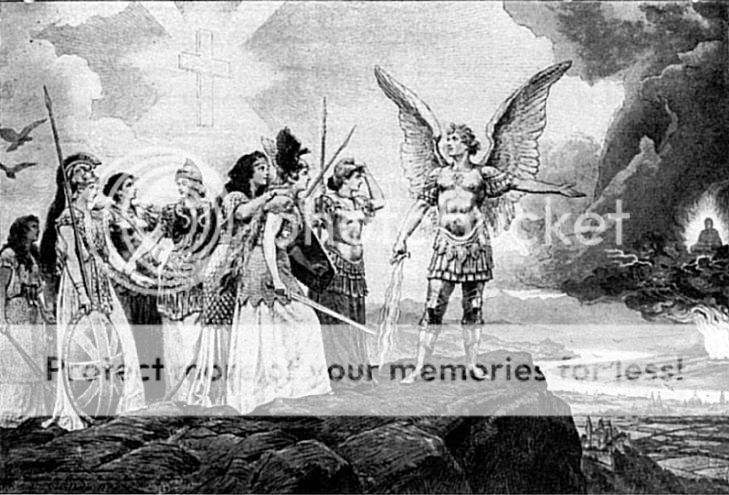
A Christian propaganda painting: The countries of Europe, led by Archangel Michael, watch with concern the progress of Asian religions.

A Christian propaganda painting: The countries of Europe, led by Archangel Michael, watch with concern the progress of Asian religions.
The flip side of the new regime’s anti-missionary legislation was a policy of revival of China’s traditional religious traditions, the “three teachings” (Sanjiao) of Confucianism, Taoism and Buddhism—especially the first, unsurprisingly so since Jianguo was an accomplished scholar of Confucianism and had given extensive thought about its application in a modern context. Even as he (sometimes grudgingly) respected Taoism and Buddhism as key elements of Chinese culture, Jianguo was deeply convinced that Confucianism could be shaken free of the dogmatic sclerosis inherited from the Qing dynasty and turned into a universal religion, which would not only strengthen Chinese civilization as it adapted to the modern world, but also spread beyond the Sinosphere to other civilizations, in the same way—the comparison was explicit—that Christianity had spread beyond Europe to become a global religion. Already in his 1895 Manifesto to the Emperor, he had written:
It is urgent to found today an institution of Confucian learning where all the great Confucian scholars who comment the teachings and prove their dedication to follow the Way of Master Kong would be welcomed without concern of rank or seniority. They would be entrusted, according to their skills, teaching positions in the School of the Sons of the State, and they would hold themselves ready to become education inspectors. The Juren graduates who would enlist in this institution would receive teaching positions in the prefecture and district capitals. The Xiucai graduates who would enlist would become schoolteachers and would be sent to the towns and villages to teach the Way of Confucius. (…) All temples of heterodox cults would be forcibly turned into temples of Confucius. Charitable institutions and regional or professional societies will be ordered to worship only Confucius. One can thus hope to reform and guide the benighted populace, and restore the Holy Doctrine, while rolling back heterodox cults.
The people displaying outstanding skills or scholarship in this Confucian studies institution, and desiring to spread the Way of Confucius in foreign countries, would be encouraged to by an enlightened Edict. They would be given tenure at the School of the Sons of the State and at the Hanlin Academy. They would be provided with financial support while our embassies and consulates would be instructed to give them protection. (…) With this policy, the Holy Doctrine will spread throughout the savage peoples and the barbarians will be changed by China.
The people displaying outstanding skills or scholarship in this Confucian studies institution, and desiring to spread the Way of Confucius in foreign countries, would be encouraged to by an enlightened Edict. They would be given tenure at the School of the Sons of the State and at the Hanlin Academy. They would be provided with financial support while our embassies and consulates would be instructed to give them protection. (…) With this policy, the Holy Doctrine will spread throughout the savage peoples and the barbarians will be changed by China.
Apart from a trip to Hong Kong and a visit to the foreign concessions of Shanghai, the Kang Youwei who wrote these lines had not yet travelled abroad, as he would do in his 14 years of foreign exile, hence the cultural chauvinism he expresses matter-of-factly; his prejudices against foreigners would mellow in the years leading to 1912. Yet his vision of Confucianism as both the doctrinal basis of a reformed China and a universal religion remained unchanged, and his disciple Chen Huanzhang further refined the idea, especially during his years of study at Columbia University (where his PhD thesis, submitted in 1911, was The Economic Principles of Confucius and his School); upon returning to China in 1912, Chen was entrusted by his former master to oversee the foundation of a government-controlled apparatus intended to turn Confucianism into not just what it had been since the Han dynasty—the ideology of State—but the actual State religion of China, a task he embraced with gusto. This modern reinvention of an old teaching in light of, and in reaction to, exposure to Western civilization, is obviously reminiscent of the similar transformation in Meiji Japan of Shintoism from a folk religion into the official State religion, and in practice was implemented in much the same way. It was in 1913 that the anniversary of Confucius was made into a national holiday in China, as it would later be in Korea, Vietnam and Malaysia.

Chen Huanzhang as Great Priest of Confucius.
One cannot emphasize enough that this version of Confucianism, which is the one most people in the world have come across and are familiar with, bears little resemblance to the one which the Sinosphere had up to then been familiar with. It is to pre-Qian Confucianism what born-again evangelical Christianity is to the traditional version. Certainly, the Master himself would be puzzled to see his teachings turned into a religion, when he himself assumed a pointedly agnostic position on supernatural issues, but one could argue that Confucianism had already been given a transcendent dimension back in the Song dynasty, with the advent of neo-Confucianism especially as propagated by Zhu Xi (1130-1200); just as that earlier reform had been prompted by the penetration of Buddhism in the Chinese civilization, Chen’s later one was prompted by the penetration of Christianity. In fact, while the English language indifferently calls Confucianism both the pre-Qian and the contemporary versions, in Chinese they are referred to by different names: the former is known as Rujia (儒家)—the School of the Learned Ones—and the latter as Kongjiao (孔教)—the Religion of Confucius.
The internal organization of Confucianism was self-consciously based on the centralized structure of Catholicism, with a hierarchical clergy headed by Chen as Great Priest, and provincial, prefectoral and municipal levels of responsibility; overseas Chinese communities were to receive priests as well, and a special institute was founded for the training of missionaries to non-Chinese lands. The importance of lay members was emphasized from the start, with special consideration given to starting up lay ancillary organizations wherever motivated individuals volunteered for such duties. However, Confucianism retains from its traditional version a condemnation of celibacy and a general disdain for monasticism (in contrast with Buddhism and Taoism), considering that the primary role of the faithful is to raise families and contribute by their work to the economic well-being of society; familial, academic and professional achievement are considered indispensable attributes of the virtuous person. The international expansion of Confucianism was, in its early years, helped to no small extent by its reliance on the world-spanning network of Jianguo’s supporters (founded by the future emperor and by Liang Qichao in 1899, it had by 1913 grown to some 150 chapters in 16 countries), as many chapter leaders became lay members of the organization. Though it is much less the case at present, back then the interests of Confucianism and those of the Chinese executive were very much intertwined.

A modern temple of Confucius, built in the Northern Song revival style.
* Michael V. Metallo , “American Missionaries and the Chinese Revolution”, The Pacific Historical Review, Vol. 47, No. 2 (May, 1978), pp. 261-282. [Mostly unchanged quote from OTL]
[1] See “A Canny Scot”.
[2] See “The Interregnum Republic”.
[3] See “History of Chinese Aviation”.
******
Codename Fifty
Codename Fifty
When the five kinds of spy are all at work, none can discover the secret system. This is called the divine manipulation of the threads. It is the sovereign’s most precious faculty.
— The Art of War, 13:8
— The Art of War, 13:8
From The People Feel Not His Hand: Domestic Control and Law Enforcement in Twentieth-Century China by Nisha Kapoor, 2006.
In the early years of the Qian dynasty, most of the attention, especially from foreign observers, understandably focused on the new regime’s head of state, Jianguo himself (improperly but much more frequently referred to in the Western press as Emperor Kang—the habit would only be dropped in the 1940s, when his son had long succeeded him). In fact, the more important figure was Liang Qichao, who as prime minister could claim credit for most key political decisions, but who deliberately avoided the limelight and preferred to work quietly, making arrangements behind the scenes and pulling all manner of strings, though he made for a fearsome public campaigner when the occasion called for it. Yet the contemporary historian’s temptation to fall in the other extreme and dismiss Jianguo as a passive figurehead while Liang did all the heavy lifting, noticeable in several scholarly works published in the last two decades, should be avoided as well. Jianguo did involve himself in policy-making, often in close cooperation with Liang, and in certain domains also acted on his own. One of these was the creation of China’s modern intelligence apparatus.
Born of compromises and broken promises, the Qian dynasty in its early years was understandably short on trust between the factions whose power it delicately balanced against one another. This meant the inevitable politicization of law enforcement, and the creation of a multi-layered system that, while reasonably straightforward on paper, in practice resulted in a tangle of overlapping jurisdictions. Just before its collapse in 1911, the Qing dynasty had taken the first steps toward the creation of a modern Chinese constabulary, with the organization of civilian police forces at the provincial level, and this was retained with few changes by the new regime. Municipal militias were also set up, mostly staffed by recently demobilized soldiers who were thus provided with a steady income and could put their experience to lawful ends (it was until then all too frequent for demobilized soldiers to turn to banditry to sustain themselves). However, the central government was wary of leaving law enforcement matters entirely in the hands of local and provincial authorities, and, following the French model, a national gendarmerie had been set up in 1912 and placed under the control of the Defense Ministry. But with many high-ranking military officers either former revolutionaries or cronies of the late Yuan shikai, their political reliability was an open question. Jianguo therefore sought the ability to keep tabs on the military chain of command. Like all statesmen who had come to power thanks to revolutionary upheaval, he was also concerned about rooting out domestic subversion, and wanted to be able to do so without having to answer to the formal government structure, let alone pesky legislative oversight—after all, several ministers and members of parliament were to be on the watchlist. Having decided to organize what amounted to a secret police, he probably concluded that it made sense to extend its responsibilities to espionage and counter-espionage.
The creation of this secret police, soon to be called the National Security Bureau (Guo’anju 國安局) took place with the utmost confidentiality; in the government, only Liang knew about it, and only because of his close personal ties with Jianguo. As its director, the emperor chose an official with impeccable monarchist credentials, former Gansu governor Zhao Weixi, who had come to his attention with his zealous crackdowns against men who cut their Qing-era pigtails even after the Republic had been formally proclaimed (he himself had only cut his pigtail upon the proclamation of the Qian dynasty, and like many supporters of the new regime, simply kept his hair entirely shaved off in imitation of Jianguo and Liang). In order to maintain secrecy, a calculated leak was arranged when Liang shared “in the strictest confidence” deliberately misleading information about the NSB to Chief of Staff Li Yuanhong and General Zhang Xun, telling them a counterintelligence agency had been created but was being kept secret from the civilian government out of concern about foreign spies who might have sources from inside the administration. Word eventually got out about this alleged counterintelligence agency, the existence of which was publicly denied even as Liang “admitted” to Huang Xing that the rumor was true and the Bureau did exist, but that for obvious security reasons the fact could not be acknowledged to anyone but the highest government officials. It would be years until the NSB’s true purpose was known, and even then all details of its size, funding and internal structure remained closely guarded secrets well into the post-World War 2 period. [1]
The core of the NSB’s intelligence-gathering apparatus was the transnational organization which Kang and Liang had founded in 1899, and which is most widely known by its first of several names, the Imperial Protection Society (Baohuanghui 保皇會). After the failure of the Hundred Days reform movement, Kang and Liang had escaped Dowager Empress Cixi’s grasp by fleeing to Vancouver, Canada, where they had with the help of the local Chinese community’s richest businessman [2] set up the first chapter of what would become a global network of activists, fundraisers, lobbyists and sleeper agents, recruited from all walks of life. Although it had after Emperor Guangxu’s death in 1908 lost some membership and influence to its rival the United Allegiance Society (Tongmenghui 同盟會) set up by Sun Yixian and Song Jiaoren, by the time of Kang’s accession to power in 1912 it boasted some 150 chapters spread out in 16 countries on four continents. Fundraising ran the gamut from voluntary donations to decoy businesses, one of which was the largest Chinese restaurant in Chicago, and the organization had set up paramilitary training centers, several of them in California and Washington State. It also ran a number of schools, newspapers and community centers for members of the Chinese diaspora. Since this world-spanning network was personally managed by Kang even after he became Emperor Jianguo, he could easily use it for the new purpose of setting up overseas spy rings, and turn its more committed members into NSB operatives.
The NSB, Jianguo had decided, was also to comprise a women’s branch, at the head of which he appointed Xue Jinqin (referred to in Western sources as Sieh King King). Such a choice was hardly random. The daughter of a liberal-minded merchant from Guangdong, Xue had attended missionary schools in Shanghai and Tianjin, where she had developed fiercely progressive ideas about the status of women. She had first earned fame when speaking at a public meeting in Shanghai when she was all of 16, voicing her protest against the government’s decision to grant Russia special rights in Manchuria in the wake of the Boxer rebellion. In 1902, at the ripe old age of 18, she travelled to San Francisco, where her reputation as an orator had preceded her; a banquet was held in her honor and she was invited by the Baohuanghui to deliver a speech in a Chinatown theater hall. Before a rapt audience of Chinese men and women, and a number of Western reporters, she spoke about social reform in China, and in particular about the urgent need for equal rights for women. Excerpts of her speech were quoted in the Chung Sai Yat Po and the San Francisco Examiner.
In fact, although the date of her joining is not known for certain, she was probably already a member of Kang Youwei’s organization at that point, which explains the support she received from it. After spending three years at the University of Berkeley, she moved to Los Angeles, where she stayed with Tom Leung, a rich businessman and one of the core members of the Baohuanghui in the United States. Through his mediation, she was personally introduced to Kang, and recently declassified Chinese government archives confirm that Kang, impressed by her driven personality, entrusted her with a highly sensitive secret mission: nothing less than the assassination of Dowager Empress Cixi. The details of the operation were not recorded but presumably involved the infiltration of the Empress’s personal retinue, which only a woman could do. She was given the codename “Fifty” in reference to a poem by Li Shangyin (812-858):
For no reason the gorgeous zither has fifty strings,
Each string, each fret, recalls a youthful year.
Master Zhuang woke from a dream puzzled by a butterfly,
Emperor Wang reposed his amorous heart to the cuckoo.
The moon shines on the sea, pearls look like tears,
The sun is warm at Lantian, the jade emits mist.
This feeling might have become a memory to recall,
But, even then, it was already suggestive of sorrows.
Each string, each fret, recalls a youthful year.
Master Zhuang woke from a dream puzzled by a butterfly,
Emperor Wang reposed his amorous heart to the cuckoo.
The moon shines on the sea, pearls look like tears,
The sun is warm at Lantian, the jade emits mist.
This feeling might have become a memory to recall,
But, even then, it was already suggestive of sorrows.
The plot was years in the making but, as it turned out, Cixi died of natural causes before it could be carried out. Xue Jinqin then returned to the United States and enrolled at the University of Chicago.

Xue Jinqin.
When Kang Youwei declared himself Emperor and set up his intelligence service, he decided that Xue Jinqin, with her intelligence, dedication and loyalty, was the best choice as head of its women’s branch. Secretly contacted by the Chicago chapter of Kang’s organization, she came back to China, where she was given a cover position as director of an educational foundation for women in Nanjing.
Early female NSB agents were of two very different backgrounds. On the one hand, well-educated, fiercely patriotic young women such as Xue Jinqin herself, who joined in order to contribute to the restoration of their country’s power while at the same time pursuing a career customarily viewed as masculine. On the other hand, young women from poor families who had found themselves sold into prostitution, and who found in their involvement in secret police work a way to use their unfortunate circumstances for the good of the country. Many early recruits thus came from the Women’s Espionage Training Institute, which had been set up by prostitutes in Shanghai during the 1911 revolution; its manifesto read:
We were unhappily born as women and have unhappily been forced into prostitution. Our lives have been very sad, but though we have ended up in brothels, if we look back to find the root cause of our situation, it is not because we are not descendants of the Yellow Emperor. Because we have not been given the advantages accorded others from birth, we must not die without having gained those advantages. Thus, we have chosen the kind of work that women in China’s better family either cannot possibly do or would never consent to doing, and we have thus created a women’s spying brigade. We pray that in some small way we may fulfill an obligation as one element of our nation’s people… What difference does occupation make when it is a question of duty?
After 1912, the women’s branch of the NSB, which in honor of the pioneers of the Women’s Espionage Training Institute was informally renamed the Society of the Daughters of the Yellow Emperor (Huangdi Nü’er Hui 黄帝女兒會), began systematically seeking recruits from the world of prostitution, especially in treaty ports and extraterritorial foreign concessions. According to Gail Hershatter’s findings (see Dangerous Pleasures: Prostitution and Modernity in Twentieth-Century Shanghai), by 1914 virtually all of the houses of pleasure catering to wealthier Westerners in Shanghai had been secretly put under NSB management in order to gather intelligence in the form of pillow talk, and to induce prominent individuals into honey traps for blackmail purposes. The same policy was conducted wherever a large enough foreign presence warranted.
But the most mysterious member of the Society of the Daughters of the Yellow Emperor in those early years came from neither background, at least as far as can be ascertained. Very little is known about her, not even her real name. When she joined the NSB, she went by the moniker of Azure Cloud, and that is how all declassified government records refer to her. She claimed to be 29 years old, and most tantalizingly, hinted at a past career as a member of the Red Lanterns, a corps of teenage girls who had fought alongside the Boxers in the 1900 rebellion. The Red Lanterns (who later became the topic of several films as well as a famous 1960s-era wanhua series) were believed to have supernatural powers such as healing, flight, and control over the wind with their magical fans; more mundane descriptions have them maintaining public order in Boxer-controlled areas, tending to the wounded, gathering intelligence, and engaging in arson. There indeed was a Red Lantern member named Azure Cloud, who was about 17 at the time and said to be both very beautiful and skilled in martial arts; no conclusive evidence exists that said girl and the woman referred to by that name in NSB archives are the same person, but she apparently fit the depiction on both counts, being both quite good-looking and a highly proficient practitioner of the White Crane fighting style. She became a Buddhist nun in 1923, though she returned to secular life after the Japanese invasion to take command of a resistance cell, and was killed in action in 1937.
[1] For a glimpse of how the NSB will turn out in later decades, see “The Sorcerer’s Apprentice” by carlton bach.
[2] See “The Wheel of Eternity” by Doctor What.
******
Our Gates to the Glorious and the Unknown
Our Gates to the Glorious and the Unknown
In China the railway question is one of the most vital importance.
— Edwin John Dingle, China’s Revolution 1911-1912: A Historical and Political Record of the Civil War, 1912
— Edwin John Dingle, China’s Revolution 1911-1912: A Historical and Political Record of the Civil War, 1912
From Iron Qi Lines and Fire Chariots: The Railways of China by Benjamin T. Dunn, 1993

Advertisement for the North China Imperial Railways published in the December 1910 issue of the Far Eastern Review.
The history of railways in China had begun—or rather, inauspiciously enough, not begun—in 1863, when a group of mostly British and American businessmen had petitioned Li Hongzhang (then the governor of Jiangsu) for the right to build a rail line between Shanghai and the ancient city, and major silk-producing center, of Suzhou. Although a co-founder of the Self-Strengthening Movement, Li was at that early stage unconvinced of China’s need for rail transportation and had turned down the request. Undeterred, the businessmen had invited the railroad engineer Sir Macdonald Stephenson (no relation to George Stephenson), who had already overseen the development of India’s first rail lines. The following year, Stephenson had submitted to the Chinese government a far-reaching project for a network radiating from Hankou in the middle Yangzi valley, with lines to Beijing and Tianjin in the North, Shanghai in the East, Canton and Hong Kong in the South, and going all the way across the Himalayas to Burma and Calcutta in the West. Too ambitious, and too obviously designed to serve British economic interests in China, the project had another critical shortcoming which turned even Sir Frederick Bruce, the British ambassador, against it: it failed to factor in the fact that Chinese law had few provisions for eminent domain, which would make the expropriation of the necessary tracts of land a slow and expensive affair. Bruce had warned Stephenson in the following terms:
Do not reason about China according to your experience of India. The [Chinese] government does not concern itself with civil law and it is particularly mindful of land property rights, to which the people are highly attached. It will be a long time before it takes an expropriation decree on behalf of the public good.
Stephenson had ignored Bruce’s warning and founded the China Railway Company in order to put forward various projects for regional rail lines, but none of them came to fruition and the company folded four years later.
However, in the following decade, a number of progressive officials had gradually warmed to the idea of Chinese railways and were lobbying the central government in favor of it. Li Hongzhang, among others, was now a supporter of rail transportation, as he had in the meantime sponsored the development of a modern coal mine in Kaiping (in order to provide the nascent Chinese steam-powered commercial fleet and his own future Beiyang Navy with domestically-produced fuel) and reasoned that transporting the coal would be cheaper by rail; from there he had come to understand the advantages of rail as an instrument both of economic development and strategic defense. In a memoir to the imperial court in 1880, he wrote “Our country faces unprecedented challenges; we should therefore address them with unprecedented methods”. The cause of Chinese railways suffered a temporary setback when a 16-kilometer line was built by British businessmen between Shanghai and Wusong in 1876; intended as a practical example of the advantages of rail transportation, the initiative backfired since, a fait accompli of dubious legality, it was perceived as a unilateral encroachment on Chinese sovereignty, and operations had to be discontinued. But a symbolic watershed was crossed in 1881 when Claude W. Kinder, the British engineer hired by Kaiping mine manager Tang Jingxing, assembled with the latter’s connivance the first locomotive ever built in China, using a boiler and other parts from a portable steam winding engine borrowed from the colliery. This modest 2-4-0 machine, christened the Rocket of China and decorated with gilded dragons on its sides, would remain in operation until 1920, and enjoy a second lease on life at the beginning of the Second Sino-Japanese War in 1934, when shortages in locomotives caused it to be brought out of retirement (its long career ended for good in 1945, and it is now displayed in the Nanjing Museum of Trains and Railroads) [1]. As for the workshop it was assembled in, it grew into Tangshan Locomotive and Rolling Stock Works (唐山机車車輛廠), China’s first such company.

The Rocket of China.
The Kaiping railroad was extended in two installments over the following years: it linked Tangshan and Tianjin in 1888, and Tangshan and Shanhaiguan in 1894; meanwhile, Taiwan governor Liu Mingchuan had built a line between Jilong and Xinzhu via Taibei, but on the eve of the First Sino-Japanese War the total length of railroads on Chinese territory was an unimpressive 502 km. The defeat against Japan removed all lingering domestic objections to the development of a Chinese railway network, and Kang Youwei had accurately captured the new national consensus when he wrote in his 1895 Manifesto to the Emperor:
There is a way to shrink a journey of ten thousand li to a short distance and bring the decade and the month to the length of a night and a day, thus facilitating the transport of troops and weapons, also facilitating the deployment of relief in case of famine, river transport, contacts between administrations, the studies of scholars, the transport of freight for merchants, the work of those who carry loads for a living, and the unification of [regional] cultures. All these improvements, far from costing the country money, could in fact generate tens of millions of taels in profits. For all this, railroads are second to none. The advantages of railroads are known throughout the empire: some have been operating for a while beyond the Shanhai Pass [in Manchuria]. Today their effectiveness has been proven anew for troop transport. If they have not been built in other provinces yet, it is simply because of the huge amounts of capital required, which are difficult to gather.
Even more importantly, Japan’s victory had given the signal for a “scramble for China” in which every imperialist power sought to expand its area of influence in that country, using railway concessions as the primary method of penetration into the inland provinces. In 1898, during the Hundred Days reform movement, Kang Youwei had set up a Central Board of Mines and Railroads to allow the Chinese government a degree of oversight on the fast-accelerating pace of railway construction (by then, foreign powers had obtained the rights on 6,750 km of lines, most of which would be operational by 1912), and its prerogatives survived Cixi’s crackdown on the reformists. The Boxer Rebellion in 1900 dampened foreign schemes about a possible carve-up of China, but the “soft imperialism” of leased railway development continued unhindered: Chinese Eastern Railway in Manchuria (linking Chita and Vladivostok, and branching off at Harbin to Port-Arthur) by Russia, Yunnan Railway (linking Haiphong and Kunming) by France, Shandong Railway (linking Qingdao to Jinan) by Germany, etc. , and after its victory against Russia, Japan started work on the South Manchuria Railway. Meanwhile, by 1905 the Chinese had developed enough local expertise to start building railways without relying on foreign engineers, and the Chinese business community was increasingly taking the initiative of gathering capital to invest in railway construction. Thomas Millard, New York Herald correspondent for China, wrote in his 1906 book The New Far East:
I think it probable that during the next twenty years more miles of railways will be built in China than in any other part of the world; and while foreigners may assist in providing the capital to finance this tremendous industrial evolution, the prime movers will be the Chinese themselves, who will insist, as far as they are able, upon retaining substantial control. This disposition supplied one of the forces which led to the reclaiming of the Canton-Hankow road, and it is safe to say that hereafter no important commercial or industrial concession will be willingly granted by the Chinese government in which Chinese capitalists are not interested, or in which the government does not reserve the right to take it over under equitable conditions, especially if public utilities are involved. The chief reason is that the Chinese have discovered that railroads are convenient and valuable in the development of the country. (…) Wealthy Chinese in all parts of the Empire are now willing, even anxious to invest in railroads. In fact, a disposition to exclude foreigners from these enterprises is growing, and would probably be put into effect did not internal conditions at present make the foreigners a practical necessity. (…)
The Chinese are rapidly arriving at the point where they will practically be able to dispense with foreigners in the operations of their railroads. The entire northern division of the Imperial Railways of North China had not, the last time I travelled over it, a single white employé. Station agents, train despatchers, conductors, guards, locomotive drivers, road inspectors, etc., were all Chinese. It will be a revelation to many Westerners to make a stop at Tong-shan [Tangshan], where are the principal work-shops of this railroad, and where with Chinese workmen the company is building many of its own locomotives, all its own rolling stock, pump machineries and similar necessities. (…) The impulse acquired by modern industries in China within the past ten years is really remarkable.
The Chinese are rapidly arriving at the point where they will practically be able to dispense with foreigners in the operations of their railroads. The entire northern division of the Imperial Railways of North China had not, the last time I travelled over it, a single white employé. Station agents, train despatchers, conductors, guards, locomotive drivers, road inspectors, etc., were all Chinese. It will be a revelation to many Westerners to make a stop at Tong-shan [Tangshan], where are the principal work-shops of this railroad, and where with Chinese workmen the company is building many of its own locomotives, all its own rolling stock, pump machineries and similar necessities. (…) The impulse acquired by modern industries in China within the past ten years is really remarkable.
The first major railroad designed, financed and built entirely by the Chinese was the Beijing-Kalgan line. Kalgan (now Zhangjiakou) is a city 200 km northwest of Beijing, at the gate to Mongolia, and was a regional trading emporium where products from Central Asia arrived on camelback to be sold on the Chinese market. Britain had intended to build the railroad in 1902, but Russia had opposed such a move into its own area of influence in China, and in 1905 the Chinese decided to build it themselves. The chief engineer of the project was Zhan Tianyou (1861-1919), known to Westerners as Jeme Tien Yow, who would go down in history as “the father of Chinese railways”. Zhan had been sent as a twelve-year-old kid on a government program to the United States to receive a Western education, and by 1881 had received a degree in civil engineering from Yale University. He later interned with Kinder, honed his skills participating to the construction of the Beijing-Mukden line, and in 1902 was appointed by Yuan Shikai (then Viceroy of Zhili) to build a 32-km line to be used by the Dowager Empress when visiting the imperial ancestors’ tombs, an assignment he completed within budget and ahead of schedule. The Beijing-Kalgan line would be a technical challenge, as its route took it across the rugged Yanshan mountains (on the crest of which runs a section of the Great Wall), but even though Zhan had to build a switchback system and dig a tunnel, he still managed to complete the project in 1909, fully two years ahead of schedule and with funding to spare.

Zhan Tianyou.
Aside from starting to build its own railways, China in the last years of the Qing dynasty was also conducting a policy of repurchase of the ones built by foreigners, as well of renegotiation of earlier agreements, using increasingly fired-up domestic public opinion as a lever against foreign interests. When work on the Beijing-Hankou line, leased to a French-Belgian consortium, had begun in 1898, the Chinese government had inserted a clause in the agreement that would allow it to buy the railroad after ten years, and when the line was inaugurated in 1905, it notified its intention to do so. The line had proved highly profitable, generating a net profit of 5,047 million taels in its first year of operation, and increasing from there (all the more so as, in the perspective of the repurchase, the consortium had cynically slashed all expenses on maintenance). The transfer of ownership was completed in January 1909, although the loan taken up by the Chinese government for the transaction did not do its financial situation any good. As for the policy of renegotiation, it was spelled out by the Chinese vice-minister of foreign affairs, Liang Dunyan, in 1906:
This government does not consider itself bound by agreements concluded under duress prior to 1900, and the definitive contracts shall be established on modified bases in order to give satisfaction to public opinion in China.
This was the first instance of a practice that the following dynasty would resort to much more systematically, that of invoking patriotic public opinion in its dealings with foreign interests; but one must admit that it was not a question of choice, as the Chinese population was, in this formative period of modern Chinese nationalism, more and more hostile to real and perceived imperialist encroachments on Chinese sovereignty, and the government ignored such sentiment at its peril. The first agreement to be renegotiated concerned the construction of the Beijing-Pukou line by a British-German consortium in 1908: both the British and the German delegates yielded to Chinese pressure, resulting in the construction to be done under Chinese supervision and by engineers chosen by China, with ulterior control of the line going to the Chinese government. This set a precedent for later renegotiations. Another change at the end of the decade was the relative decline of purely national projects, with multinational banking consortia becoming the dominant players in the Chinese railway game, a shift welcome by the Chinese government as it removed the risk of any one country using new rail lines to expand further its area of influence, although it further increased China’s budgetary woes.
In the meantime Chinese civil society, which as we have seen was becoming increasingly vocal in its nationalism, was seeing a number of local initiatives take place to develop rail lines at the provincial level. Led by businessmen and provincial officials, and relying on locally raised capital rather than on foreign loans, those met with mixed success due to mismanagement and a series of corruption scandals, but they resulted in the population, especially in the southern provinces, opposing the Chinese government’s decision to take on more loans of its own. Such borrowing, no matter its justifications, was widely unpopular, as it led to tax increases and led the population to conclude that China’s assets were being taken over by Western banking consortia. In the process, railways became a volatile political issue, one that pitted both provincial governments against Beijing, and Chinese civil society against foreigners; riots were beginning to break out, to the cries of “No foreign control on Chinese railways!” Things came to a boil in January 1911, when Sheng Shuanhuai was appointed Minister of Communications and put in charge of straightening out the financially murky situation of China’s domestically-managed railways: Sheng was notoriously corrupt and, worse still, was seen (not altogether inaccurately) as overly friendly with foreign interests. The last straw was when he announced his intention to nationalize the provincial railways and, simultaneously, agreed to yet another loan: together, the two decisions were perceived as evidence that Sheng was going to sell the railways to foreign bankers. Provincial associations sprang up to defend the railways, especially in Sichuan, where the movement was placed under the leadership of two members of Kang’s organization, and received the support of anti-Manchu secret societies. When the central government tried to crush the movement, protests flared up throughout the province and snowballed into a general uprising. Military reinforcements were brought in from neighboring Hubei, where a local Tongmenghui cell took advantage of the situation to spark a mutiny in the Wuchang garrison and seize control of the city; the revolution that would bring down the Qing dynasty had begun, and it was over railways.

The railway network in North China, 1912.
The collapse of the Qing dynasty did not result in the pace of railway construction slowing down: lines in the process of being laid down by foreign interests were completed without hindrance even as the revolution was taking place, and likewise the political horse-trading of the Interregnum Republic had little short-term impact on railways. Indeed, it was one of the issues the republicans and neo-monarchists saw eye to eye on; Sun Yixian, for one, was such a railway enthusiast that after he had requested the portfolio of transportation in the Kang-Liang provisional government, and although he had resigned in May 1912 when Kang began the preparations for imperial restoration, he had in his three months as transportation minister designed a highly ambitious project for laying some 160,000 km of railroads throughout China. While this project, in its utter lack of realism, shows that Sun was seriously out of touch with basic facts of Chinese geography (note, in particular, the density of rail lines in virtually uninhabited parts of Mongolia, Xinjiang and Tibet, including some that would have been running at altitudes of over 6,000 meters), it shows how committed the republicans were to improving the country’s rail network, which as of 1912 comprised 9,820 km of lines—comparing favorably in absolute if not relative numbers with Japan, whose own rail network at the time had a total length of 7,840 km—with more in the process of being laid down. It is, incidentally, ironic that Sun’s project inadvertently bore the same name (Build the Nation) that Kang would choose for himself when he proclaimed himself emperor.

Sun Yixian’s project.
Because the previous dynasty’s reckless policy of loan-taking had been a significant factor in its overthrow, the new one was more careful in its approach to capital acquisition. Having successfully negotiated the emergency “reorganization loan” in March 1912, which gave it some breathing room, the provisional republican government and its neo-imperial successor were in a more confident position to borrow funds on less disadvantageous terms than had usually been the case until then [2]. In September 1912, this policy shift was concretized by the signing of the Longhai Contract with a Franco-Belgian consortium, the Compagnie Générale des Chemins de fer et Tramways en Chine, for a loan of 250 million francs (at 5% interest) for the prolongation to the East and West of the Luoyang-Kaifeng line, which the firm had obtained in 1903 and built between 1906 and 1909 to Yinghao. The agreement included the absorption of the existing line into this new one, which would link Lanzhou (Gansu) to Lianyungang (Jiangsu) via Xi’an, Zhengzhou (where it would intersect the Beijing-Hankou line), Kaifeng, and Xuzhou (where it would intersect the Tianjin-Pukou line); this made it, at 1,800 km, the longest line in China. As Jean Ullens de Schooten wrote in The Railways of China in 1928,
The Lung-hai Contract was the first one signed between a foreign firm and the government of the Tsien [Qian] dynasty. It constituted a brand new procedure which has since then become the norm. A single document deals with issues of borrowing, construction and exploitation. It is, compared with its predecessors, much more streamlined and transparent.
This was largely the work of Robert de Vos, former Belgian consul in Tianjin and Kobe, who after leaving the diplomatic corps, had become a freelance lobbyist and middleman for Western banking consortia in China. He met with further success by negotiating on behalf of the Société Belge des Chemins de fer en Chine and the Société Française de Construction et d’Exploitation des Chemins de fer en Chine a loan of 10 million pounds (an identical amount as the previous agreement) for the construction of a North-South line going from Datong to Chengdu.
However, the new Chinese regime had as little control as the previous one over the extension of railways under respective Japanese and Russian ownership in the Manchurian provinces, having no meaningful leverage over either power, and both the (Japanese-owned) South Manchurian Railway and the (Russian-owned) China Eastern Railway continued adding new lines with only cursory acknowledgements to Chinese national sovereignty. This was an especially acute concern for China, as both countries had common borders with it, and their respective national networks were linked with the lines they kept building on Chinese soil, blurring the distinction between “soft” and “hard” imperialism. When, in late 1913, Russia started work on a rail line between Verkhneudinsk on the Trans-Siberian and Urga in Mongolia, the initiative was universally perceived in Chinese political circles as the first step towards Russian satellization of the territory in the same manner as Manchuria, where Harbin had become a Russian city in all but name; but diplomatic protestations notwithstanding, there was nothing China could do to oppose the move, all the more so as Russia and France were then in the friendliest of terms, and the Qian dynasty could not afford to antagonize the latter, being dependent on its continued goodwill in too many ways.
This concern was one of the reasons the new regime embarked on an ambitious policy of railway construction, using the profits generated by existing lines under central government management to finance the building of new ones, in a self-reinforcing cycle of capital investment and generation, and completing the shortfall with the emission of national bonds. Already, in the wake of the narrowly averted Mongolian secession in the spring of 1912, the decision had been taken to establish a rail link between the territory and the Chinese home provinces in order to tie it more closely to the rest of the empire and, if necessary, make troop deployment in the region easier. This priority assignment was entrusted to Zhan Tianyou in person, with the line starting in Kalgan (already linked to Beijing thanks to Zhan’s earlier work), following a westerly route through Datong, Hohhot, Baotou and Wuyuan, and from there going due North to Urga. Preliminary work started in early 1913 and the line was completed at the end of 1917. In the South, the construction of the Chengyu line between Chengdu and Chongqing, begun in 1909 but interrupted in 1911, was completed in 1914; and Changsha was linked to Shaoguan on the one hand (thus making train travel between Canton and Beijing possible) and with Nanning via Guilin and Liuzhou on the other; both lines were inaugurated in 1916. The nationalization of the provincial lines, which as seen above had proved an explosive issue in the last year of Qing rule, was postponed until tempers had cooled and, more importantly, until capital was available to fund the operation, as relying on a foreign loan to that purpose would be politically imprudent. A new emission of bonds was considered in 1914, but the outbreak of World War 1 resulted in the project being shelved until further notice. However, communications minister Liang Shiyi (whose portfolio included railways after the Transportation Ministry was merged with his own following Sun’s resignation) did set up a Railroad Standardization Board in April 1913, in order to address the issue of wildly varying standards throughout China’s rail network. Indeed, rail lines had up to now been run with no consideration for any coherent nationwide norm, each country using its own on the lines it operated, and even the provincial governments unilaterally choosing their own standards, interoperability be damned. About the only constant was the use of the standard gauge, and even that came with exceptions, namely the Yunnan and Shanxi lines (which used narrow gauge) and the Russian lines in Manchuria and Mongolia (which used broad gauge). Some 40 different types of freight cars were in use when, by Kinder’s estimate, six would have been enough; signalization was non-uniform; rolling stock from certain countries could not even be attached to that of others without modifications; and the rates and accounting methods varied from line to line. Liang Shiyi appointed Yale graduate Wang Jingjun as Board director, and hired as a technical advisor Charles Francis Adams, former Pacific Union Railroad president (and grandson of John Quincy Adams), who had dealt with a similar problem in his home country [3]. Although the complete standardization of China’s railways would not be achieved until 1945, by 1916 the more glaring interoperability problems on domestically-managed lines had been satisfactorily addressed, and a relatively coherent national rate and accounting system was in place.
The development of railways, as Millard had observed in 1906, had the added bonus of encouraging the growth of the domestic industrial base, whether primary industries (coal and iron mines, iron foundries) and transformation ones (manufacturing plants for locomotives, rolling stock and other equipment): even though China kept importing much of its railroad supplies, through no choice of its own in the case of foreign-controlled rail lines, it was increasingly relying on domestic suppliers. A company like Tangshan Locomotive and Rolling Stock Works, which had started out humbly enough with the assembly of the aforementioned Rocket of China, was already employing some 3,000 workers in 1905, and by 1915 its size had more than doubled to respond to increasing demand from the rapidly-expanding domestic train transportation network. This growing manufacturing capability would soon come in handy.

[1] See Doctor What’s “The Road to Yakutia”.
[2] See “The Years of Salt and Rice”.
[3] Misidentified as his younger brother Henry Adams in Joseph Marchisio’s otherwise excellent Les Chemins de fer chinois: Finance et diplomatie (1860-1914).
Last edited:
